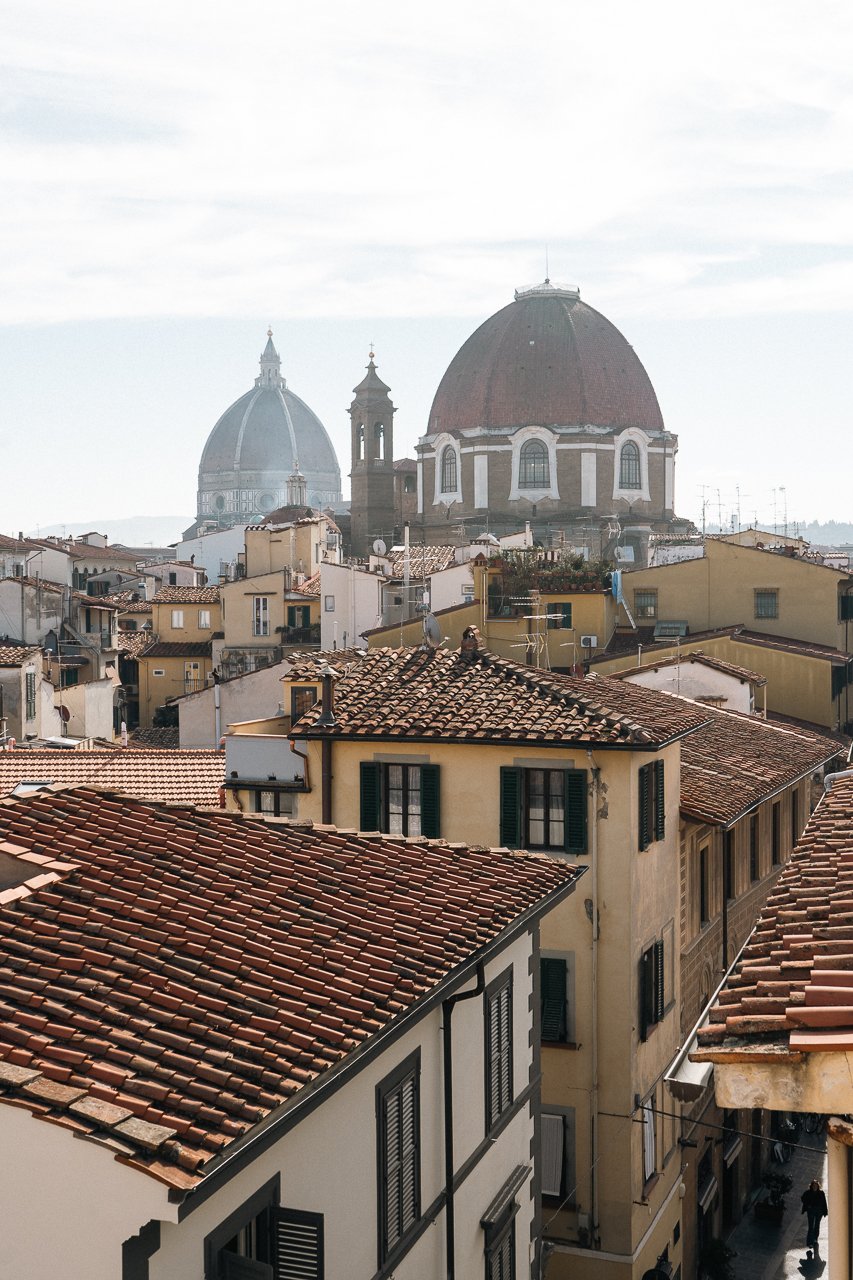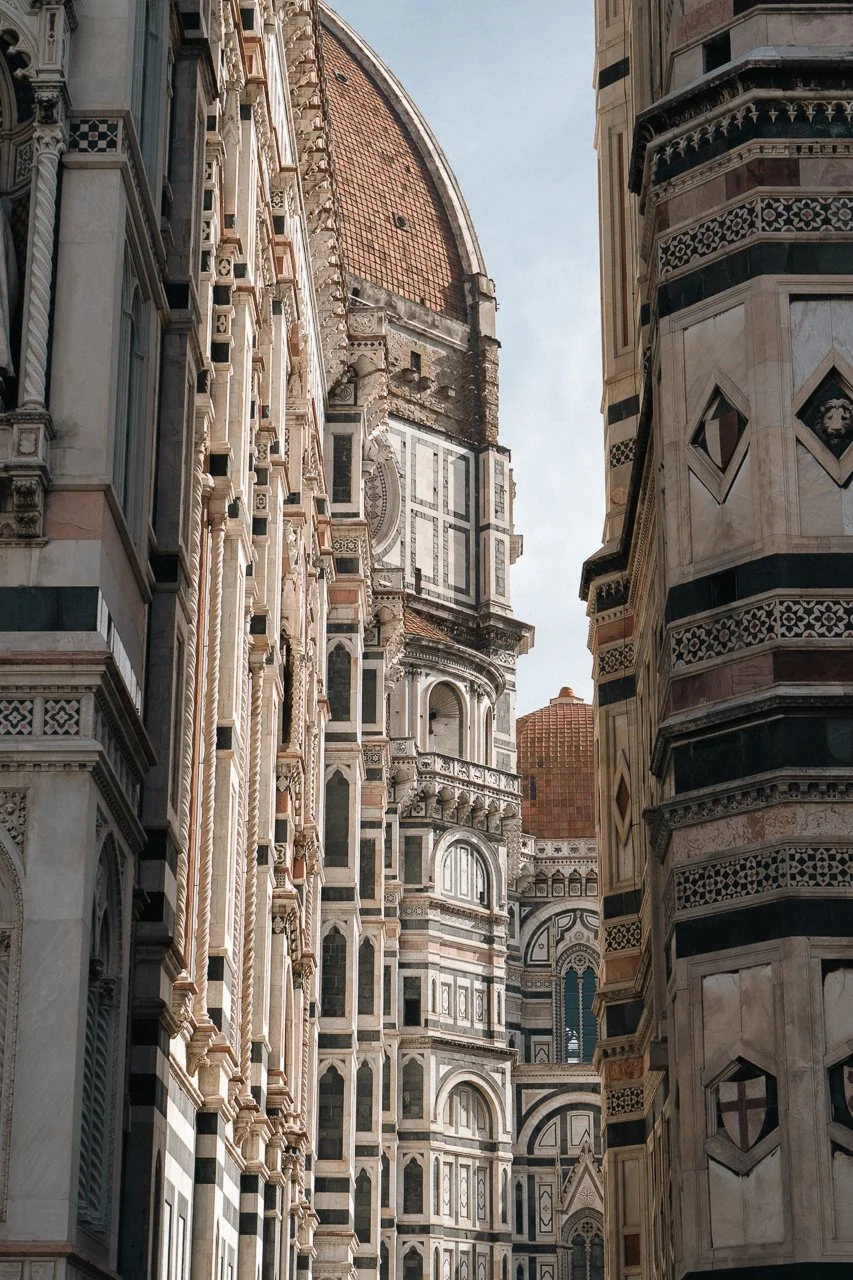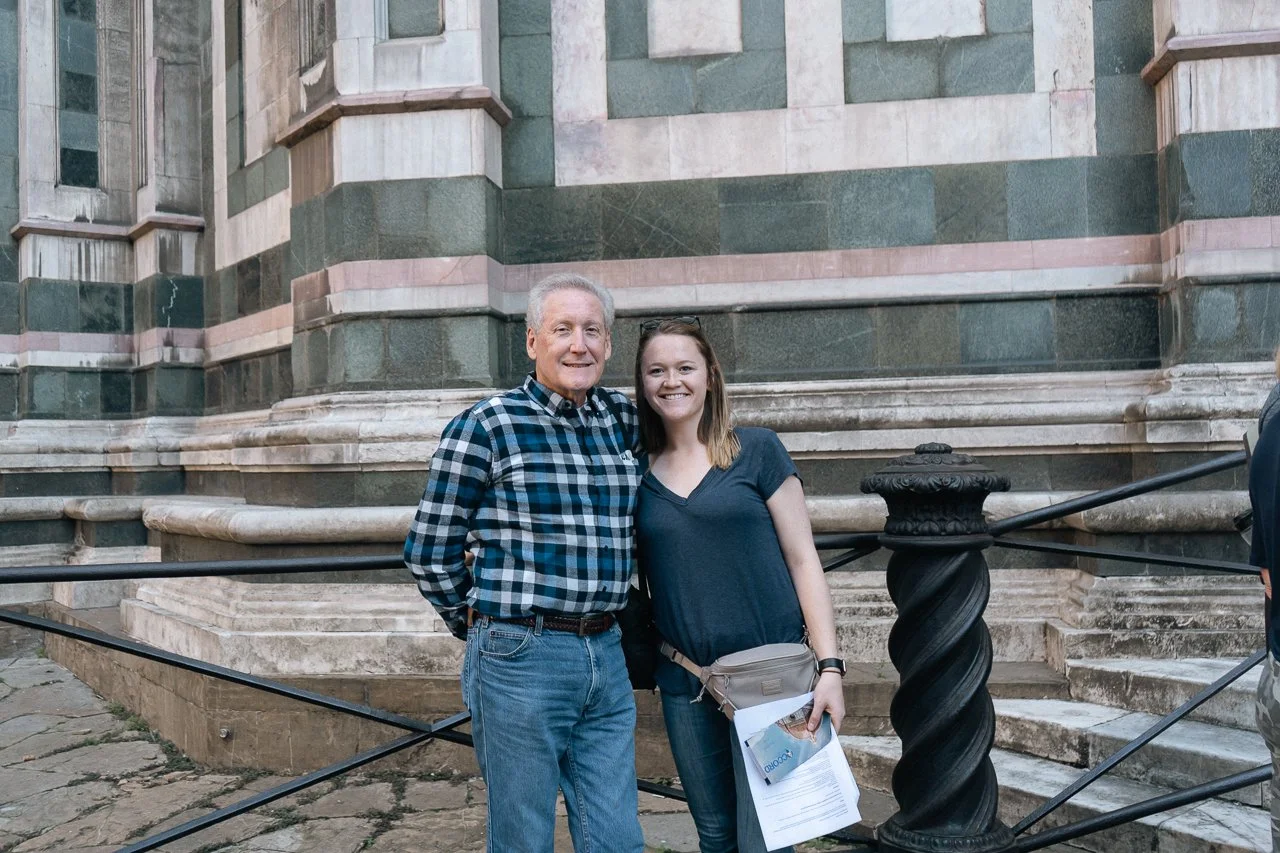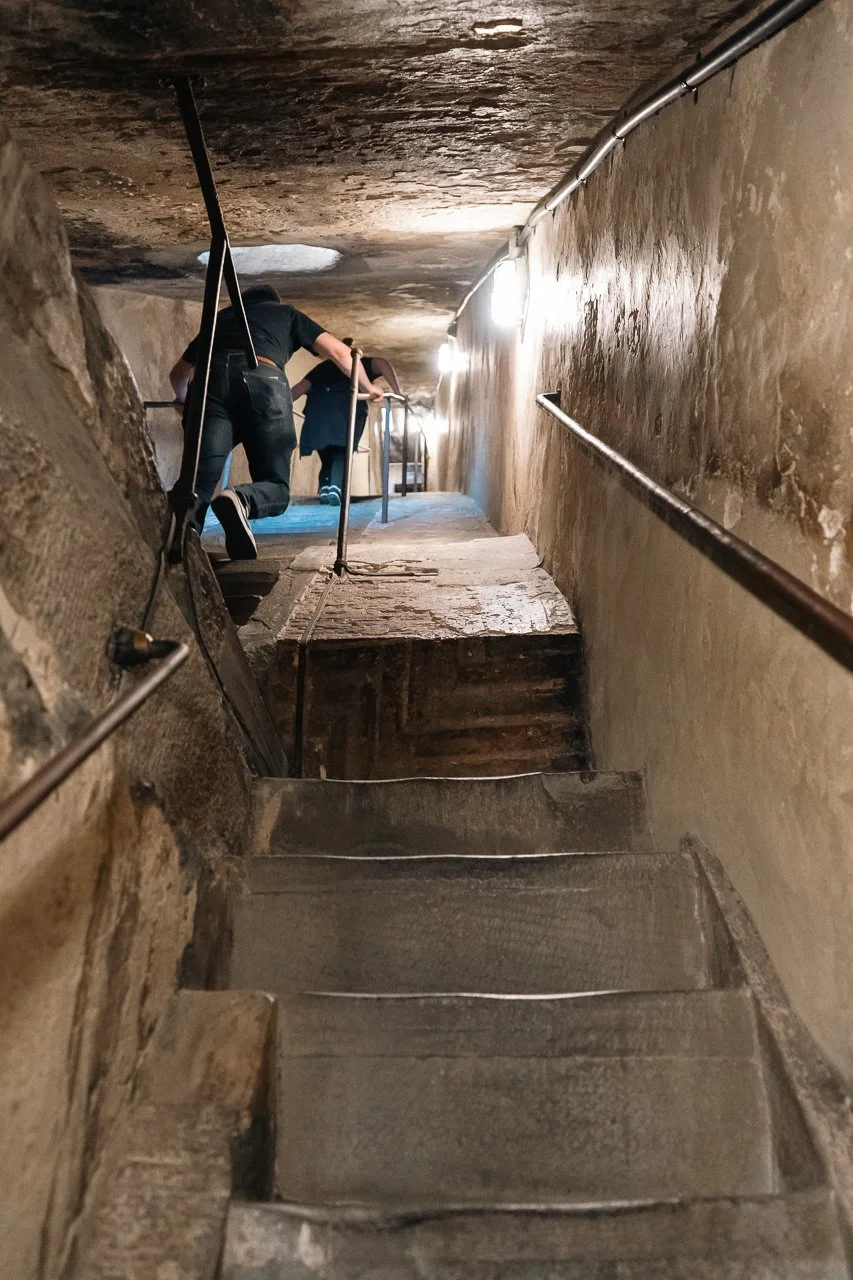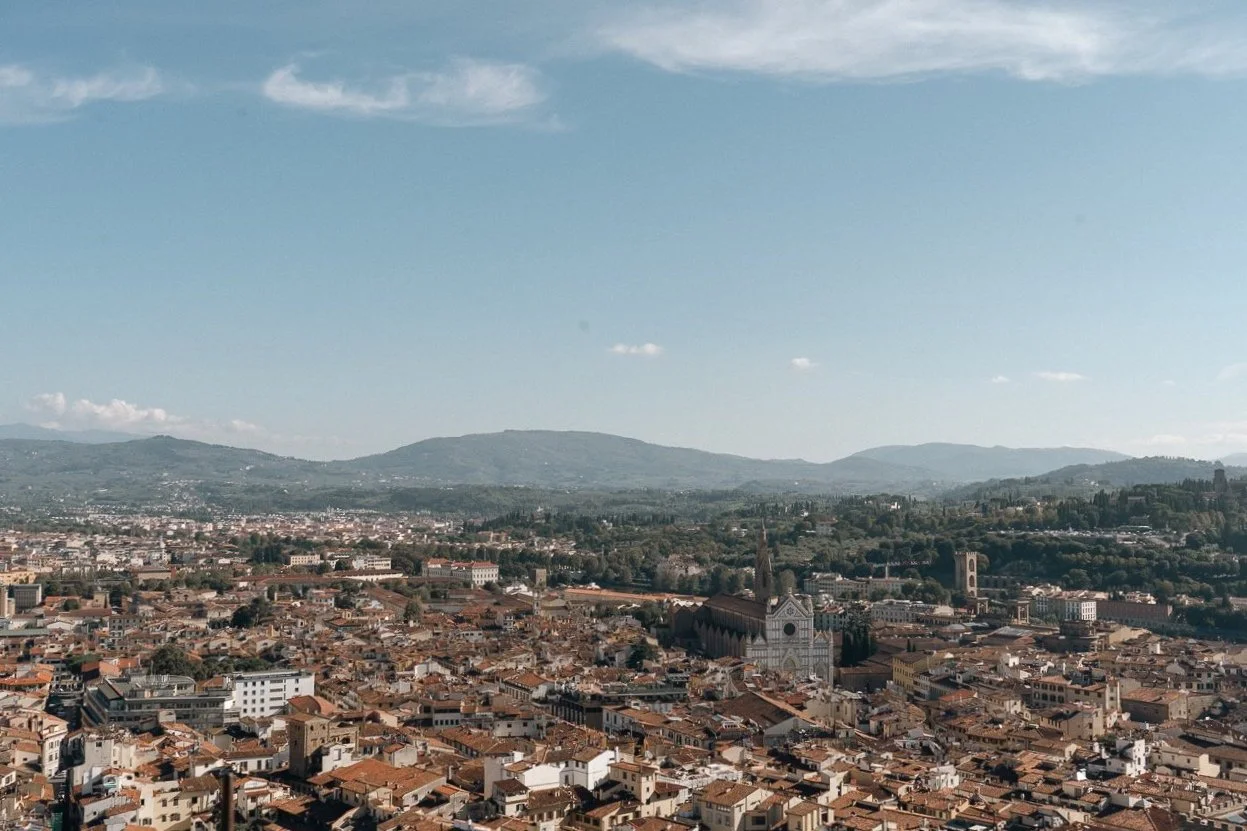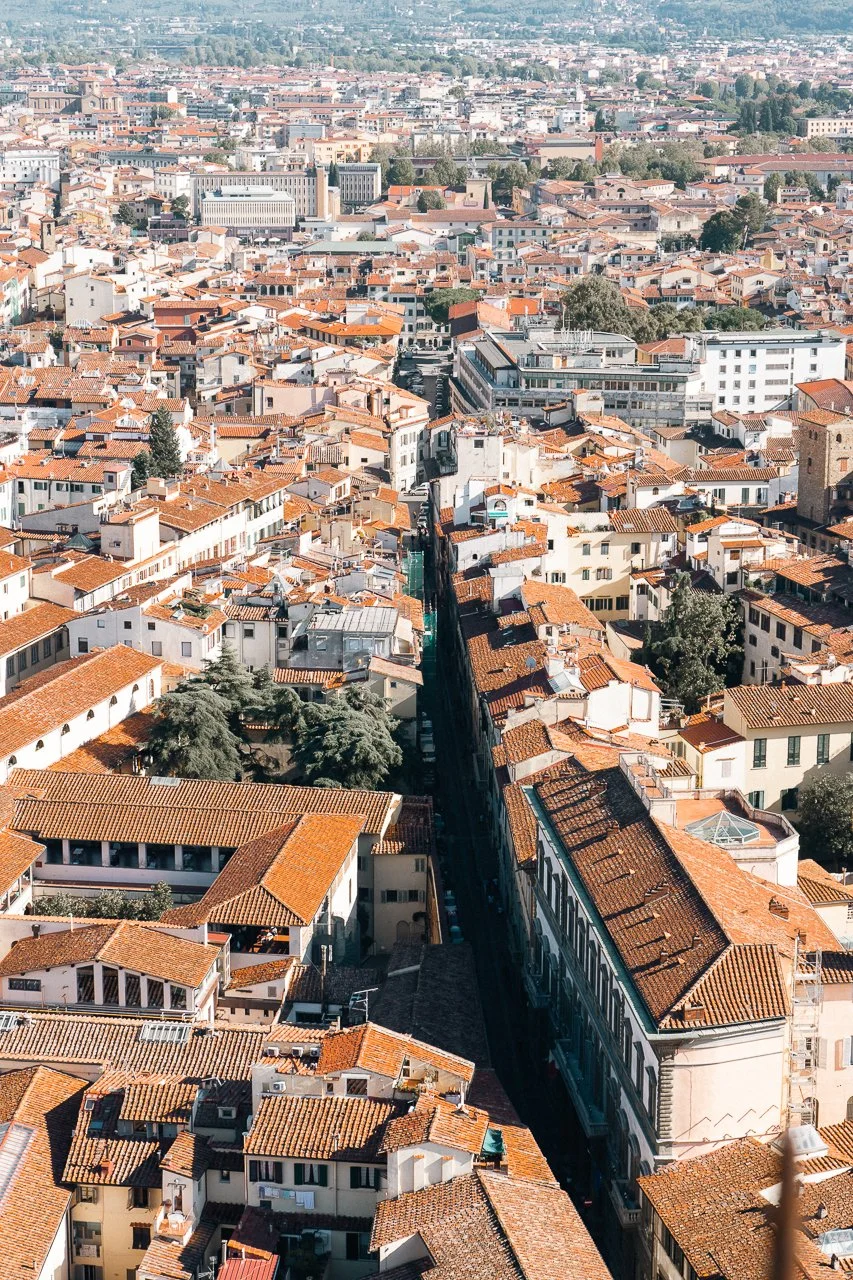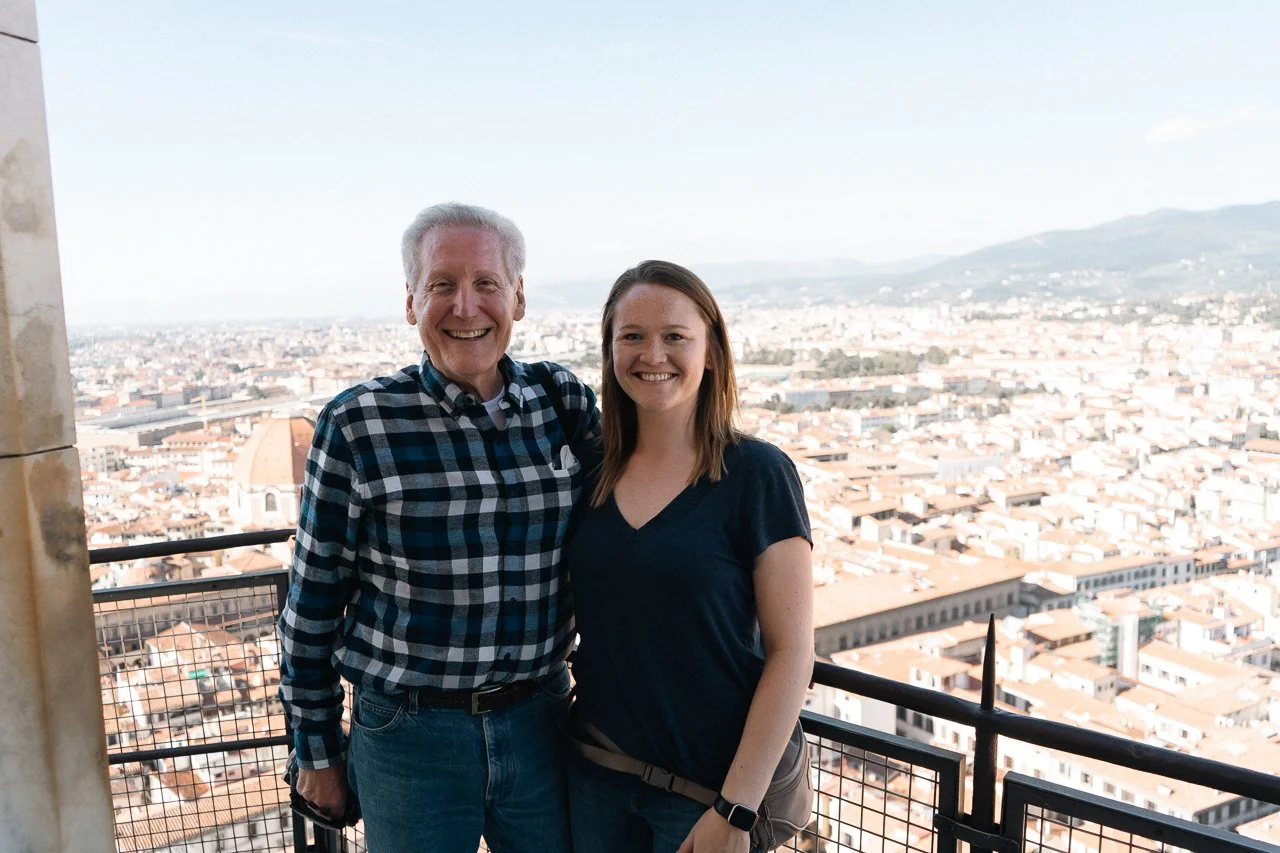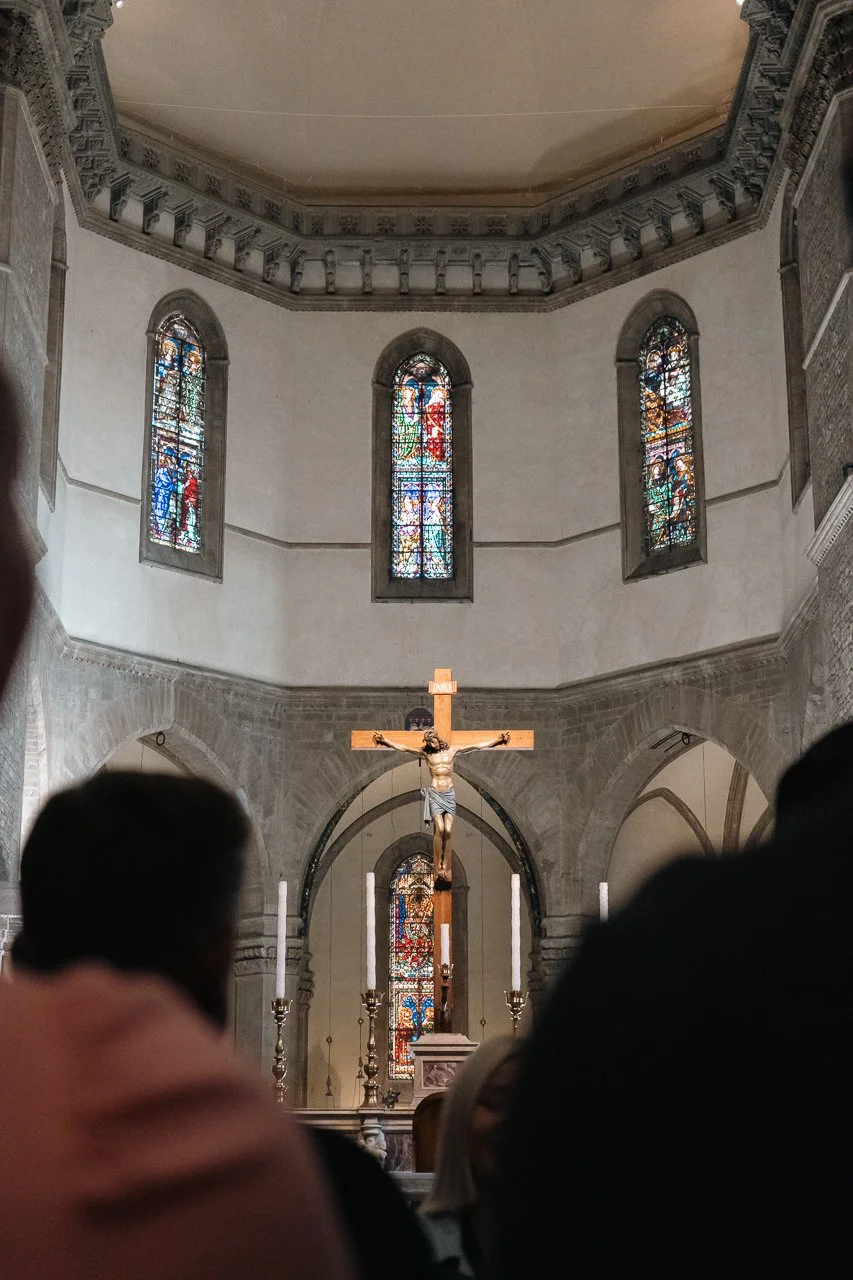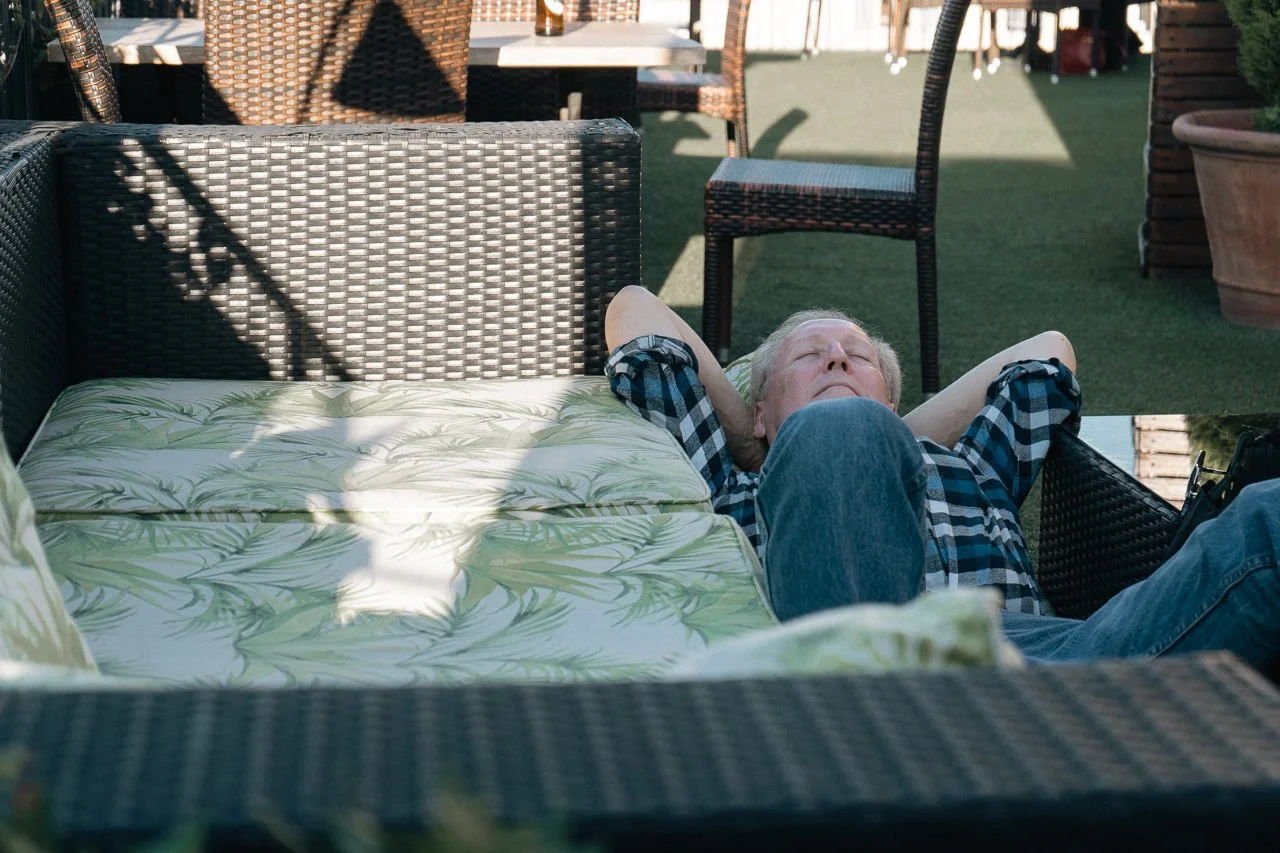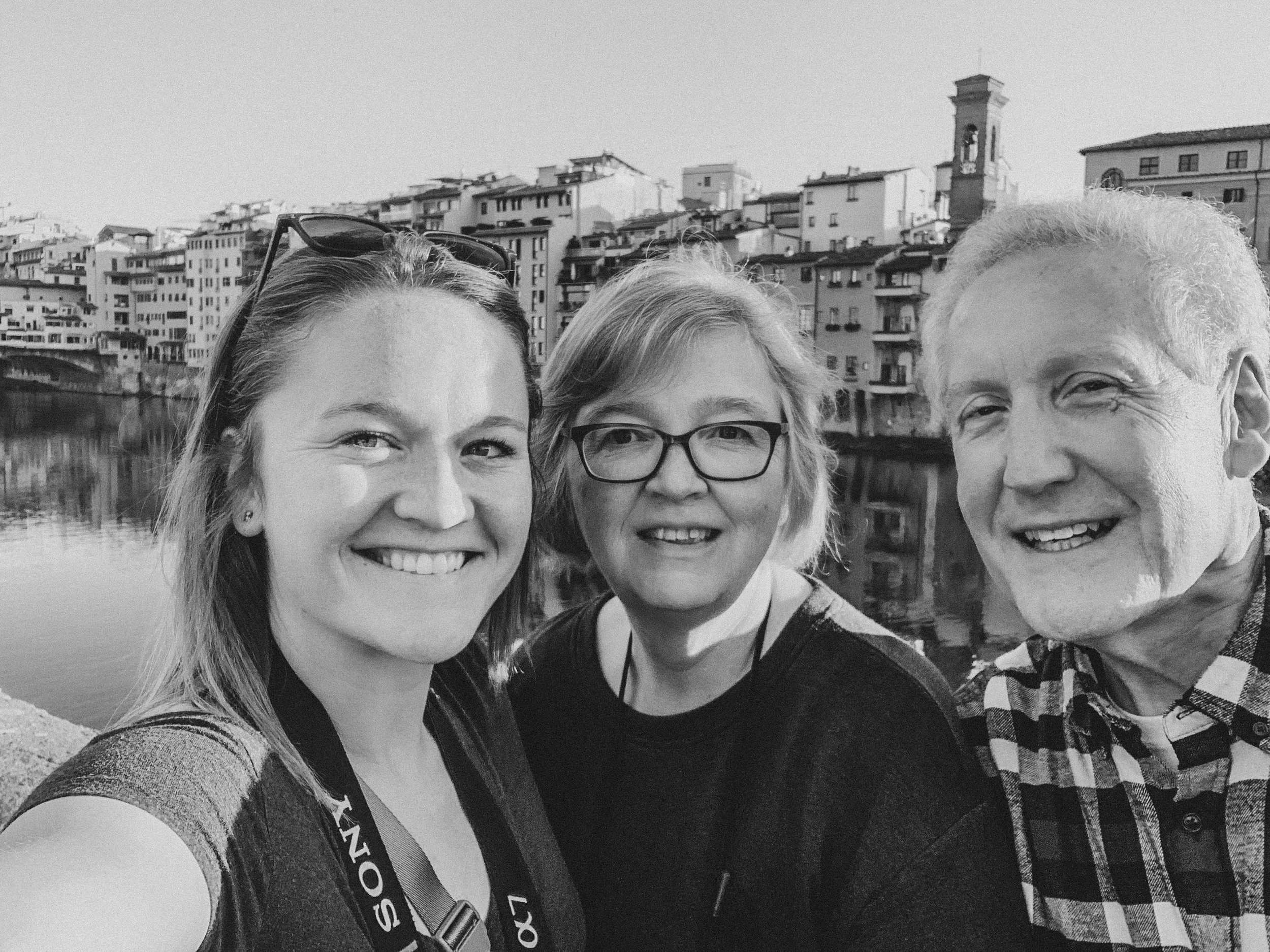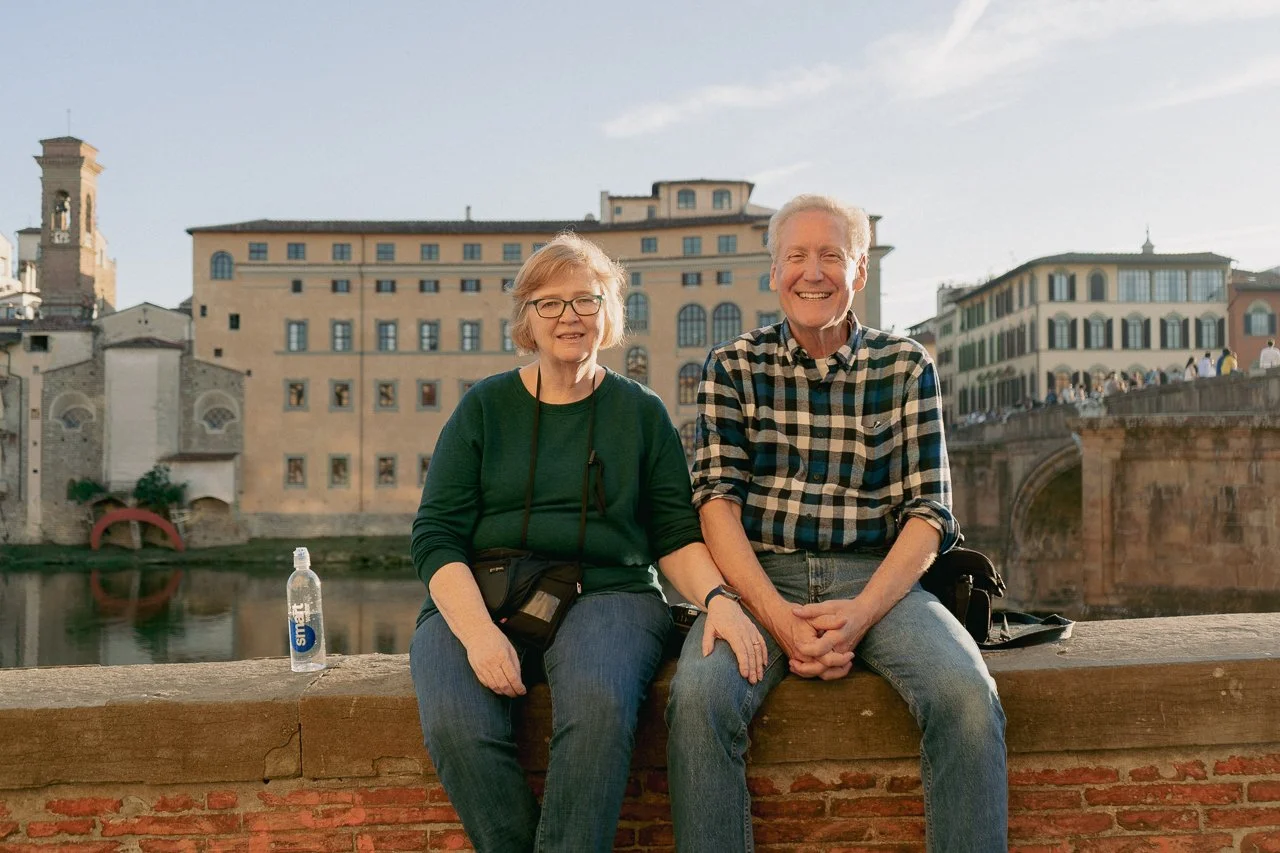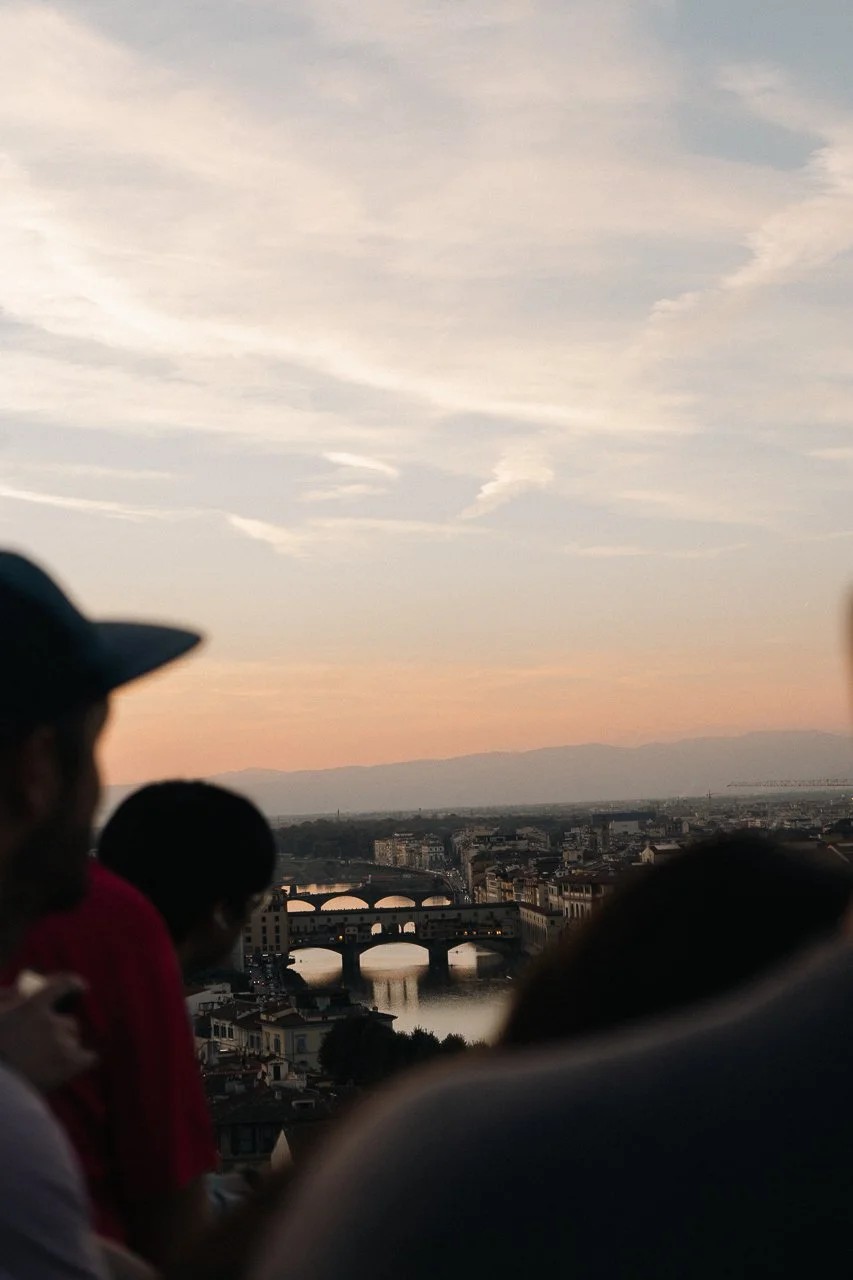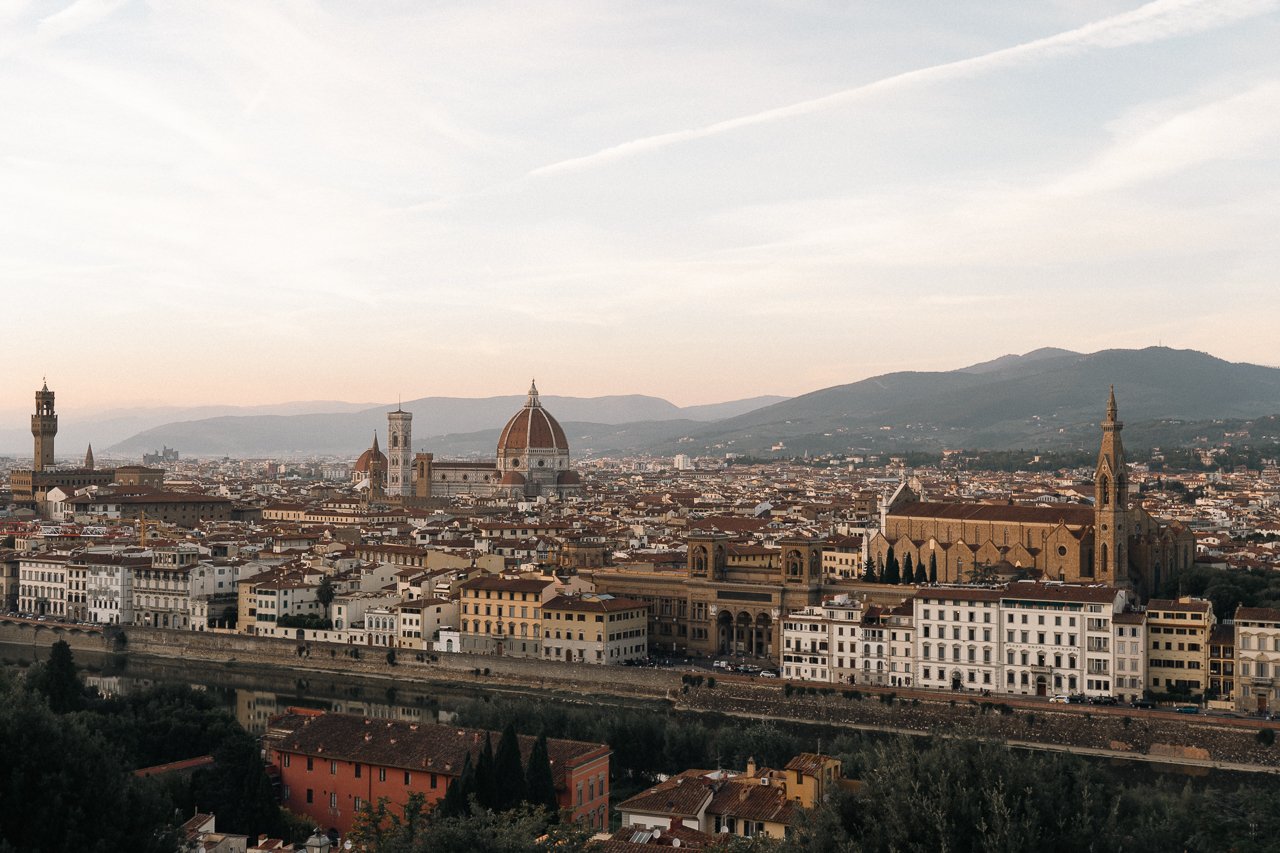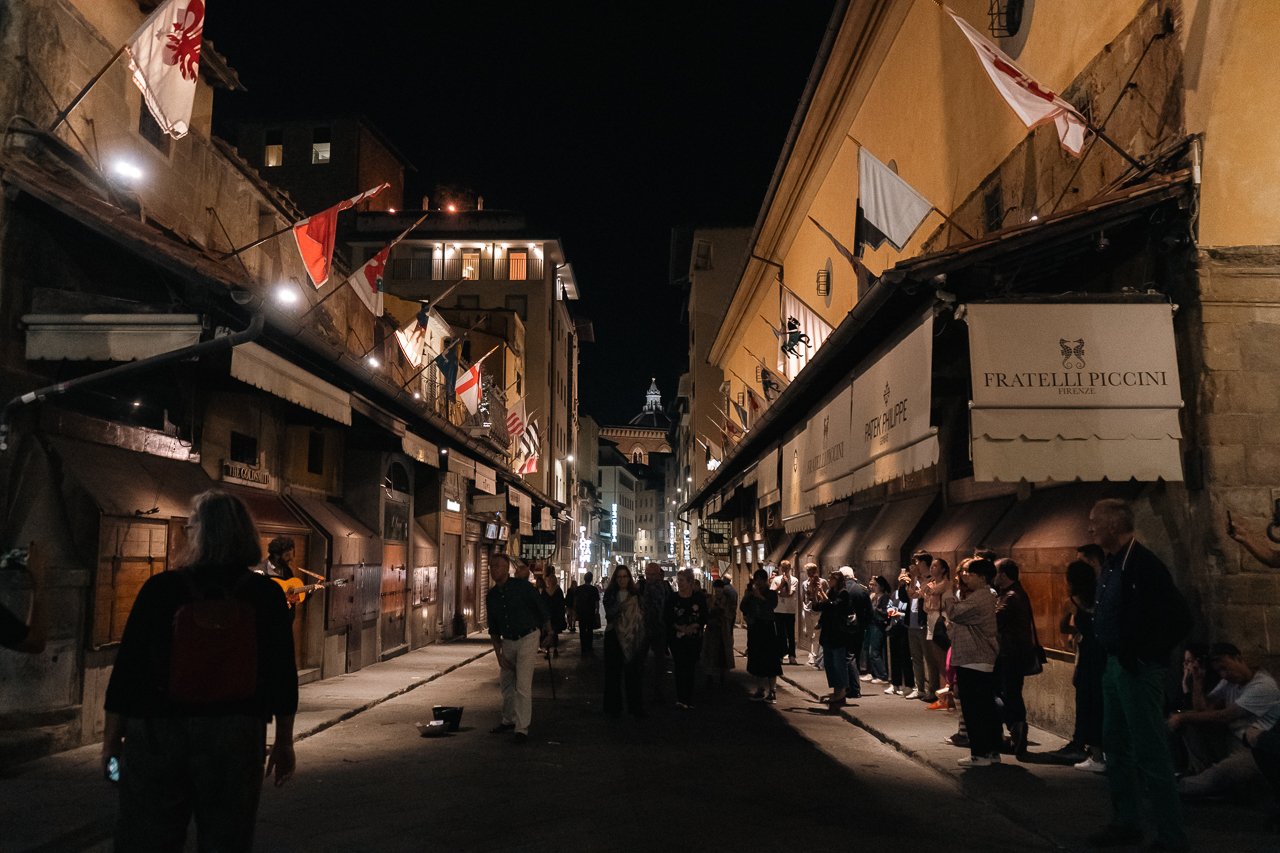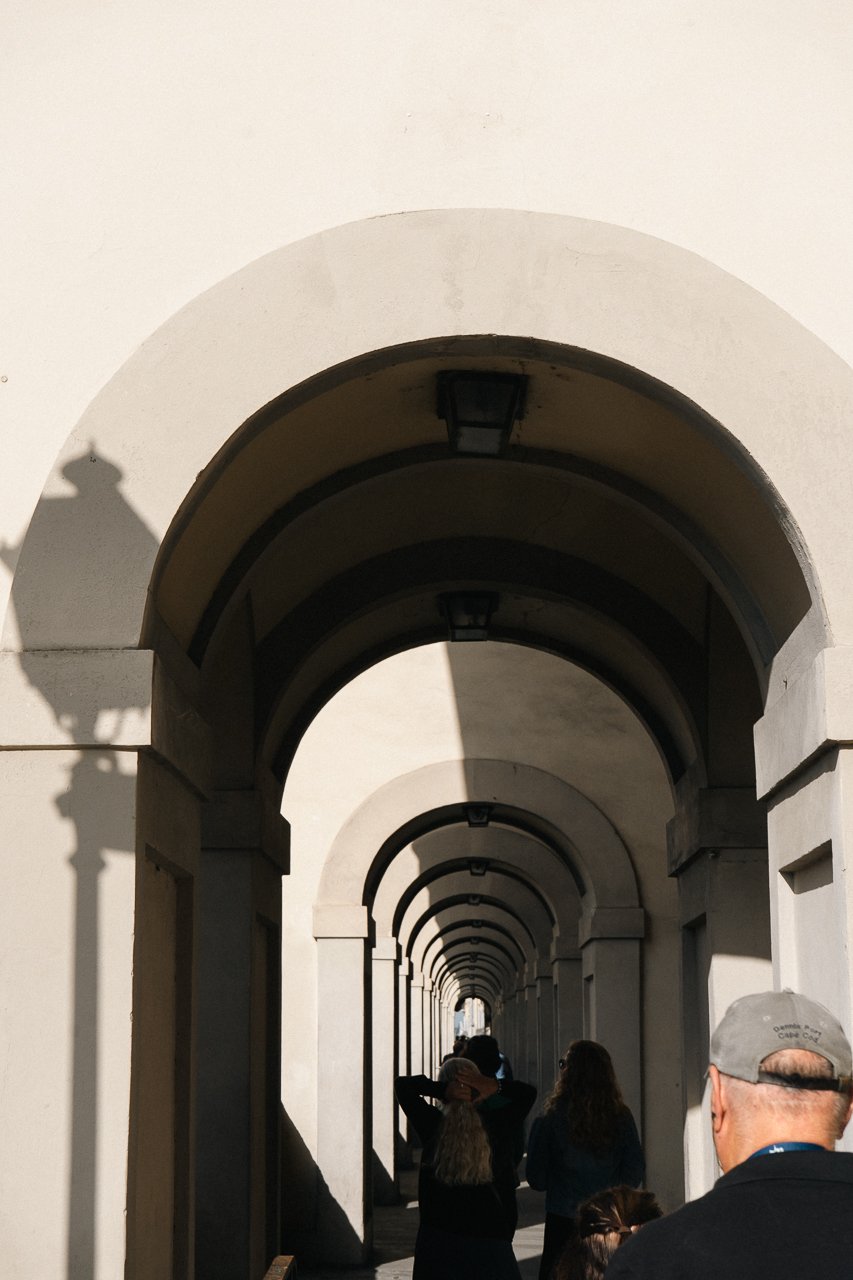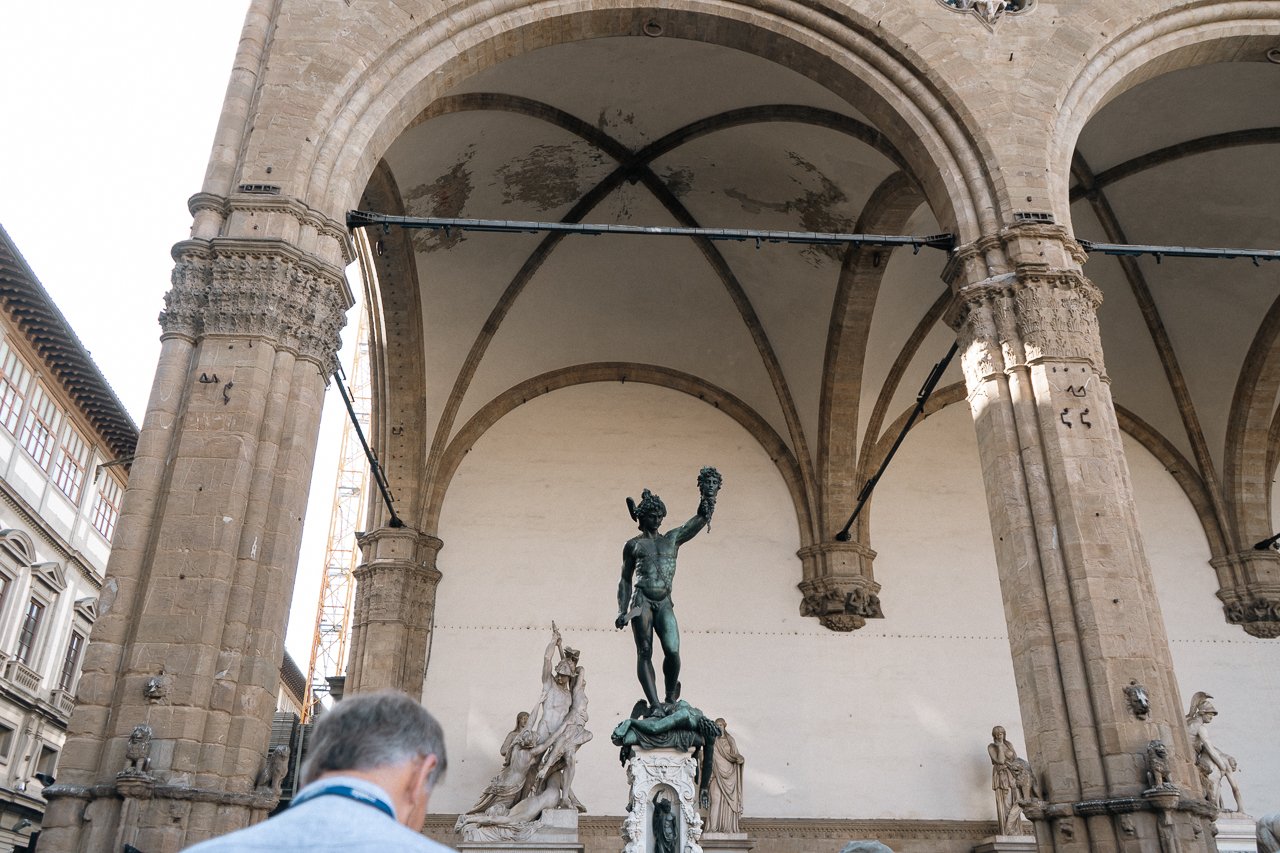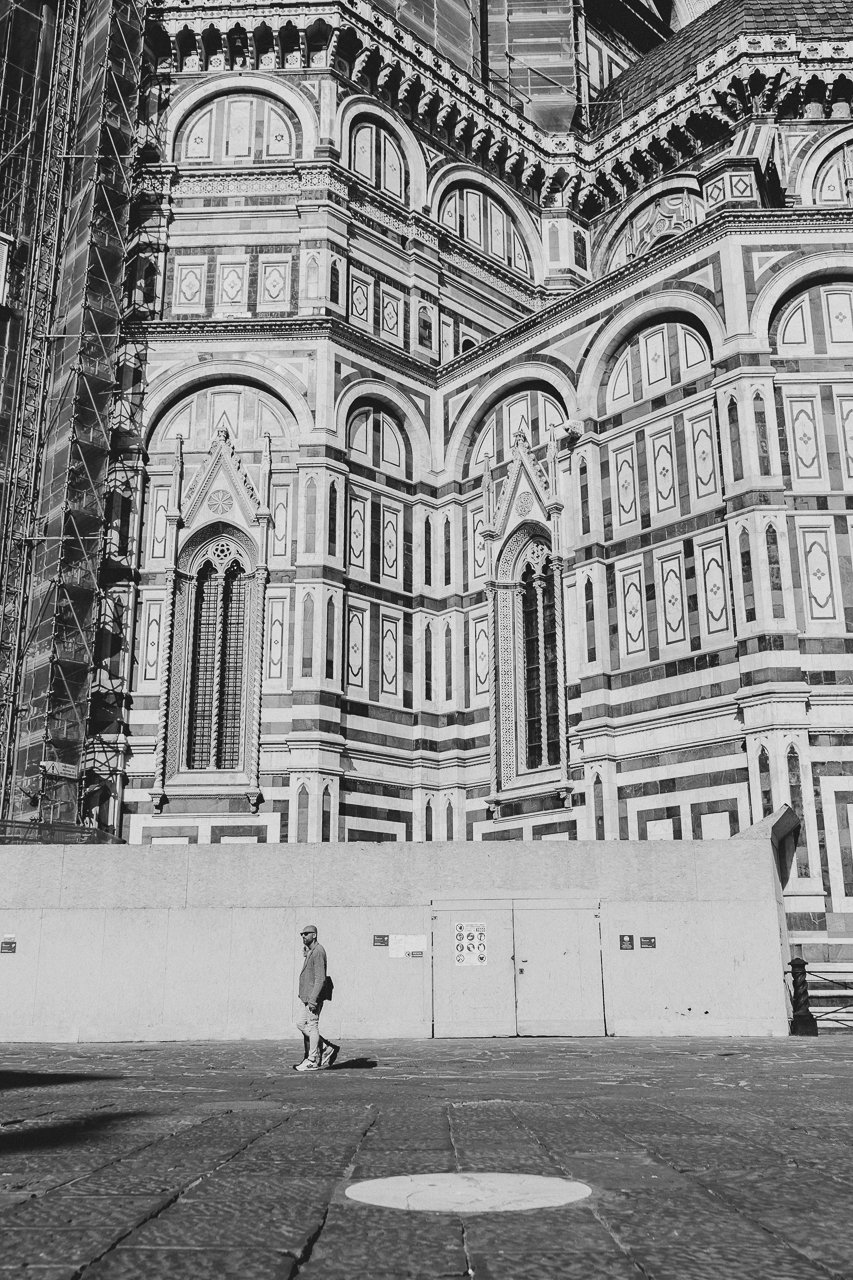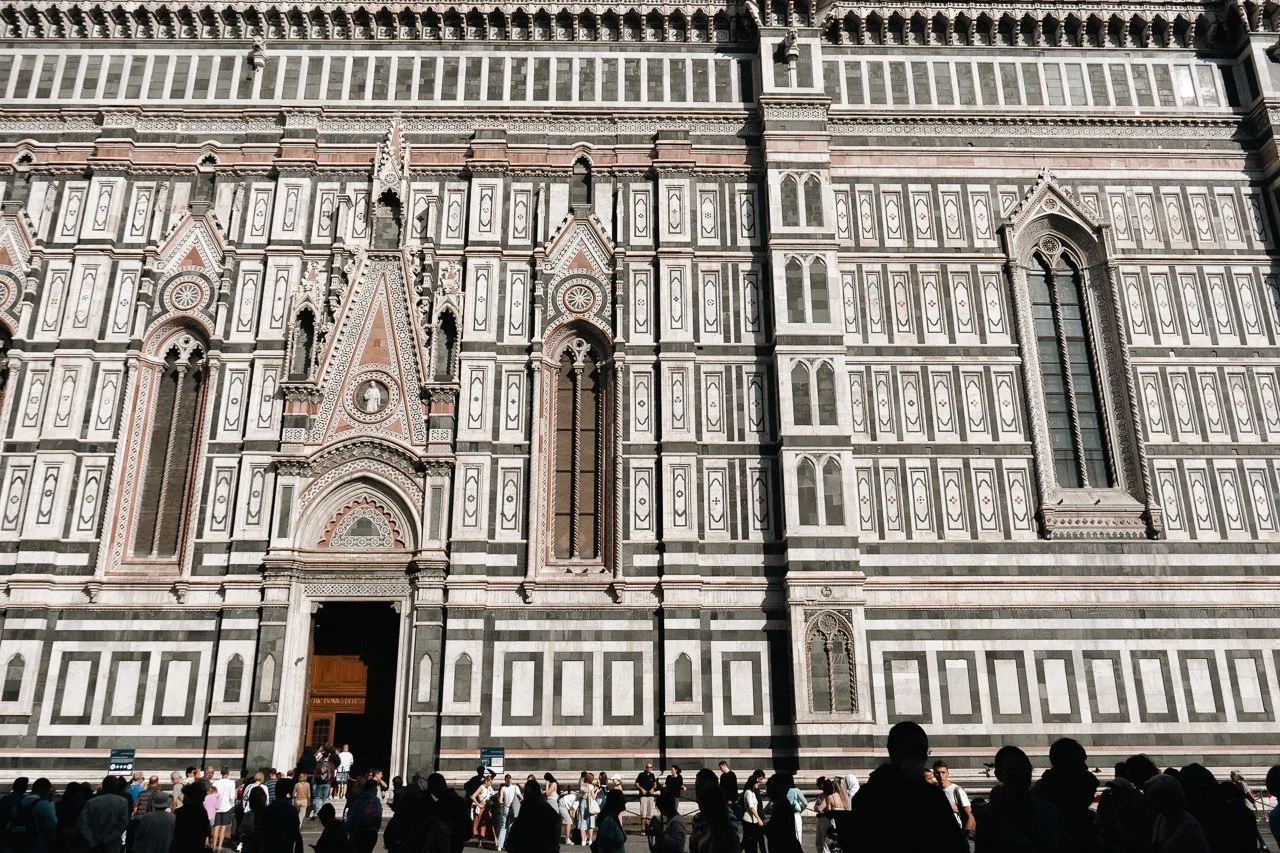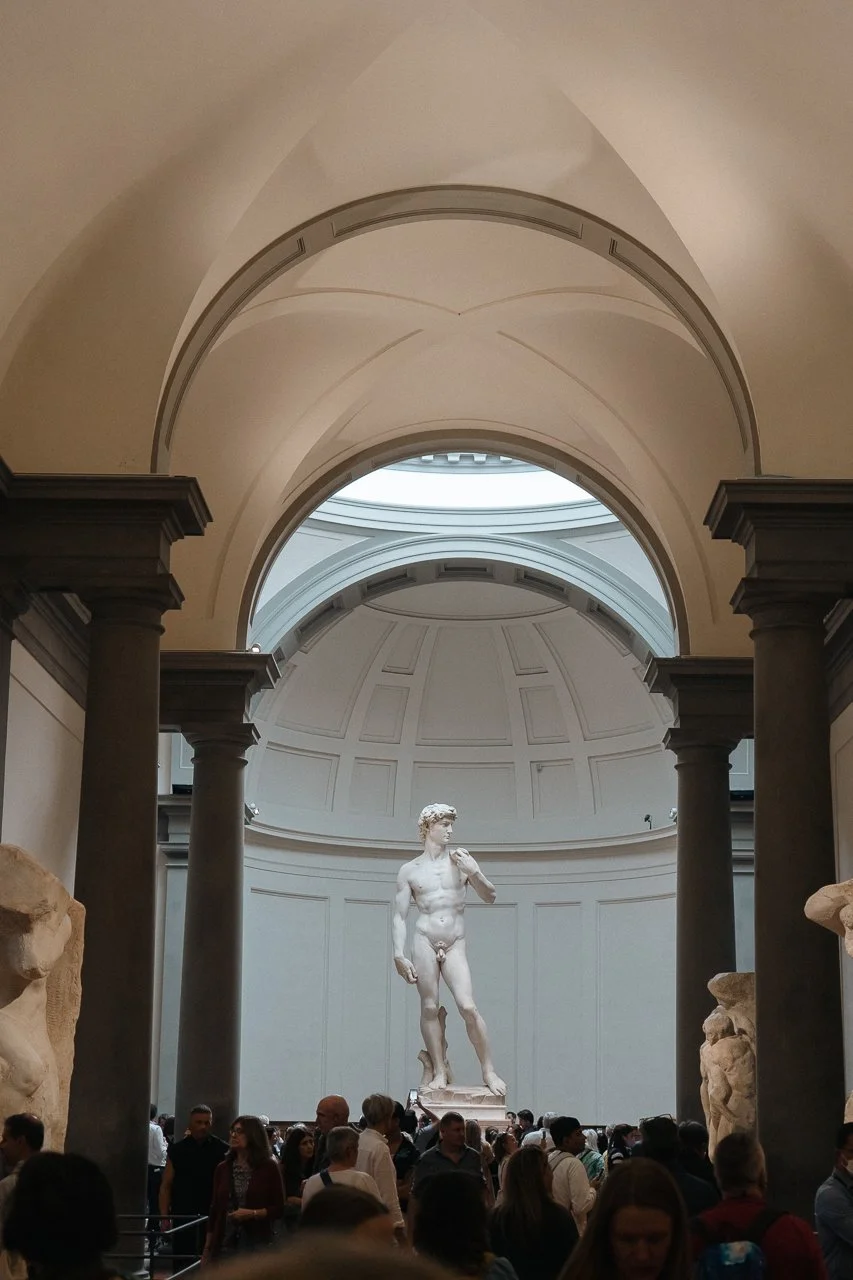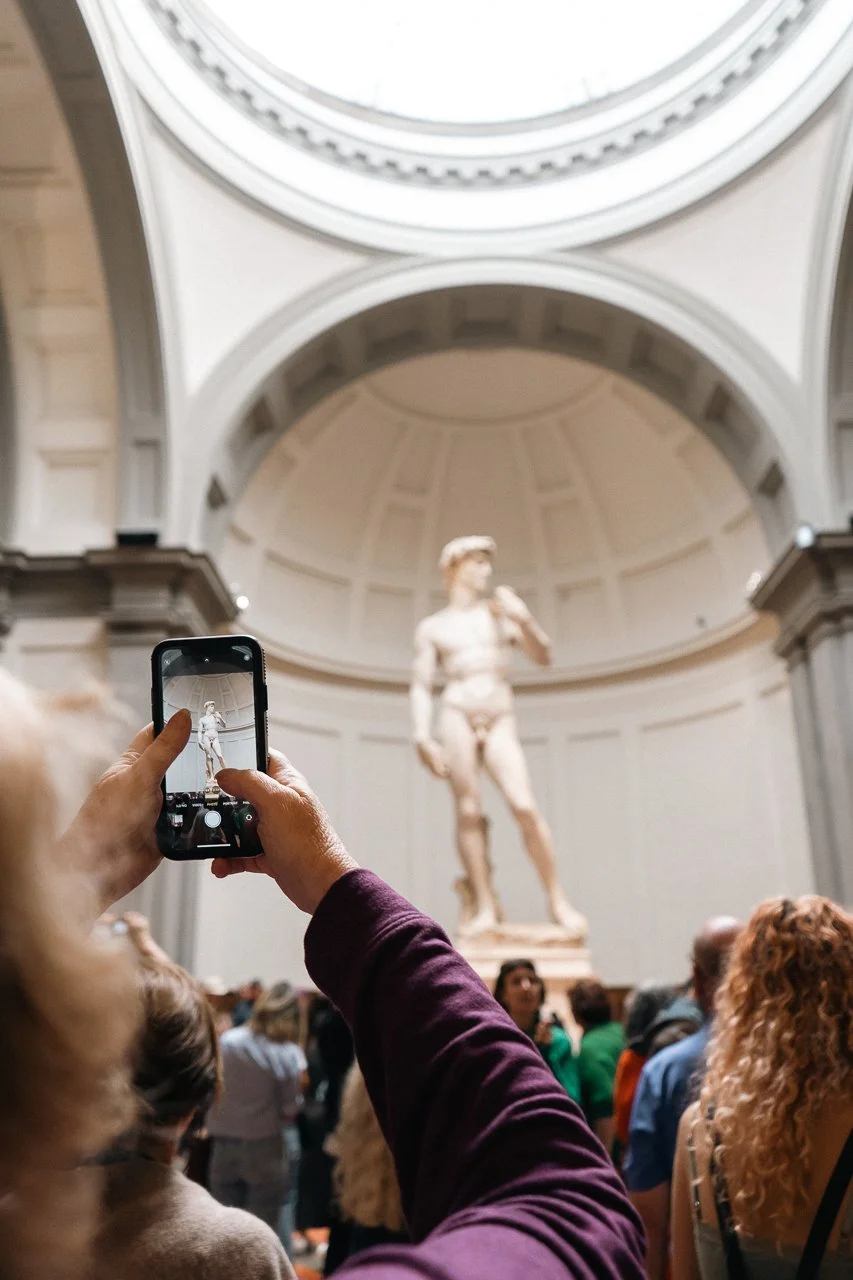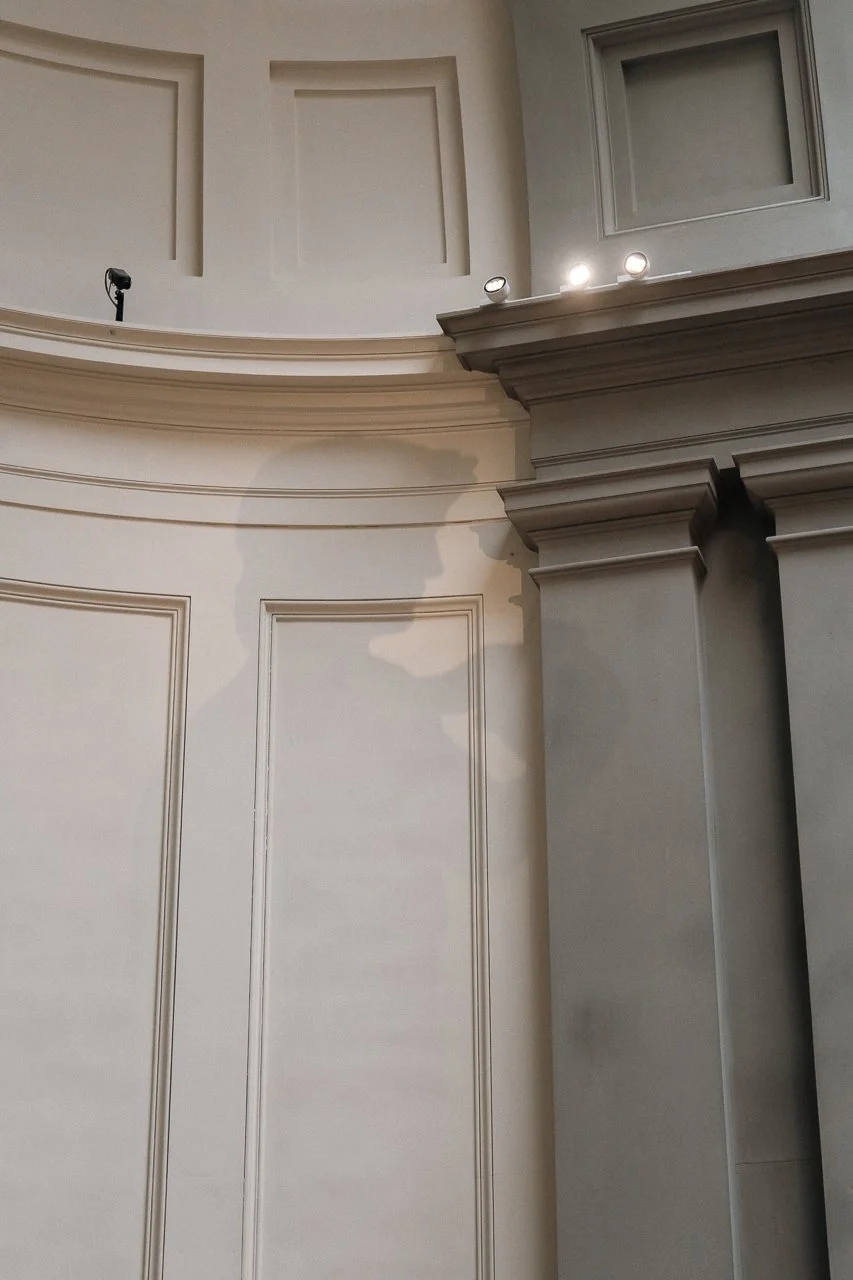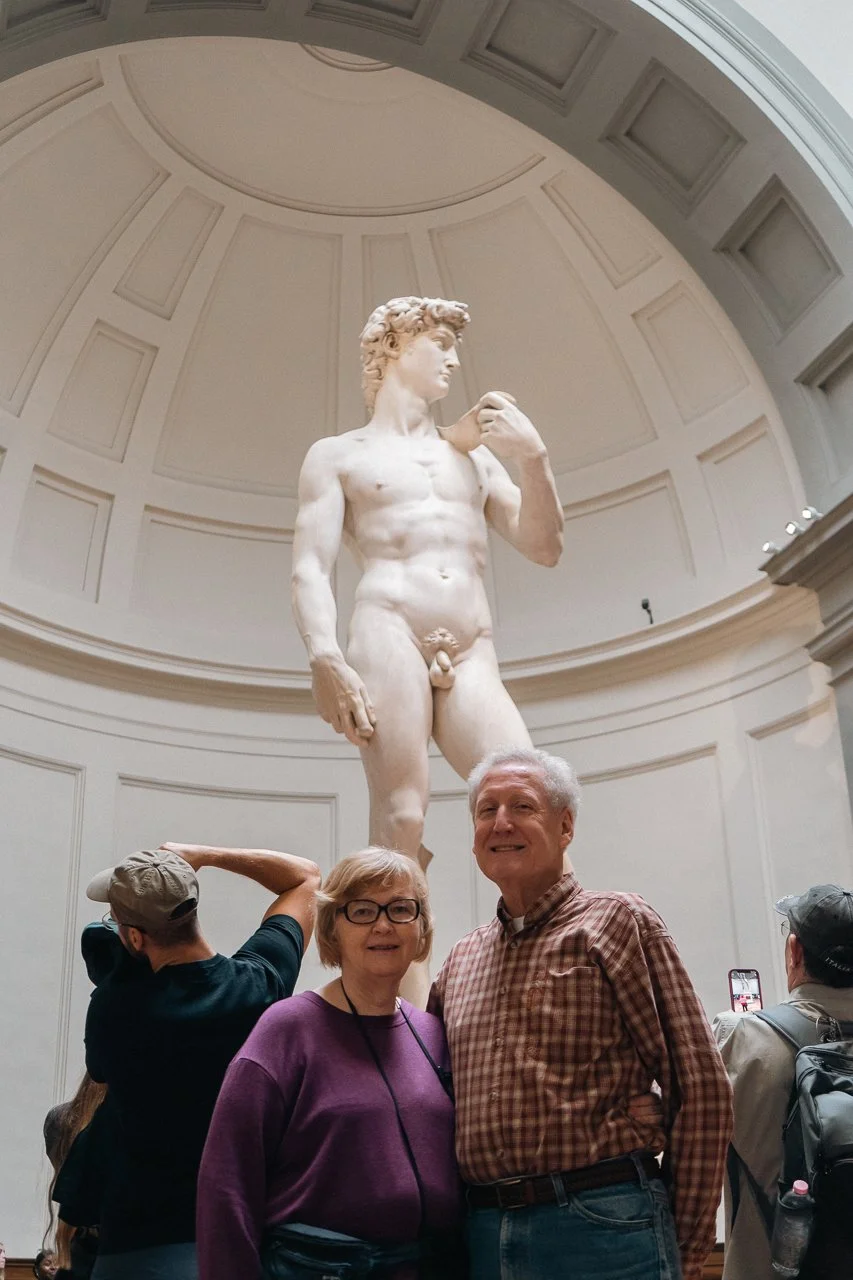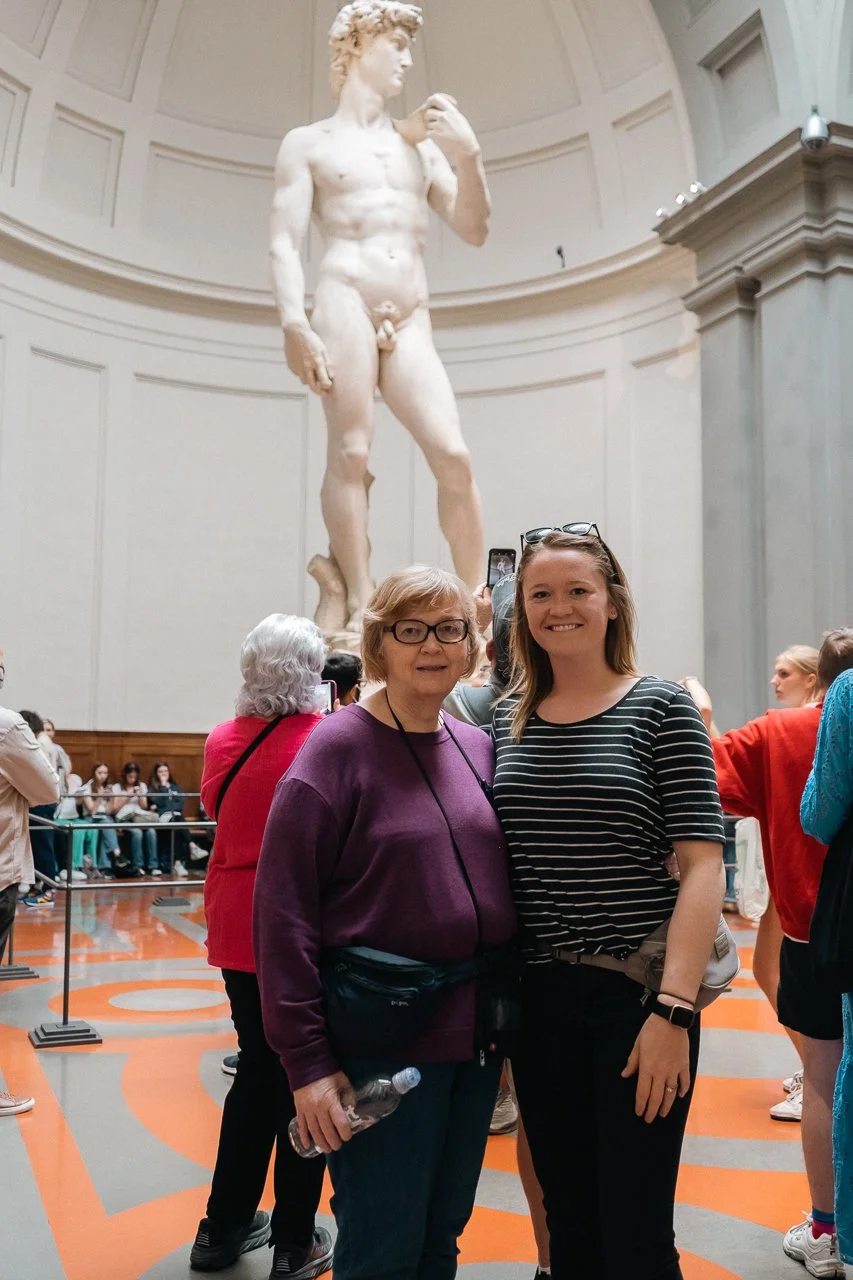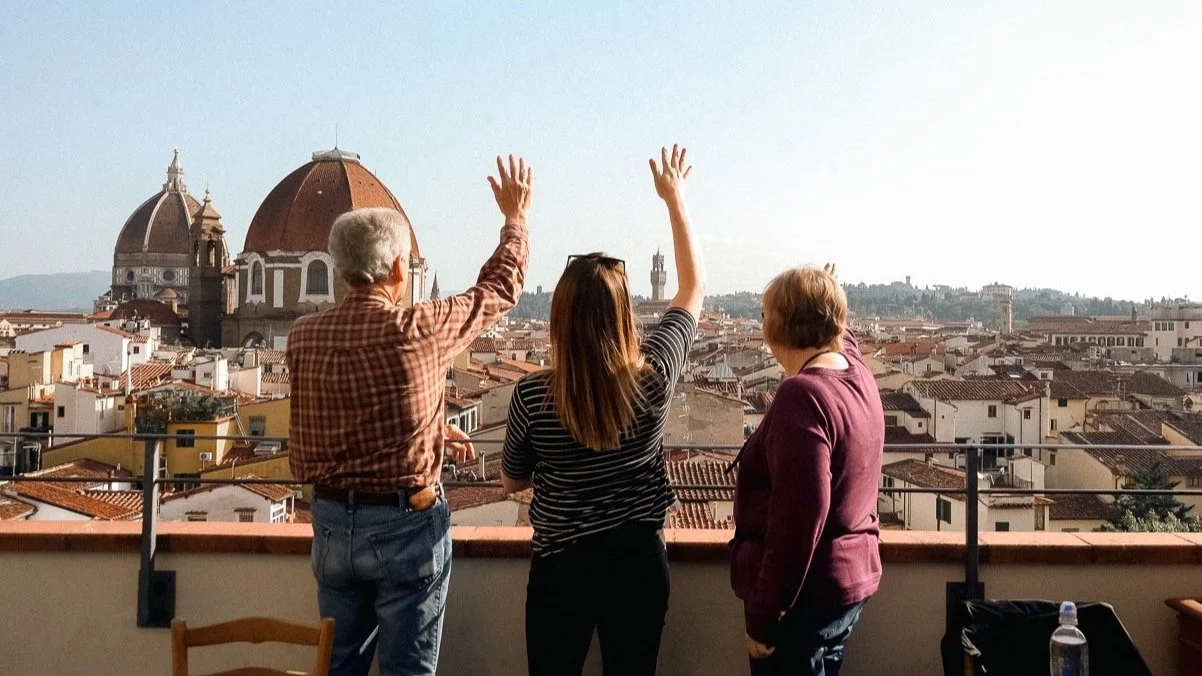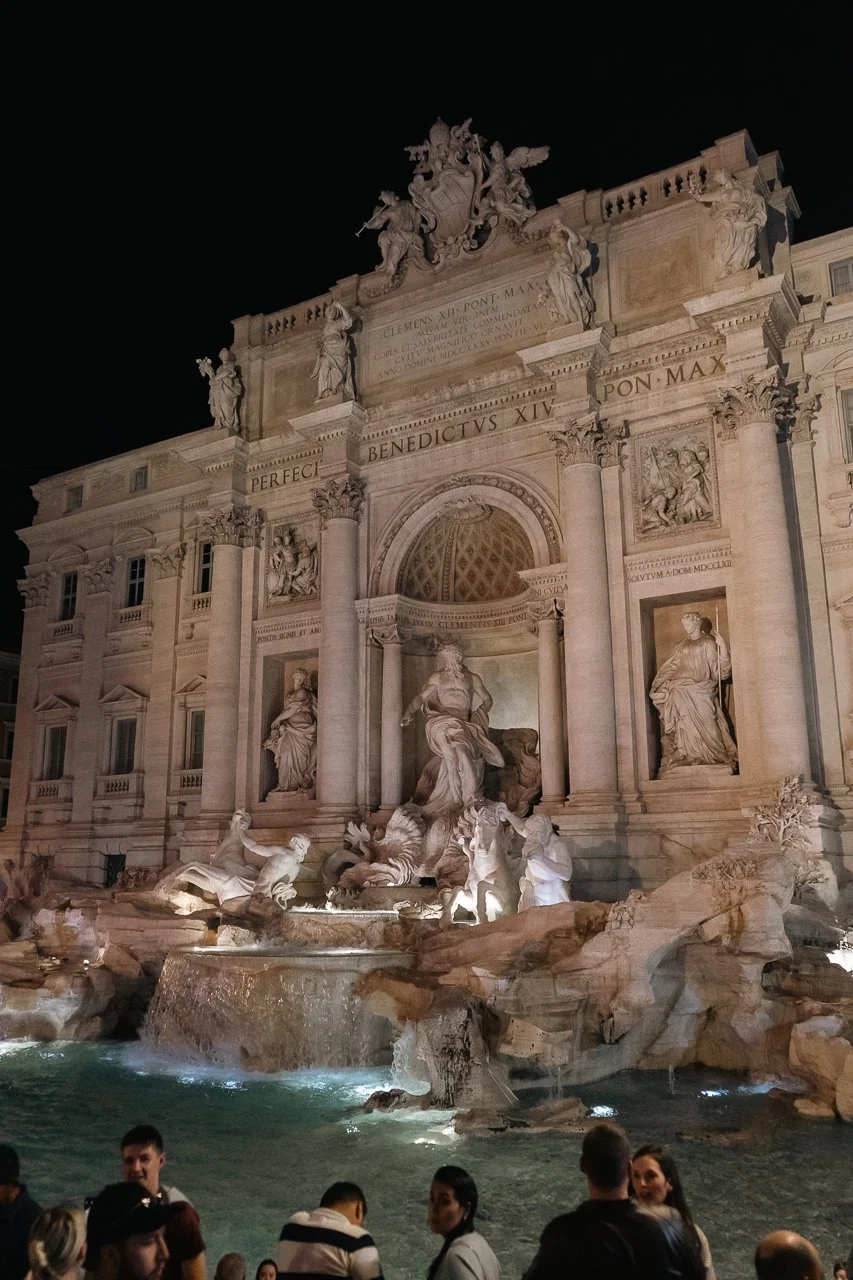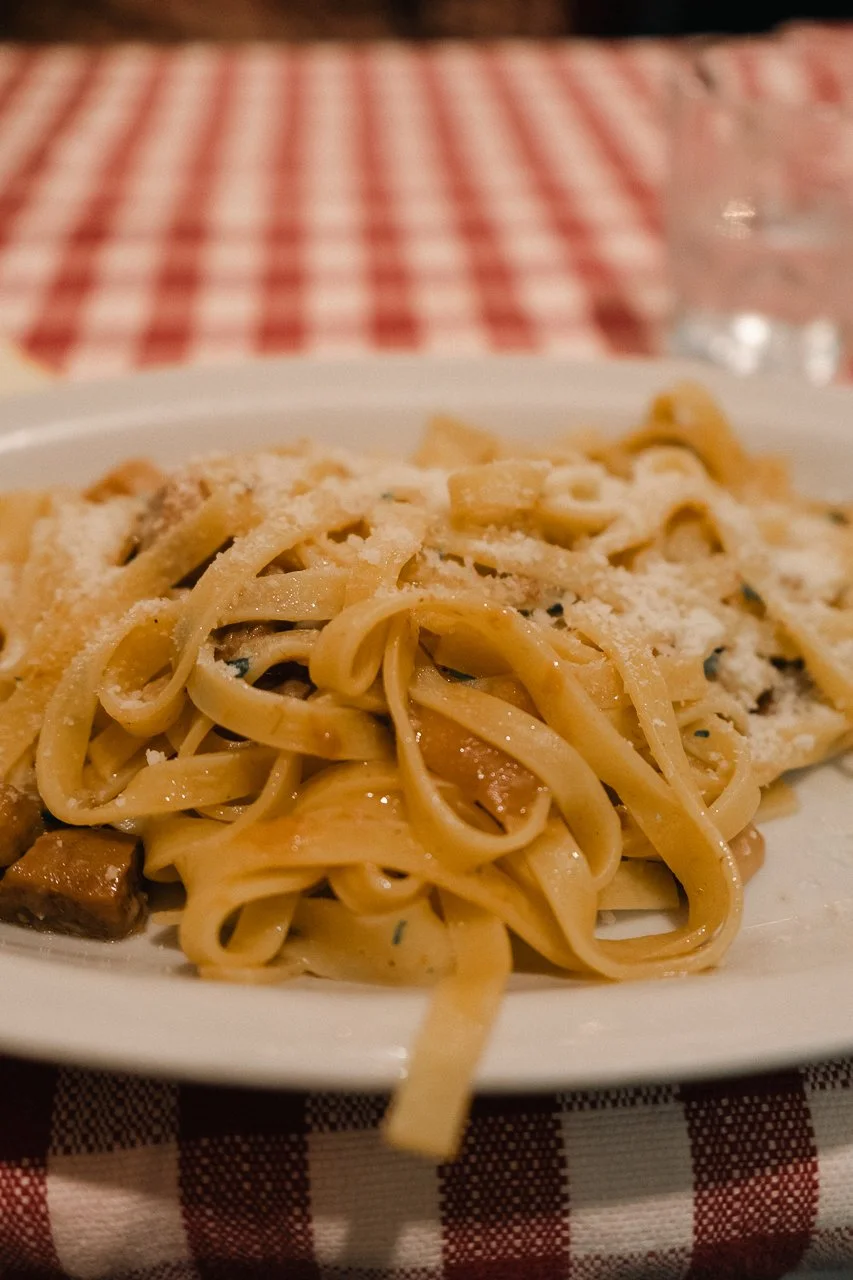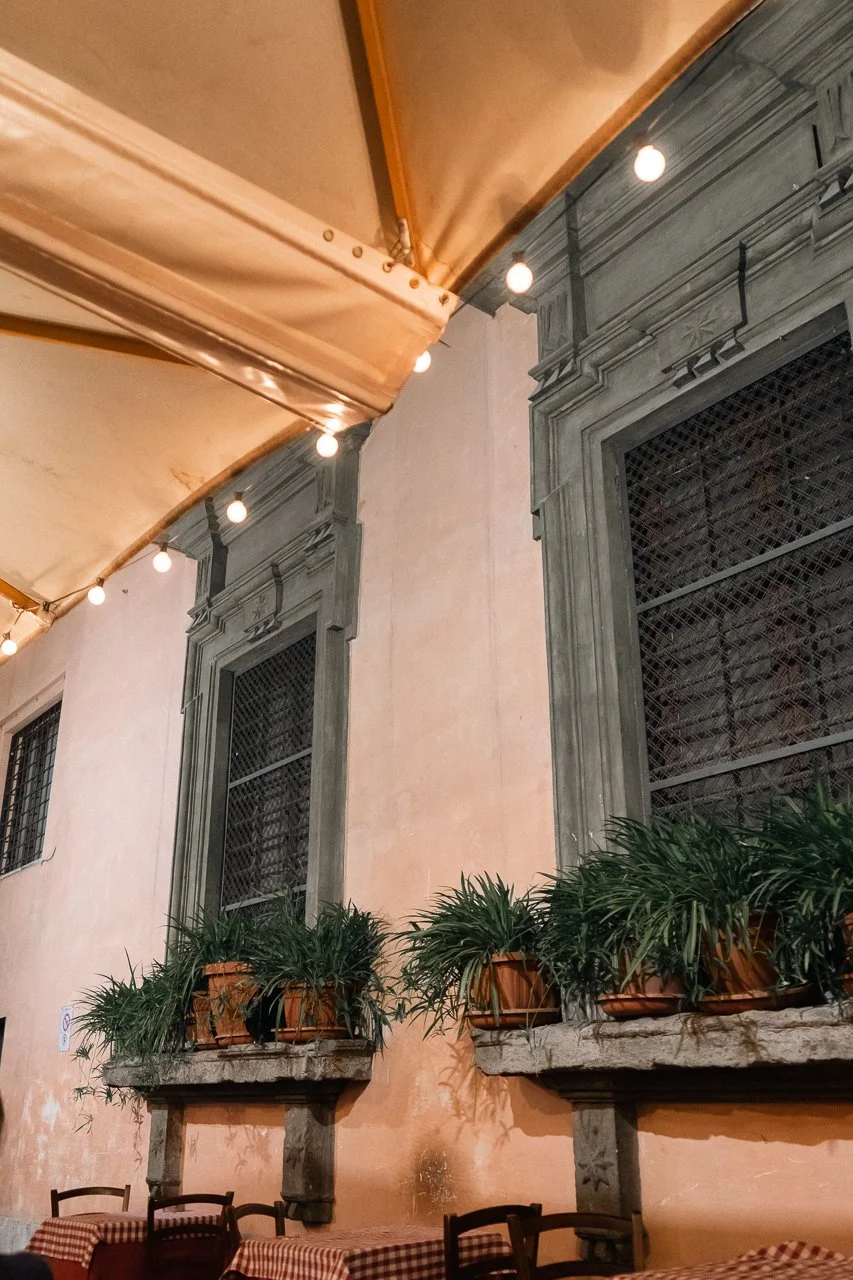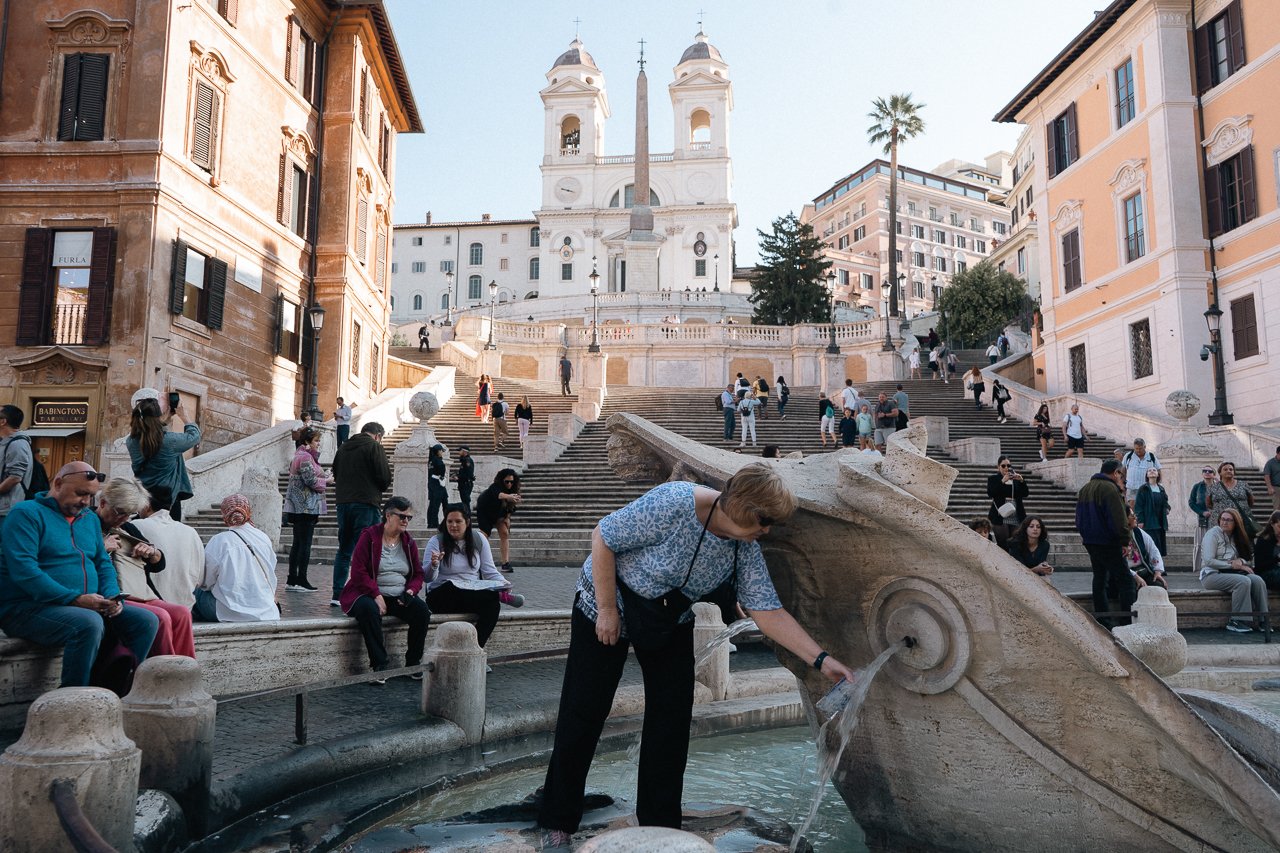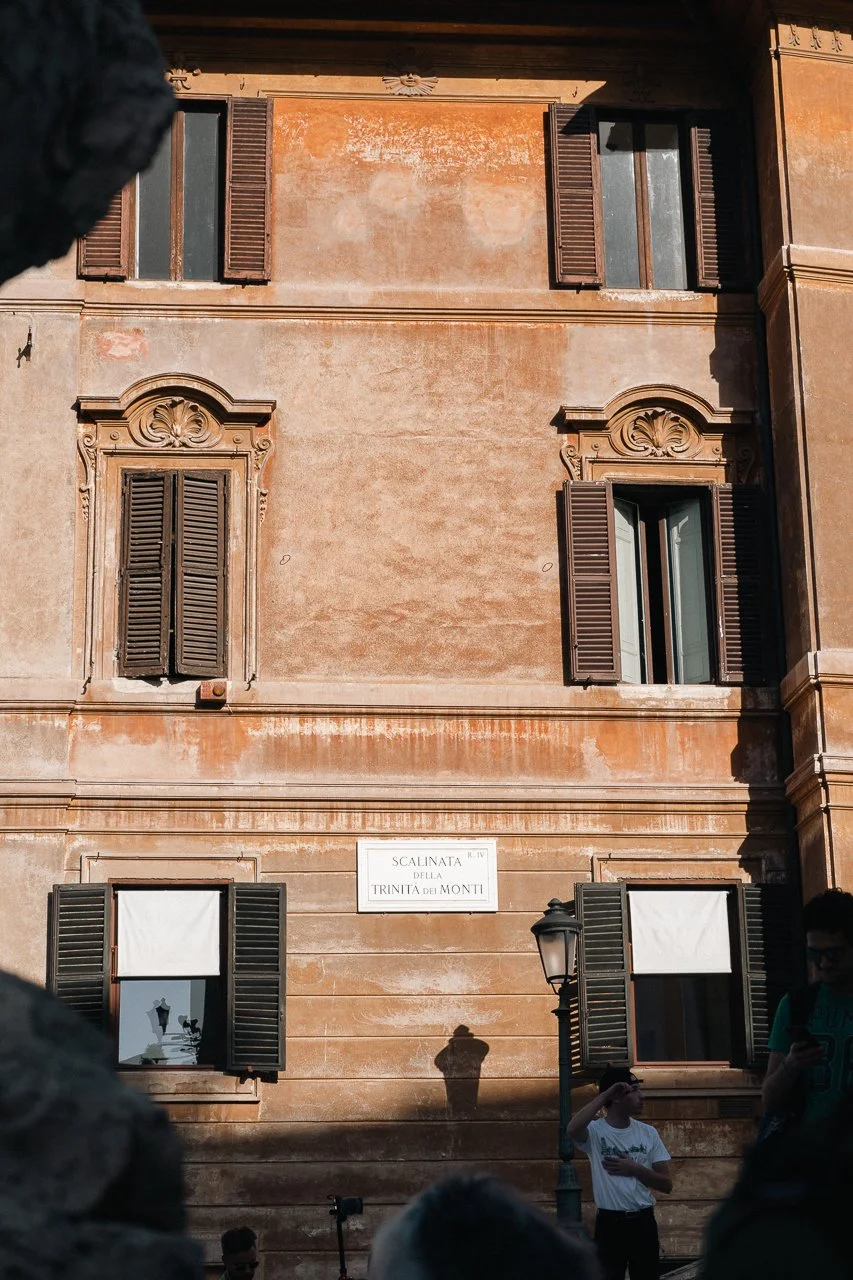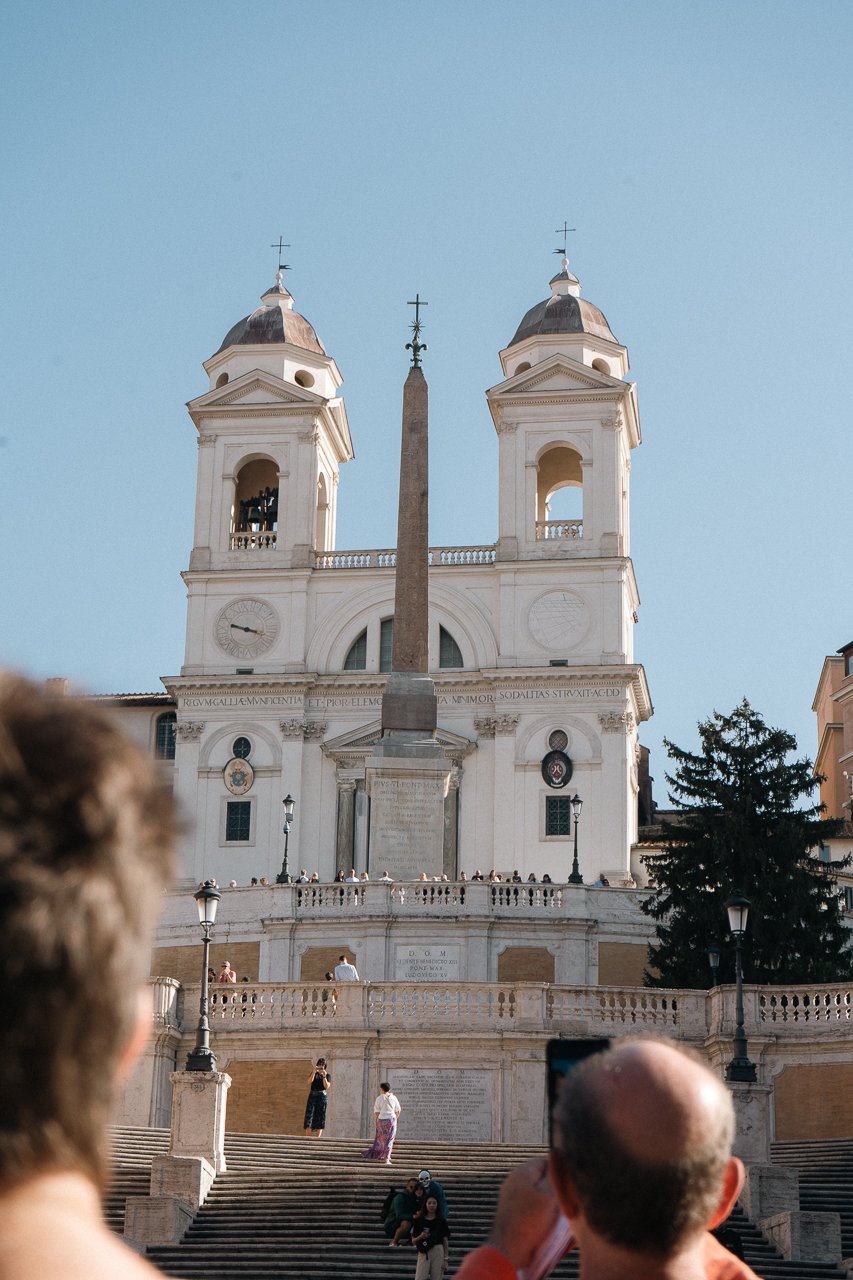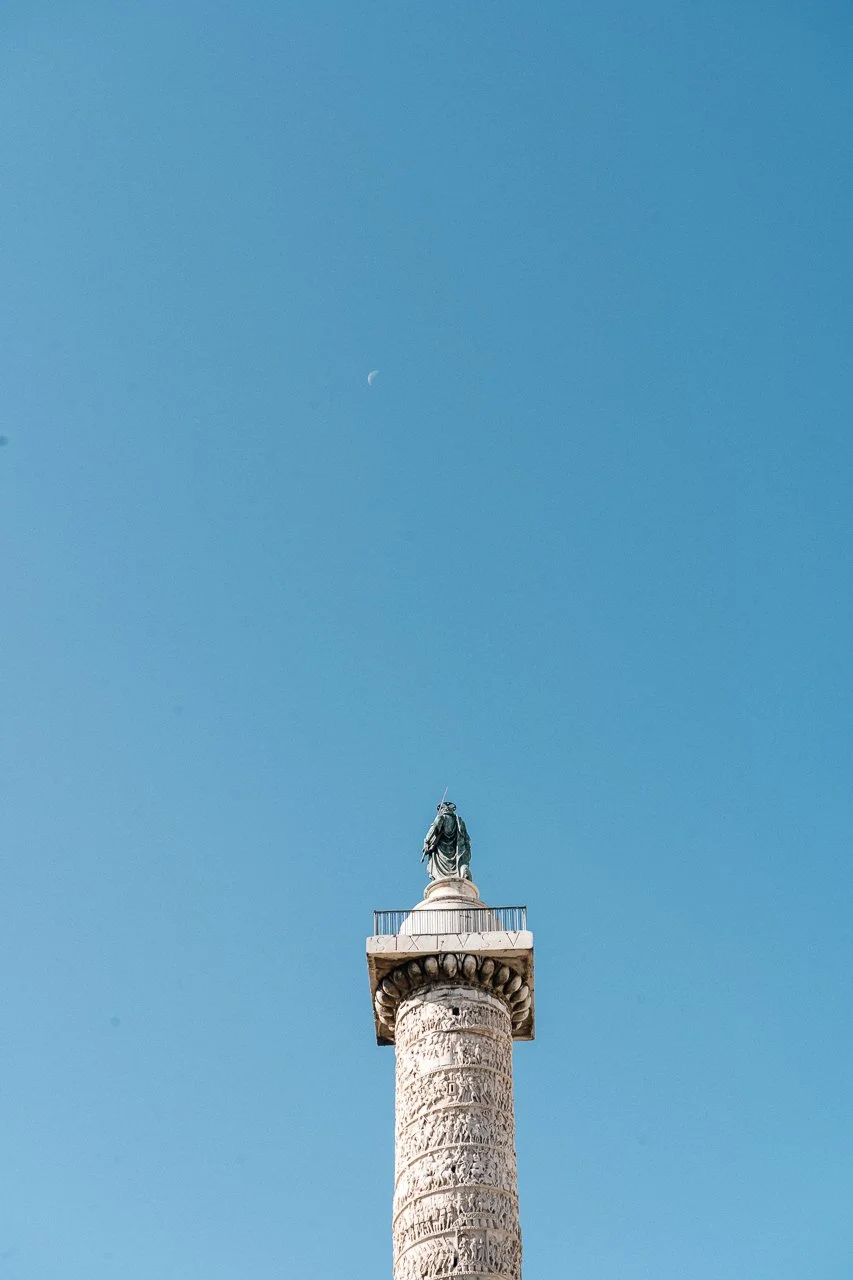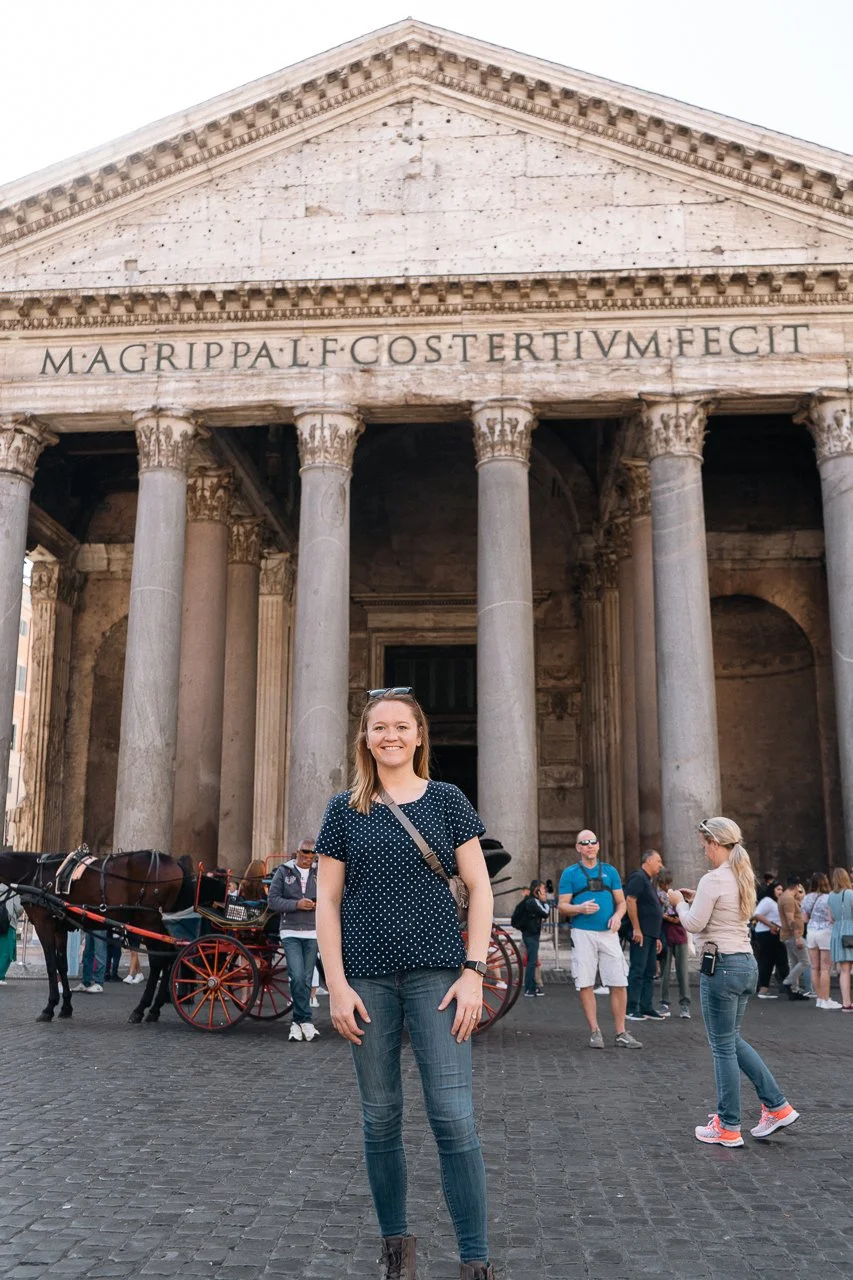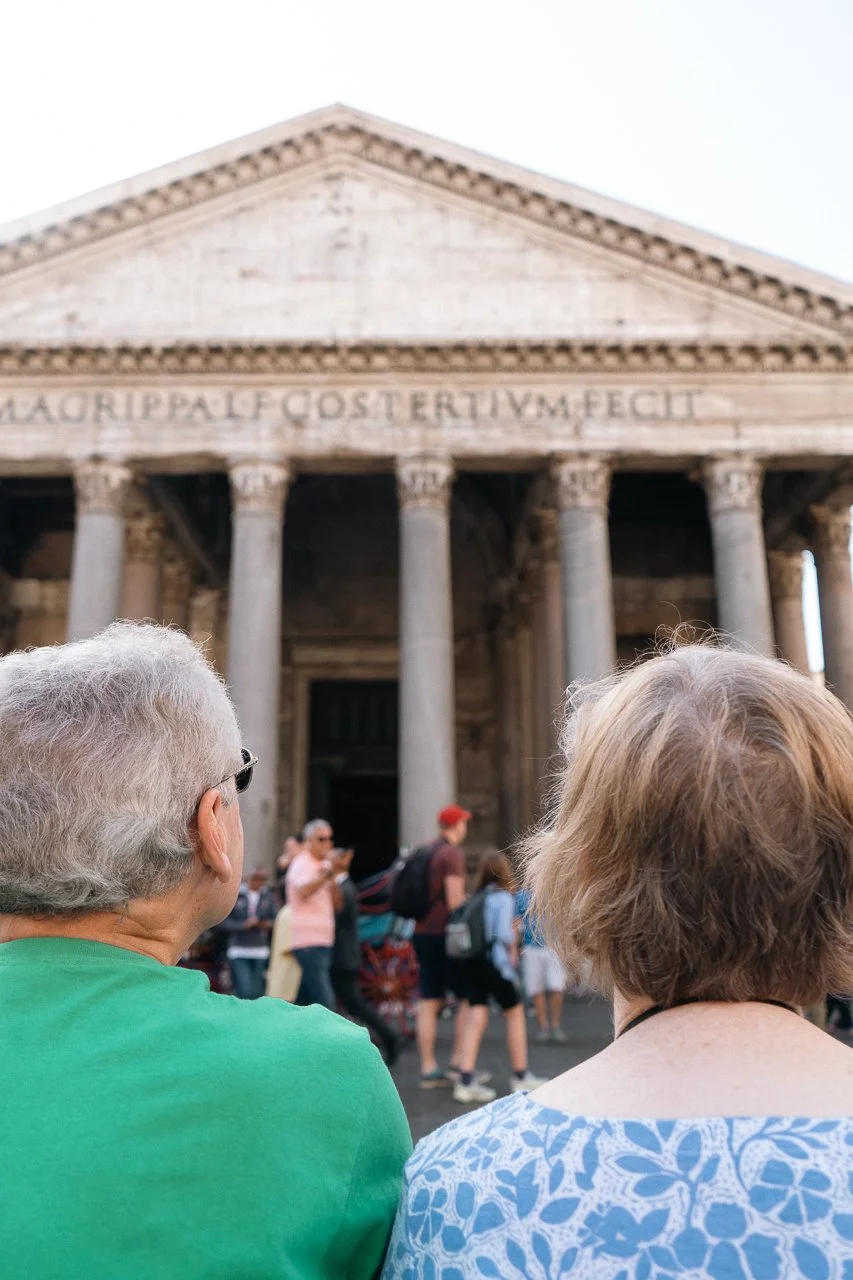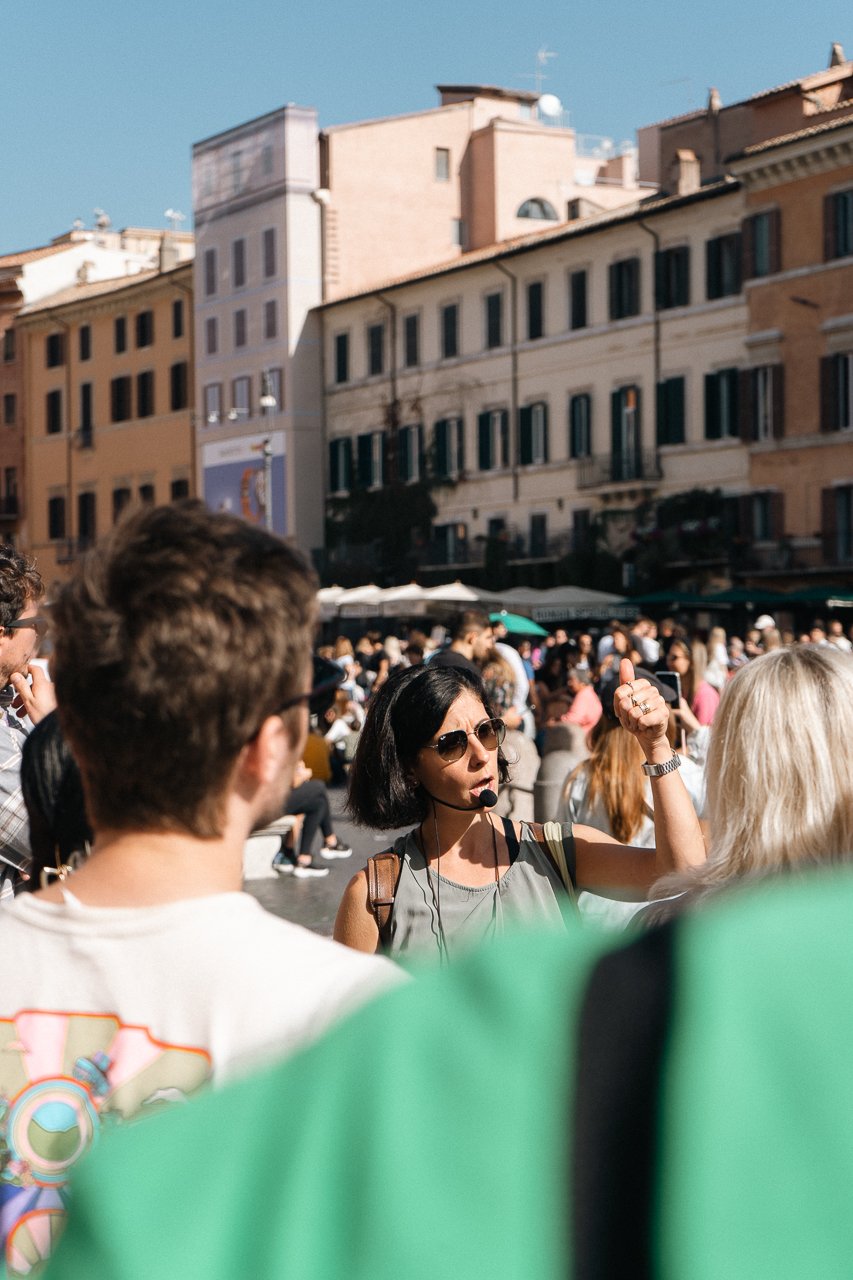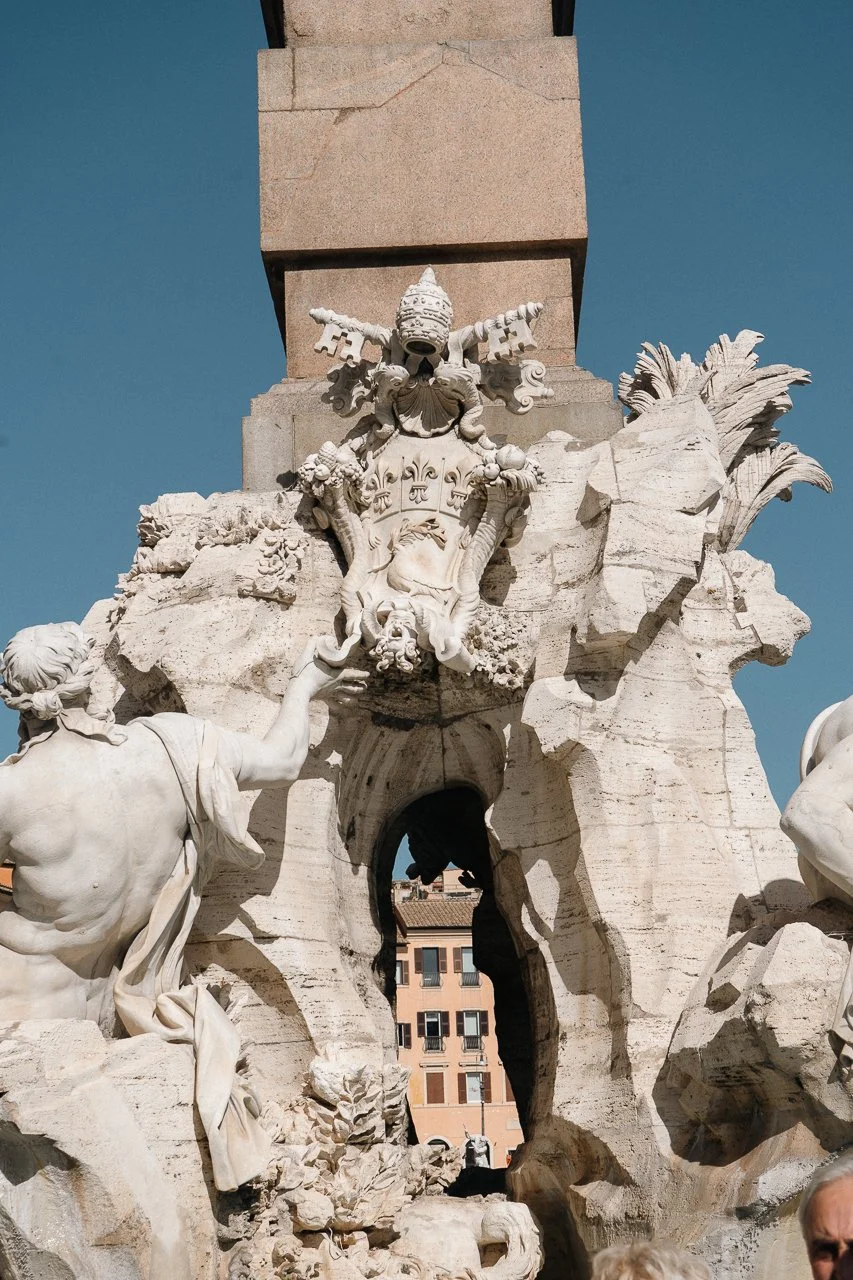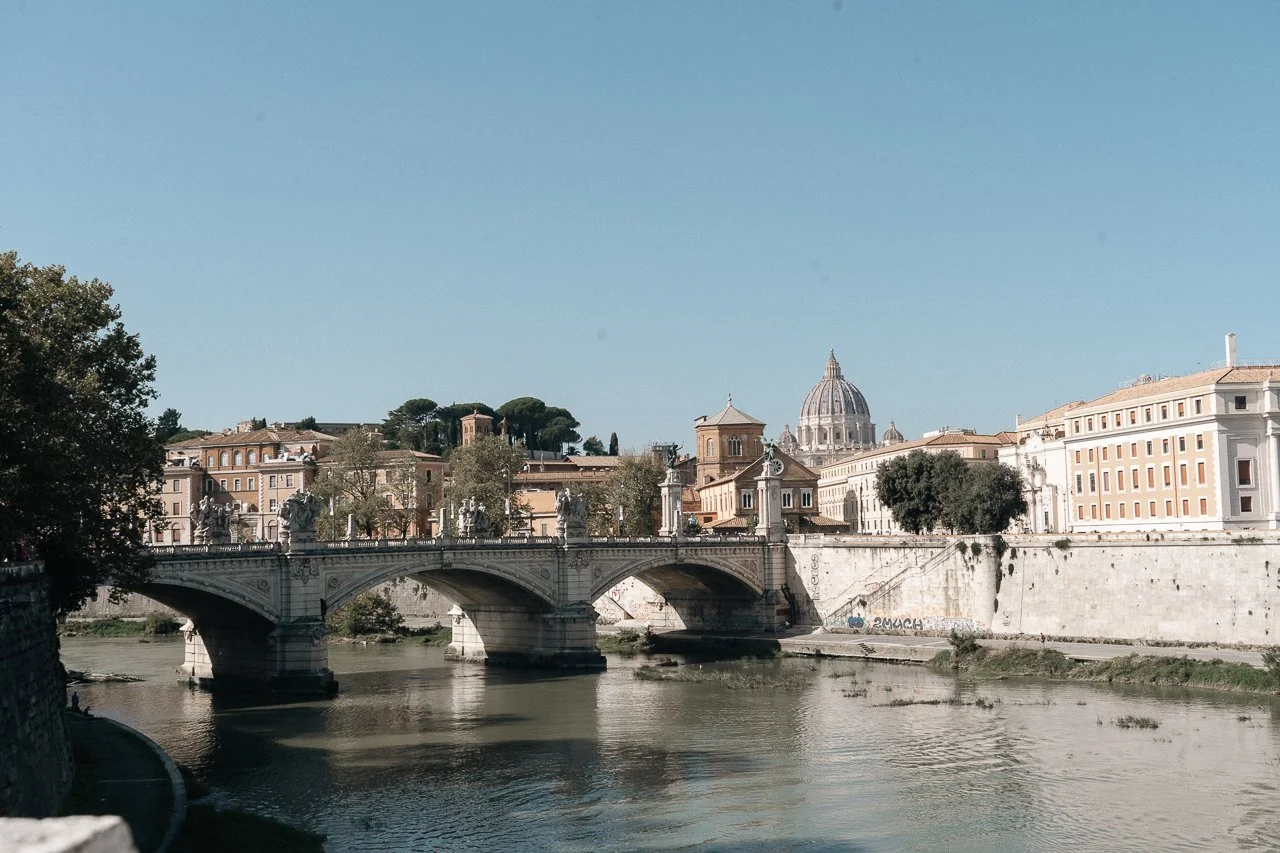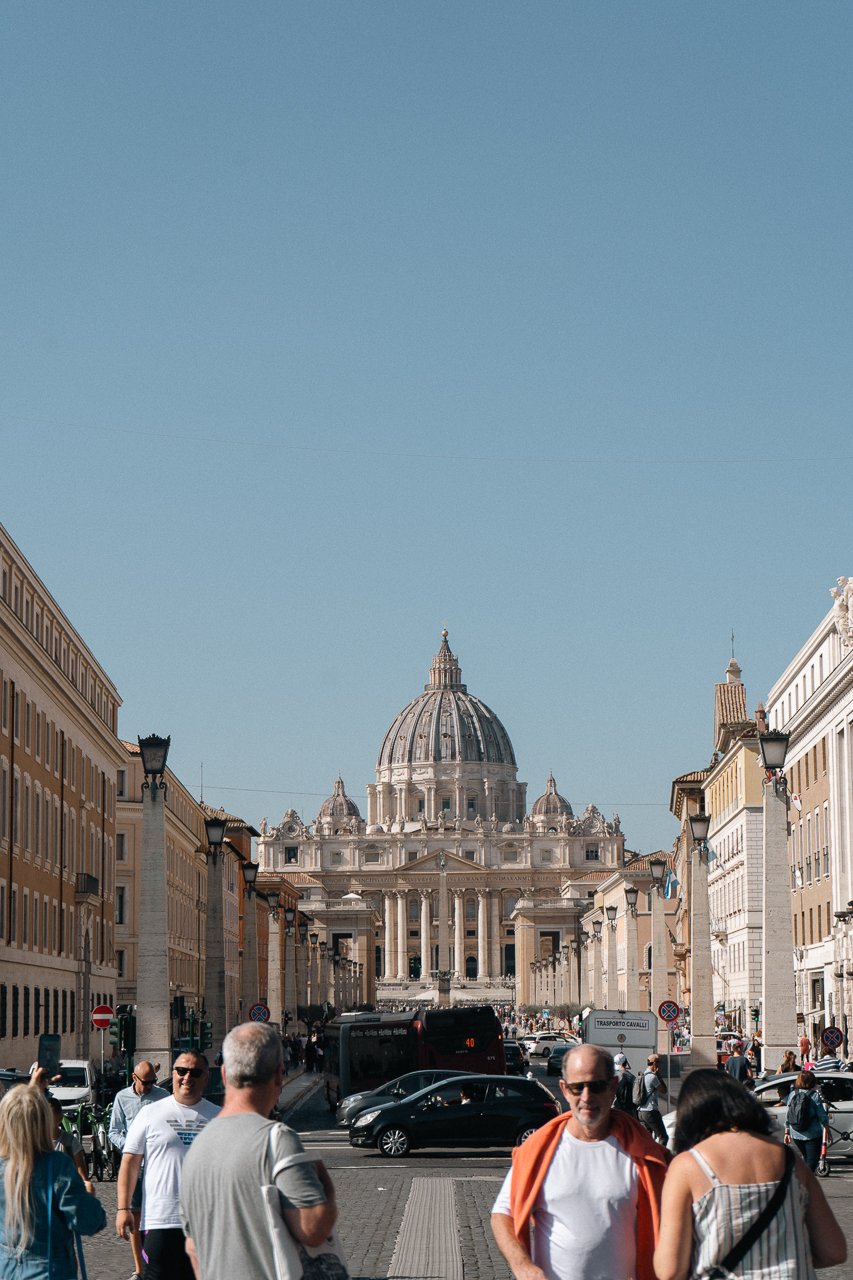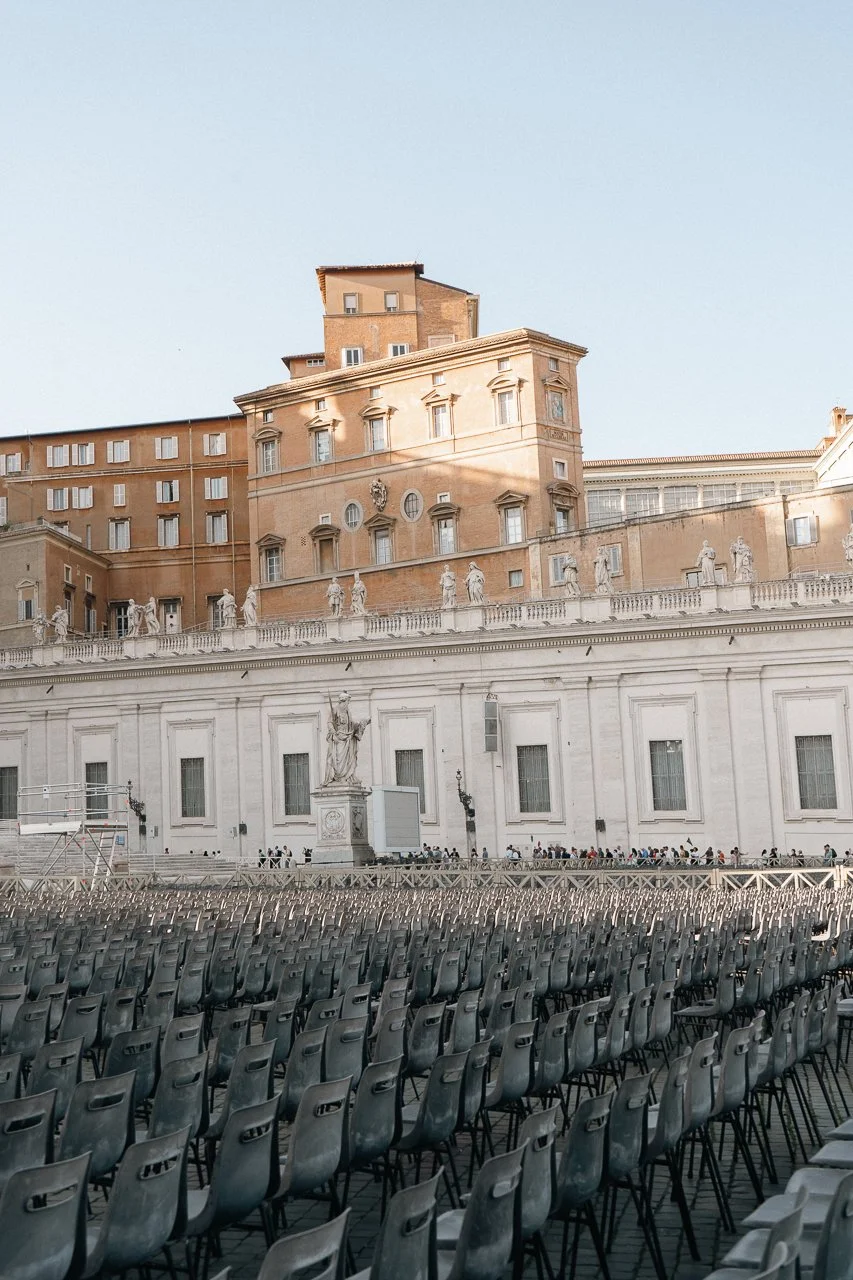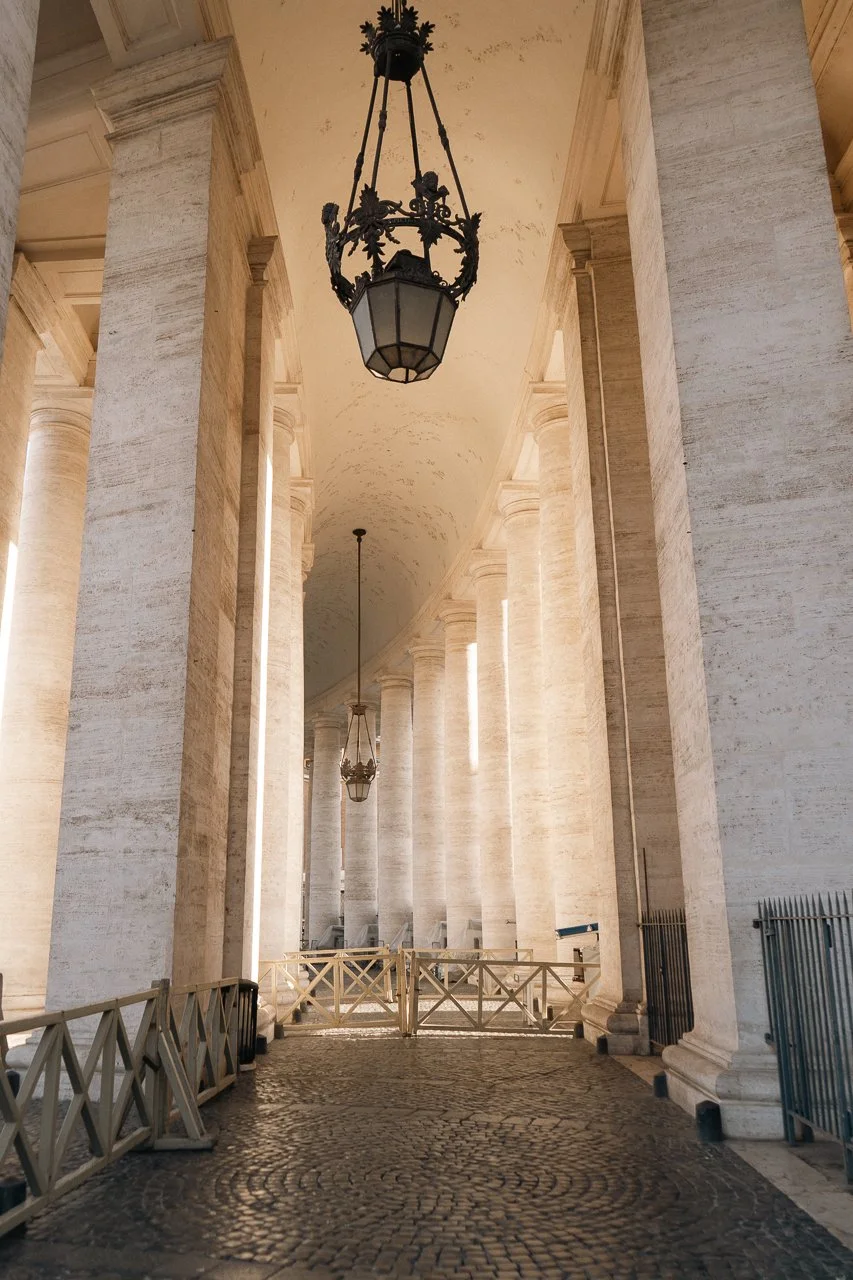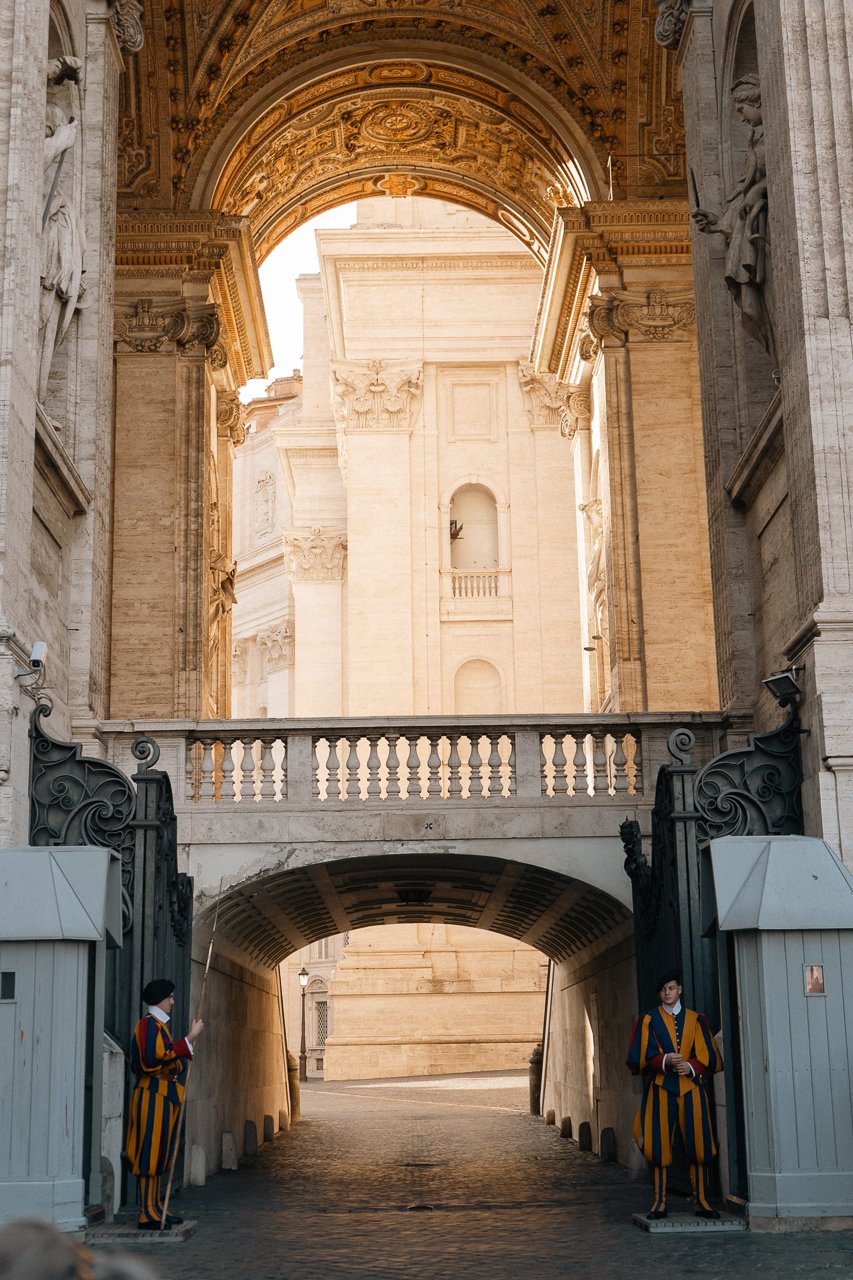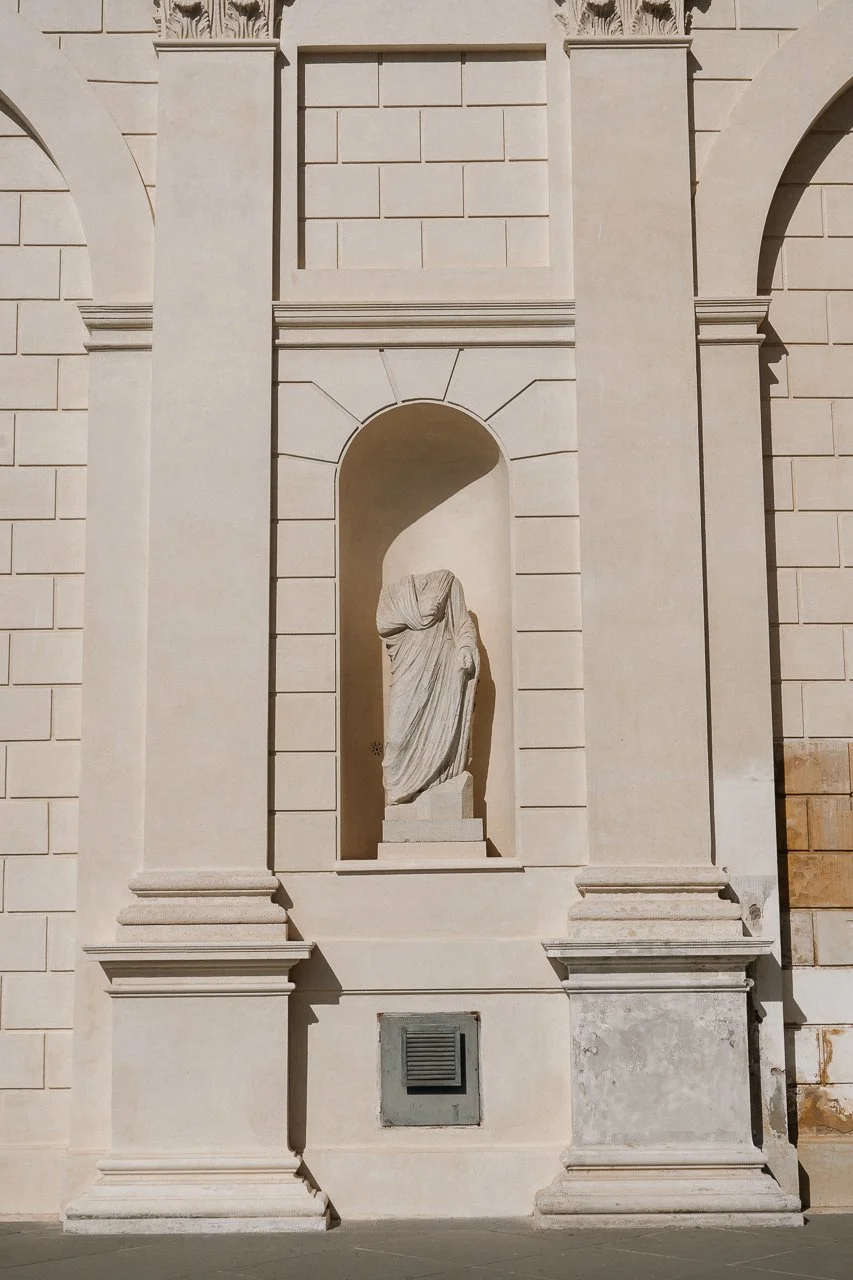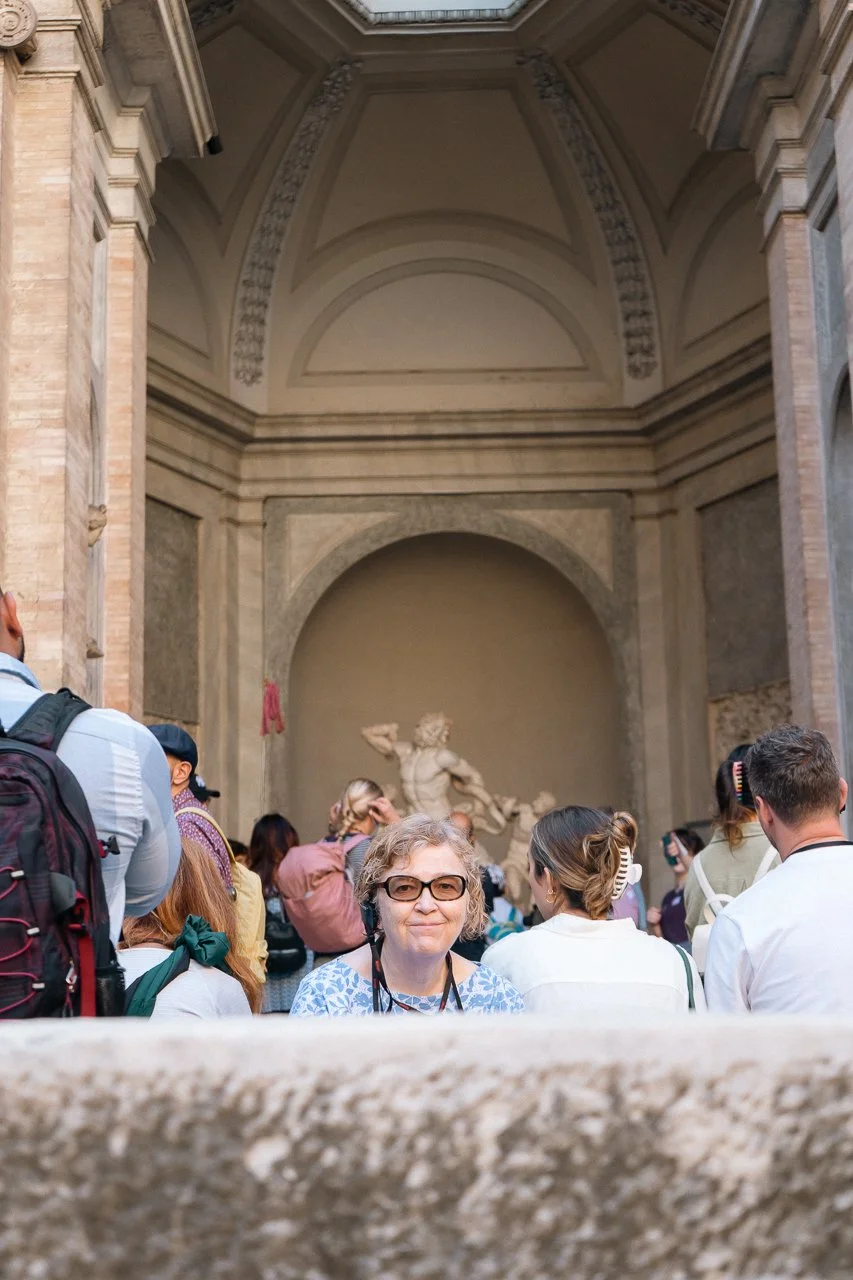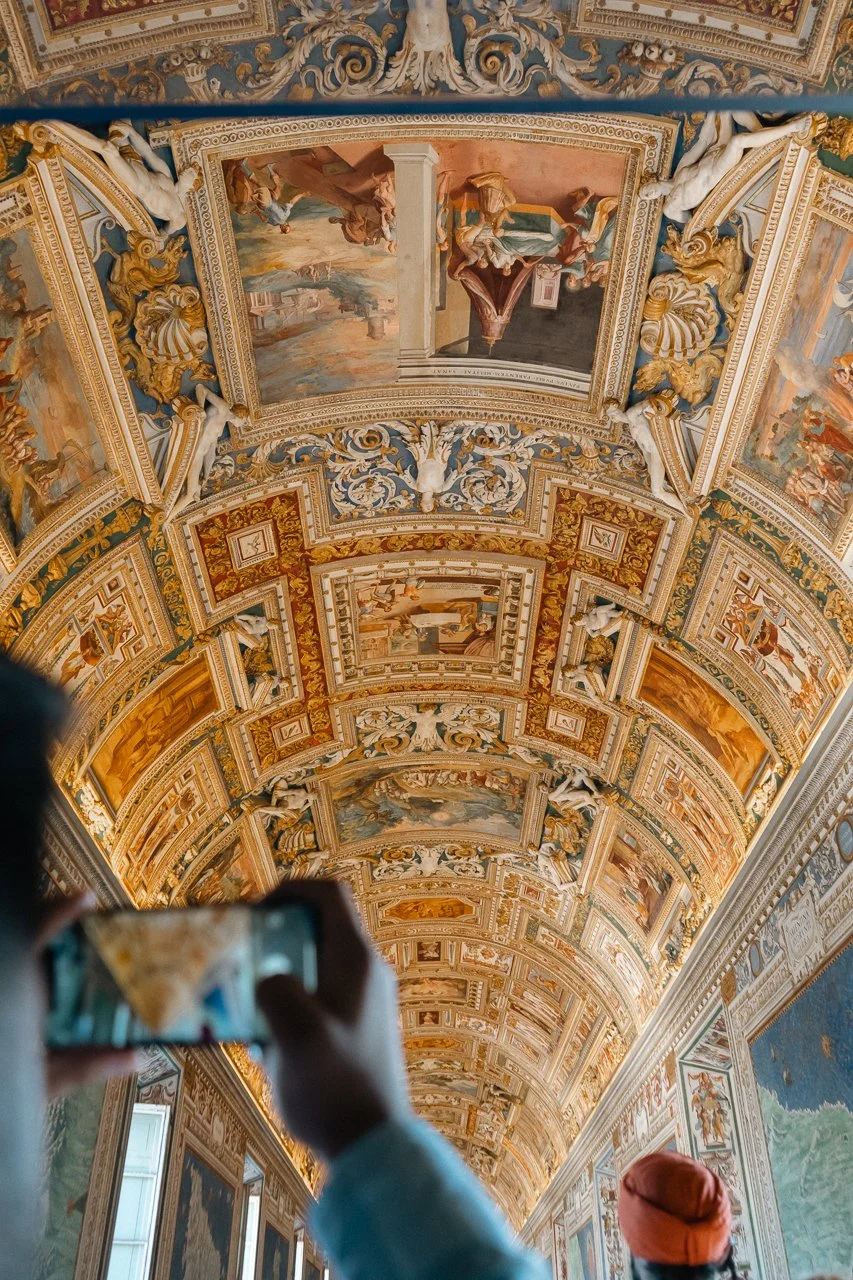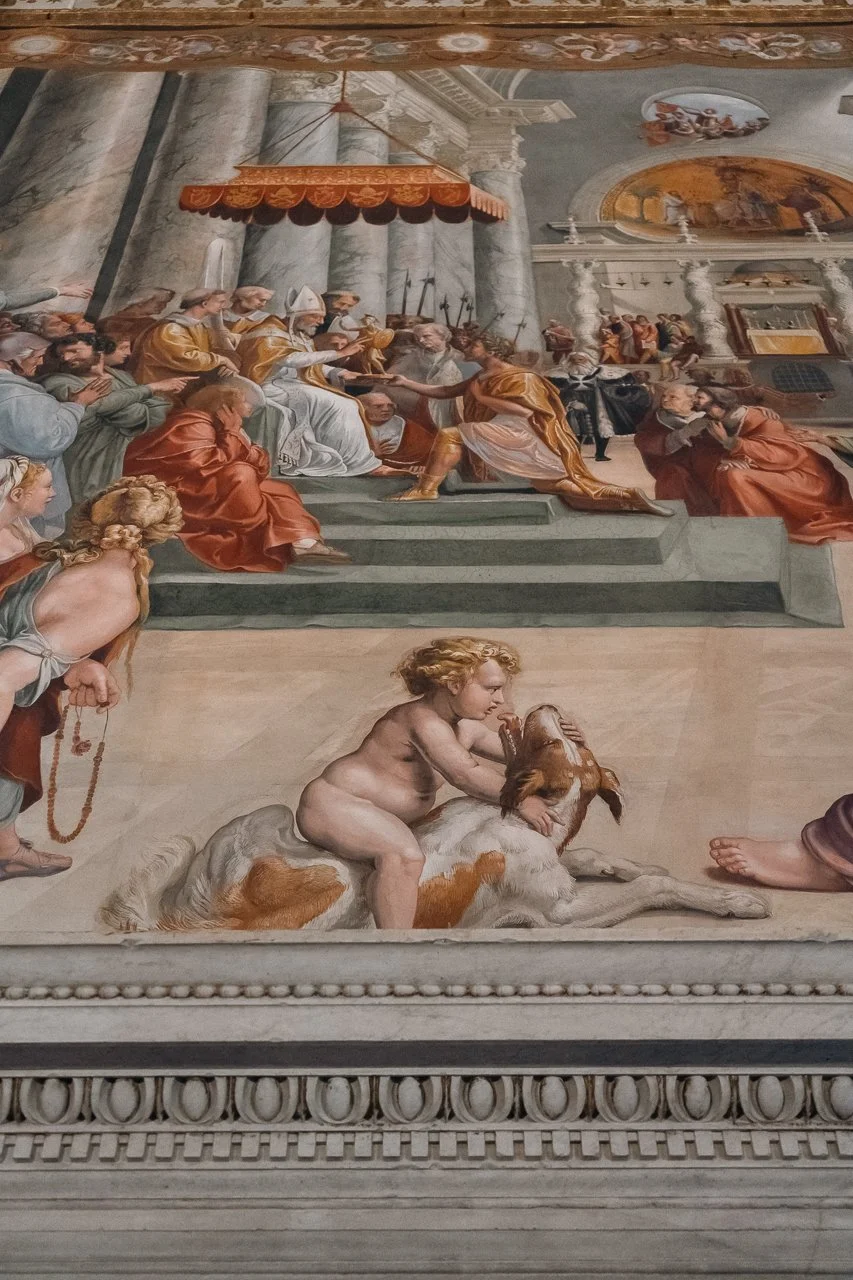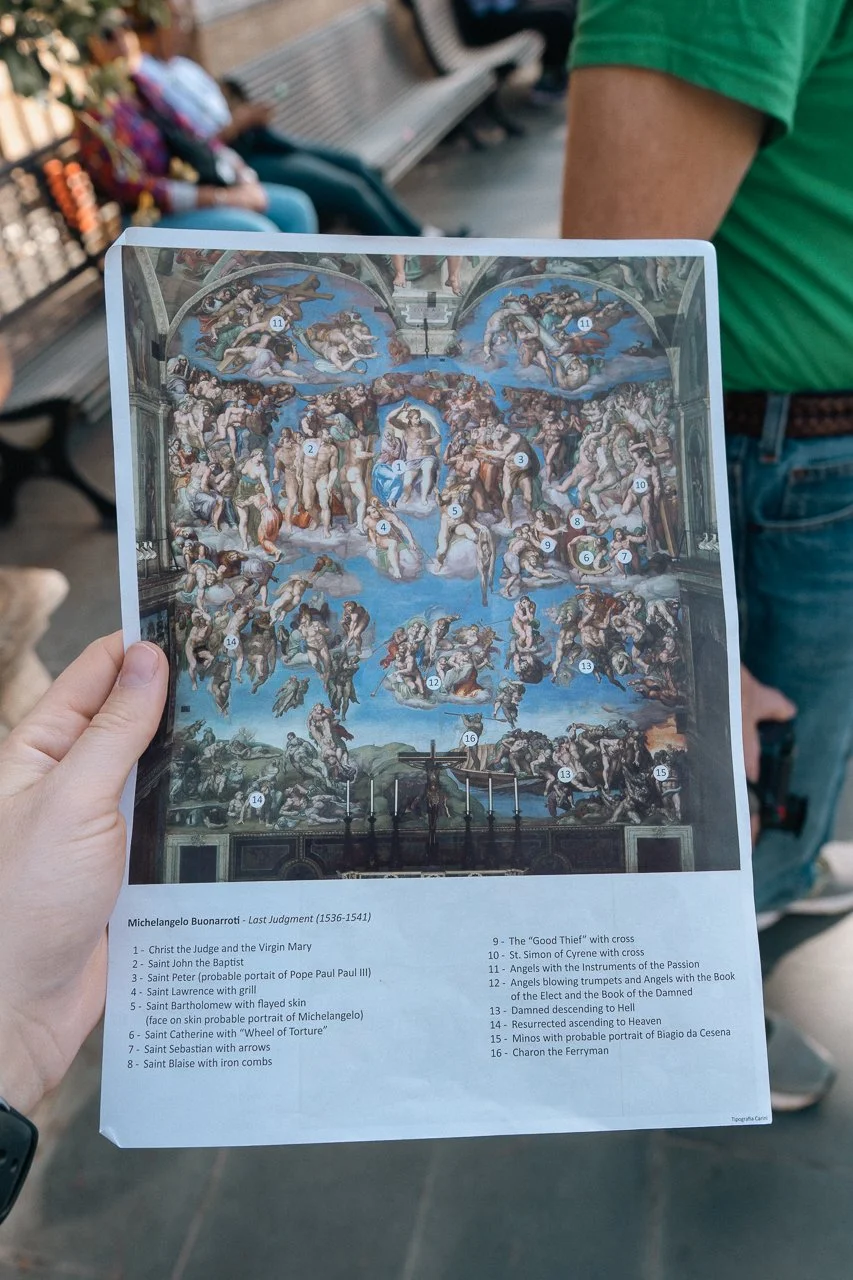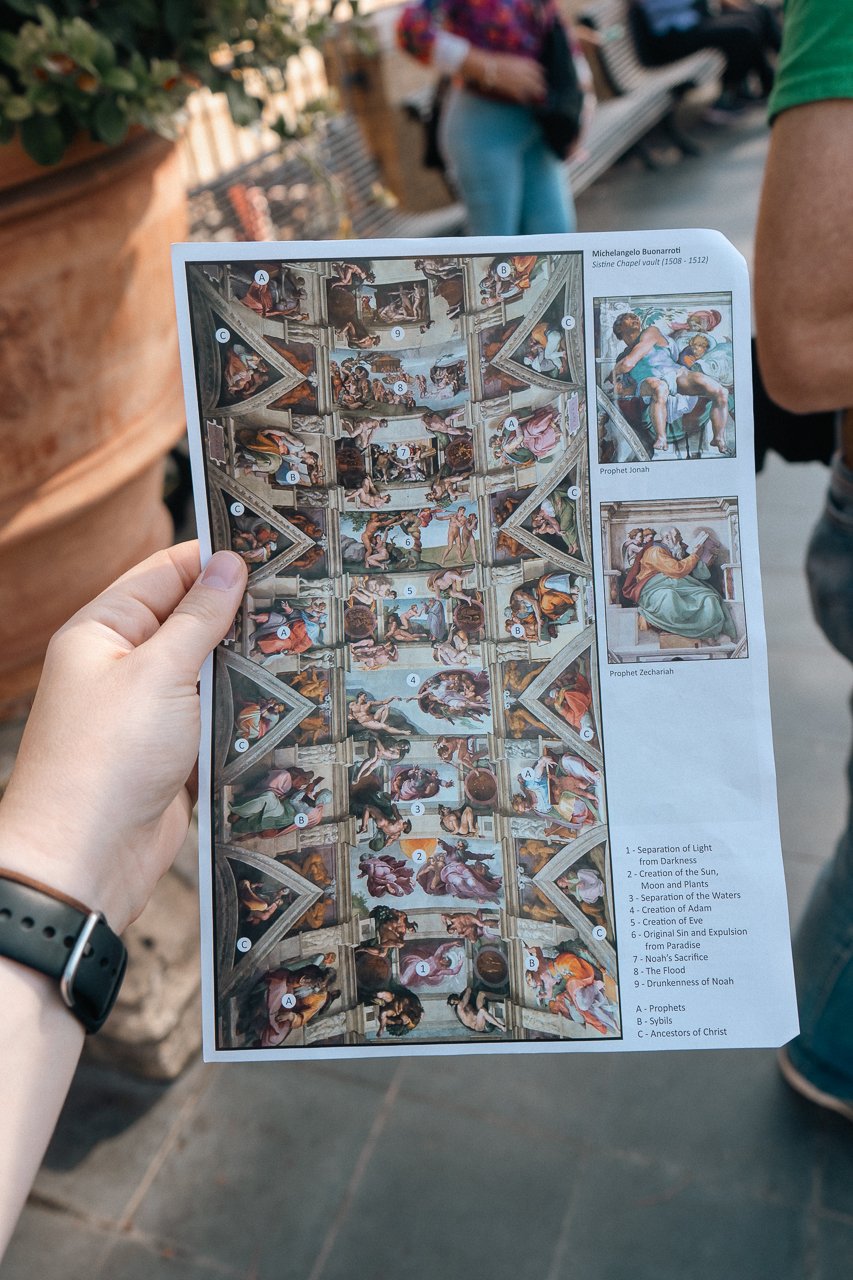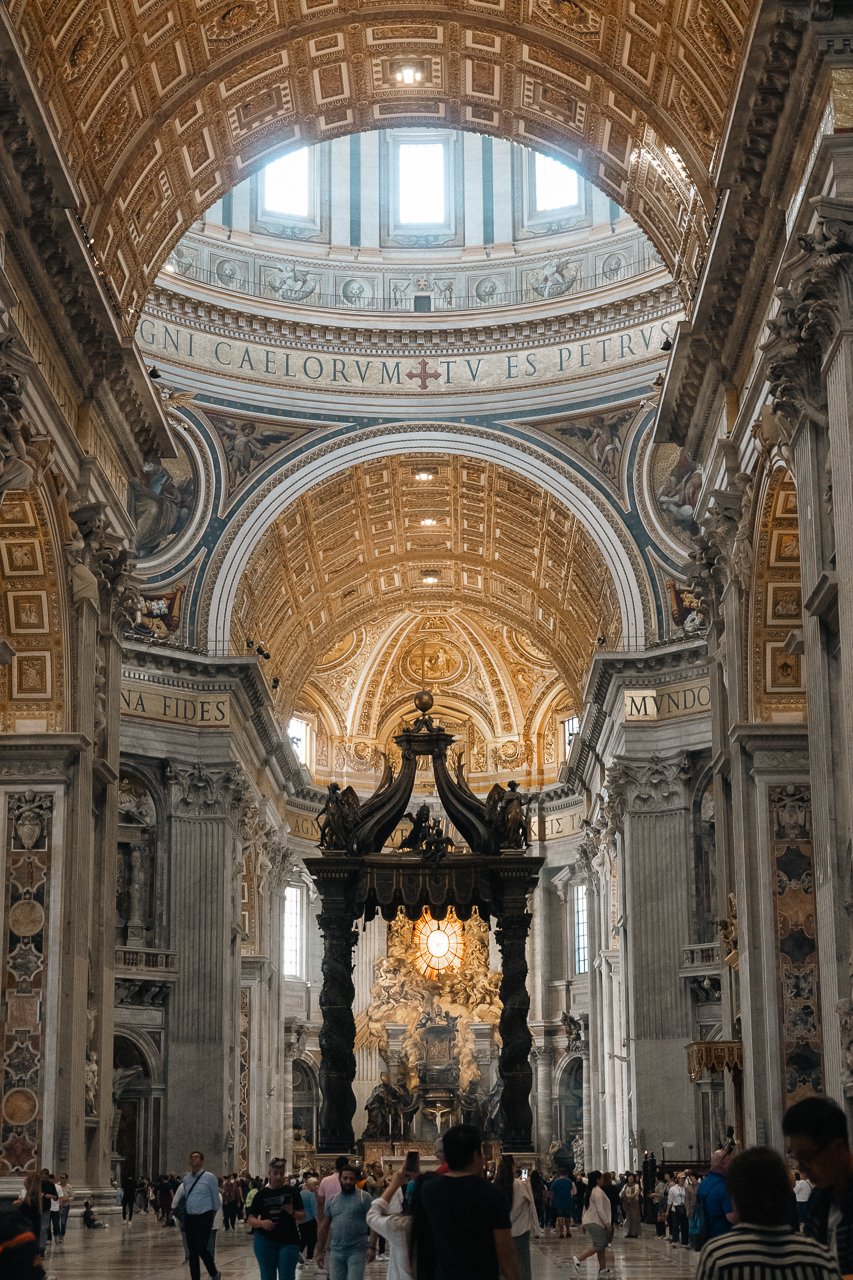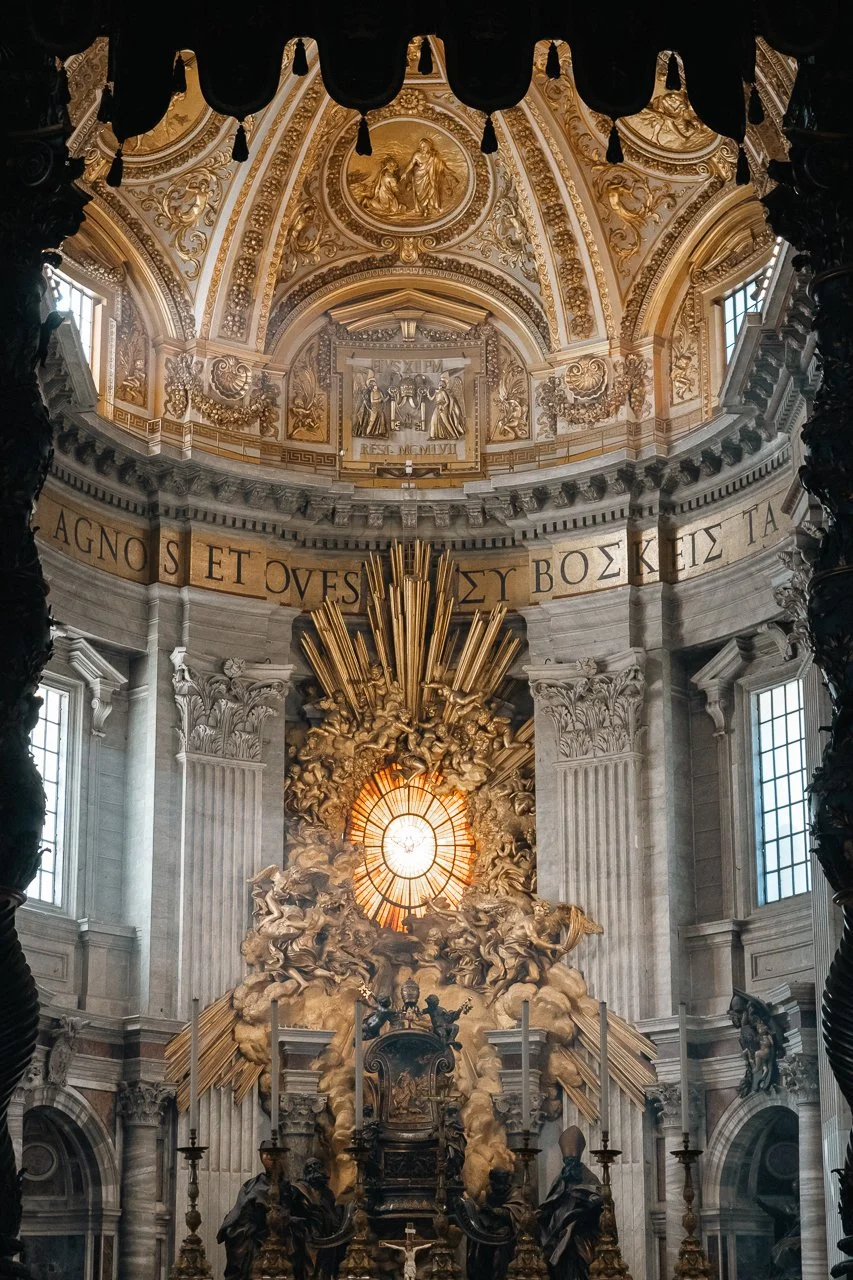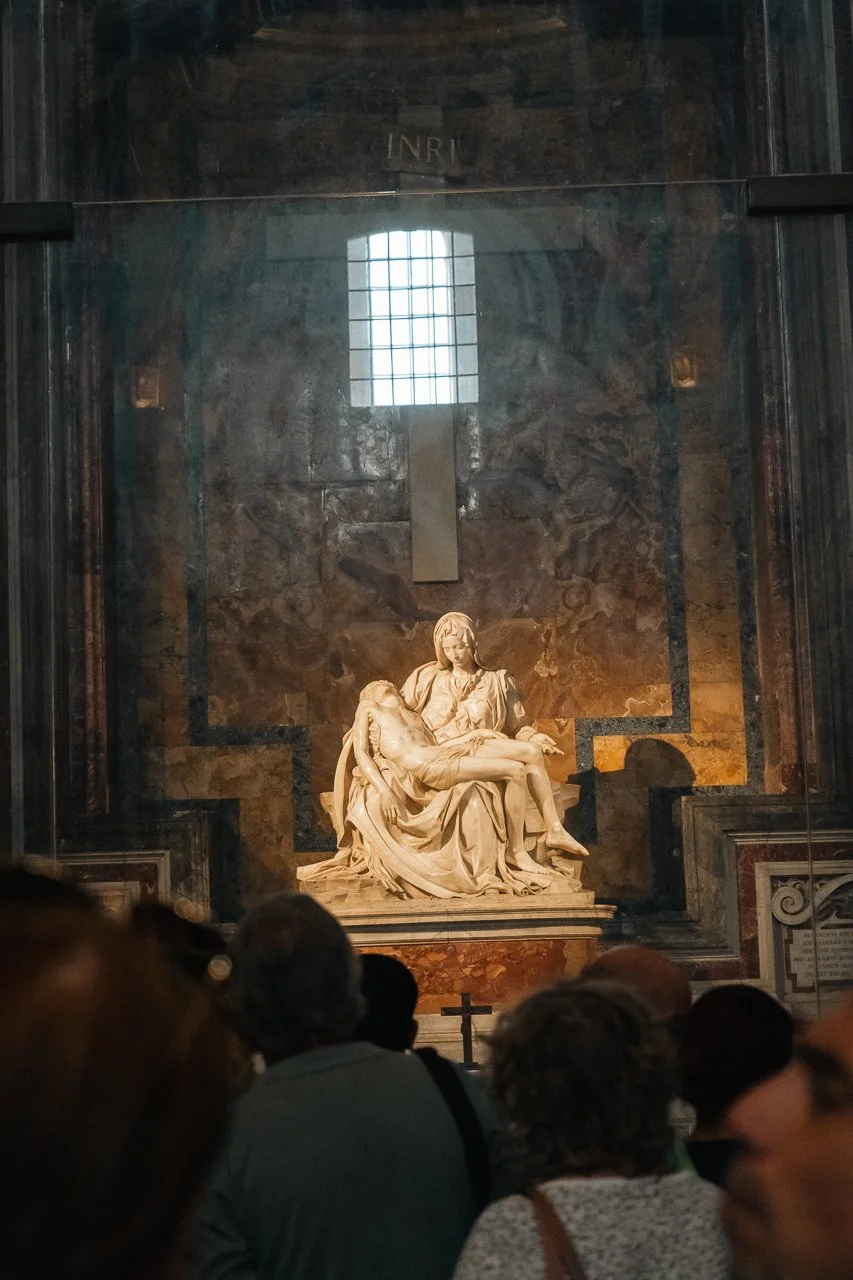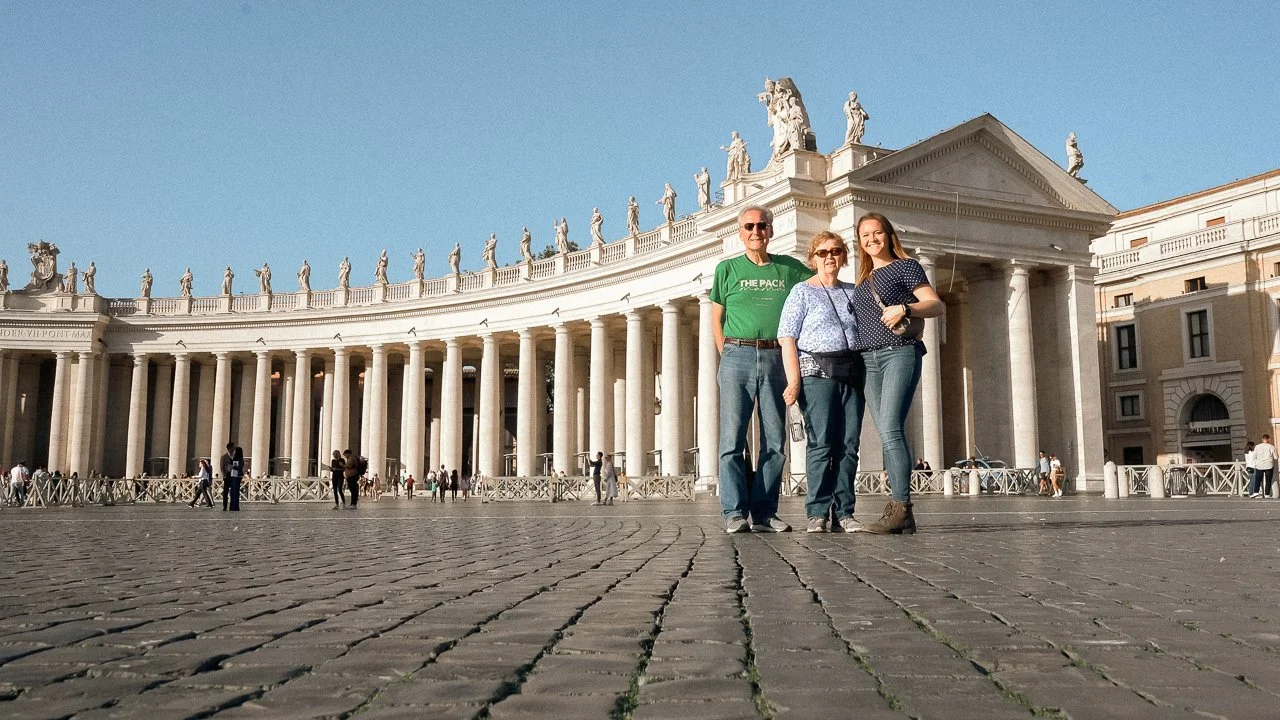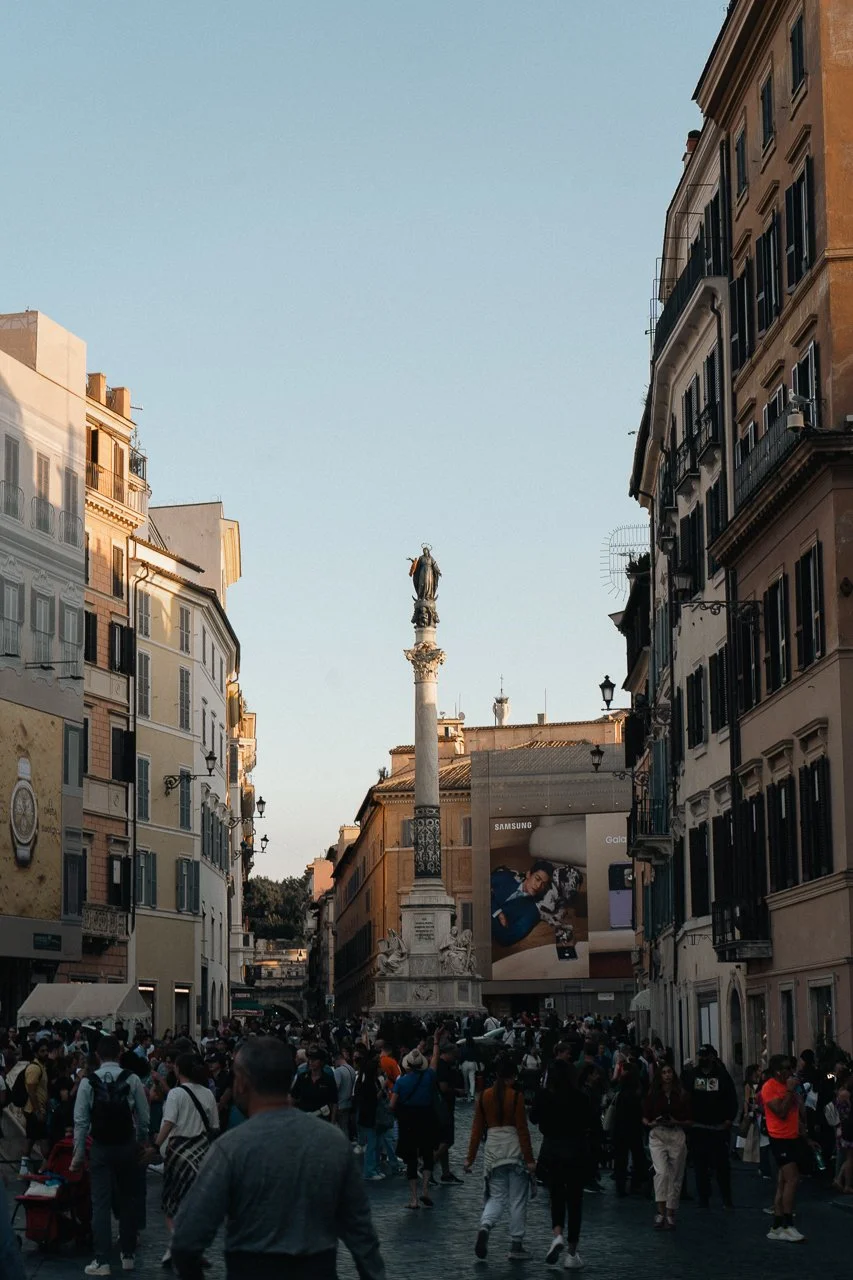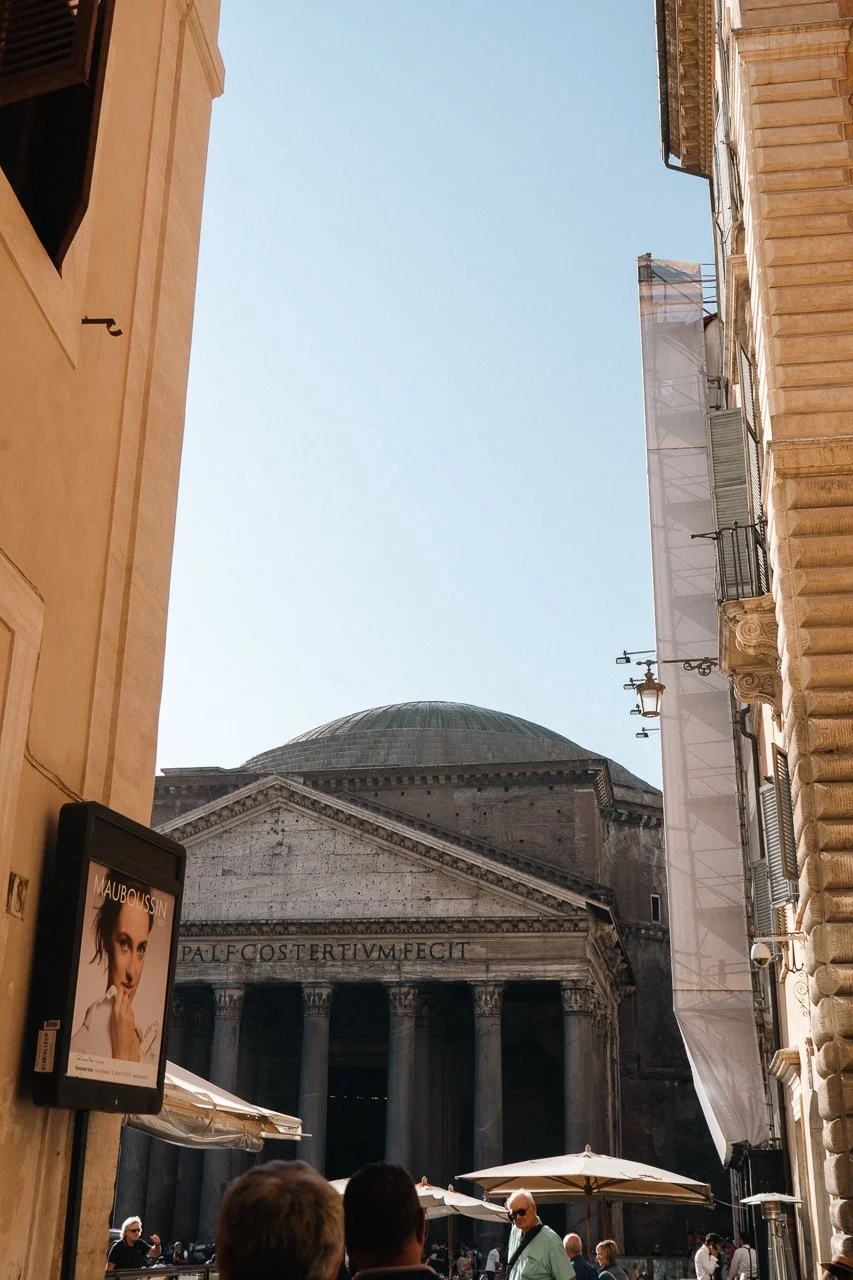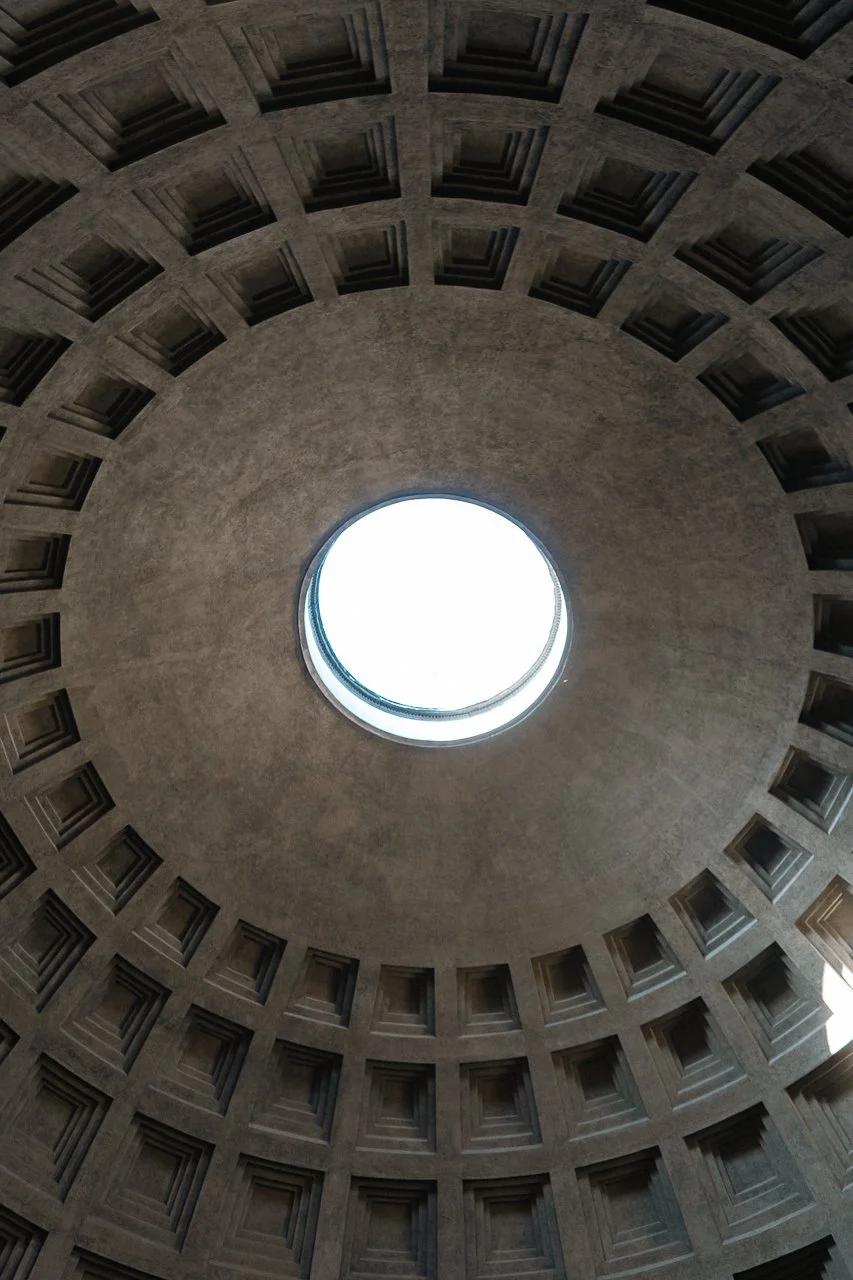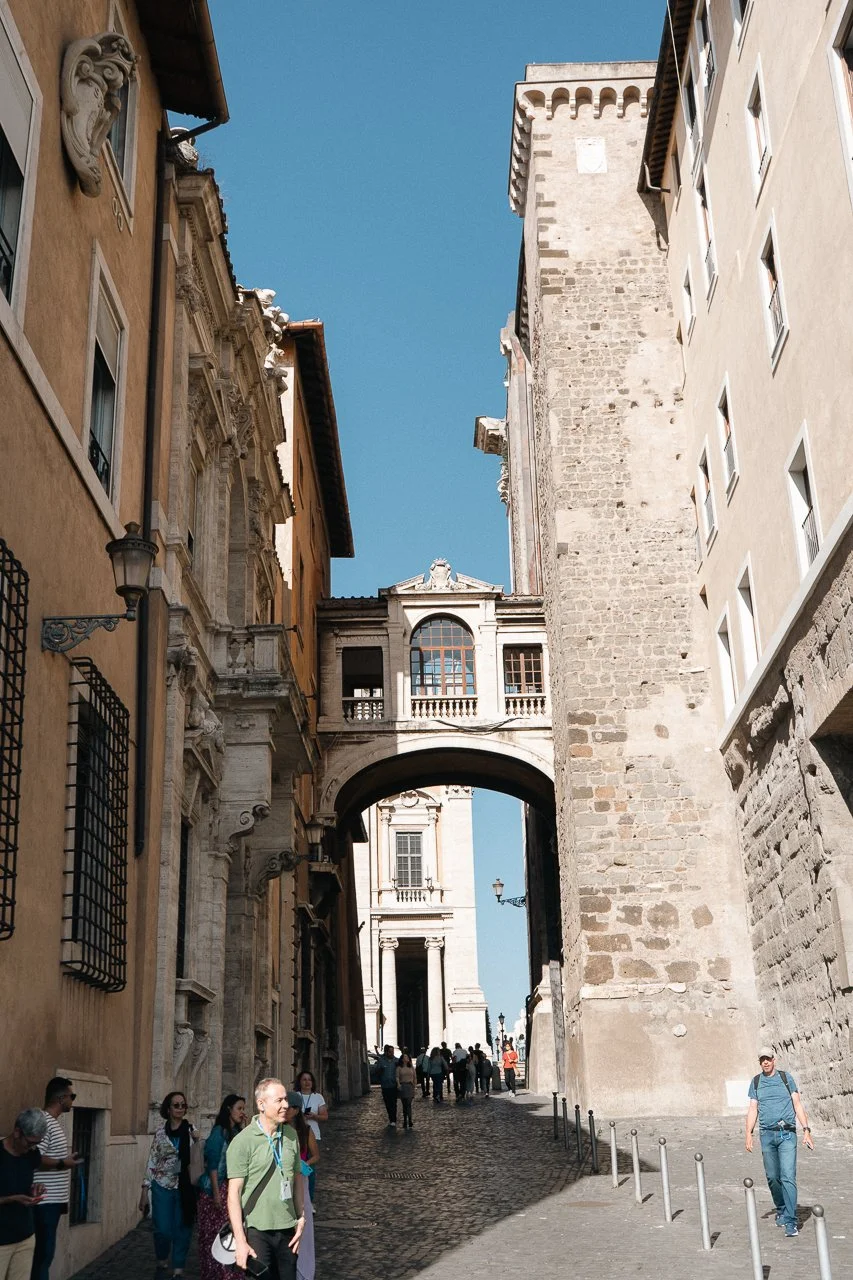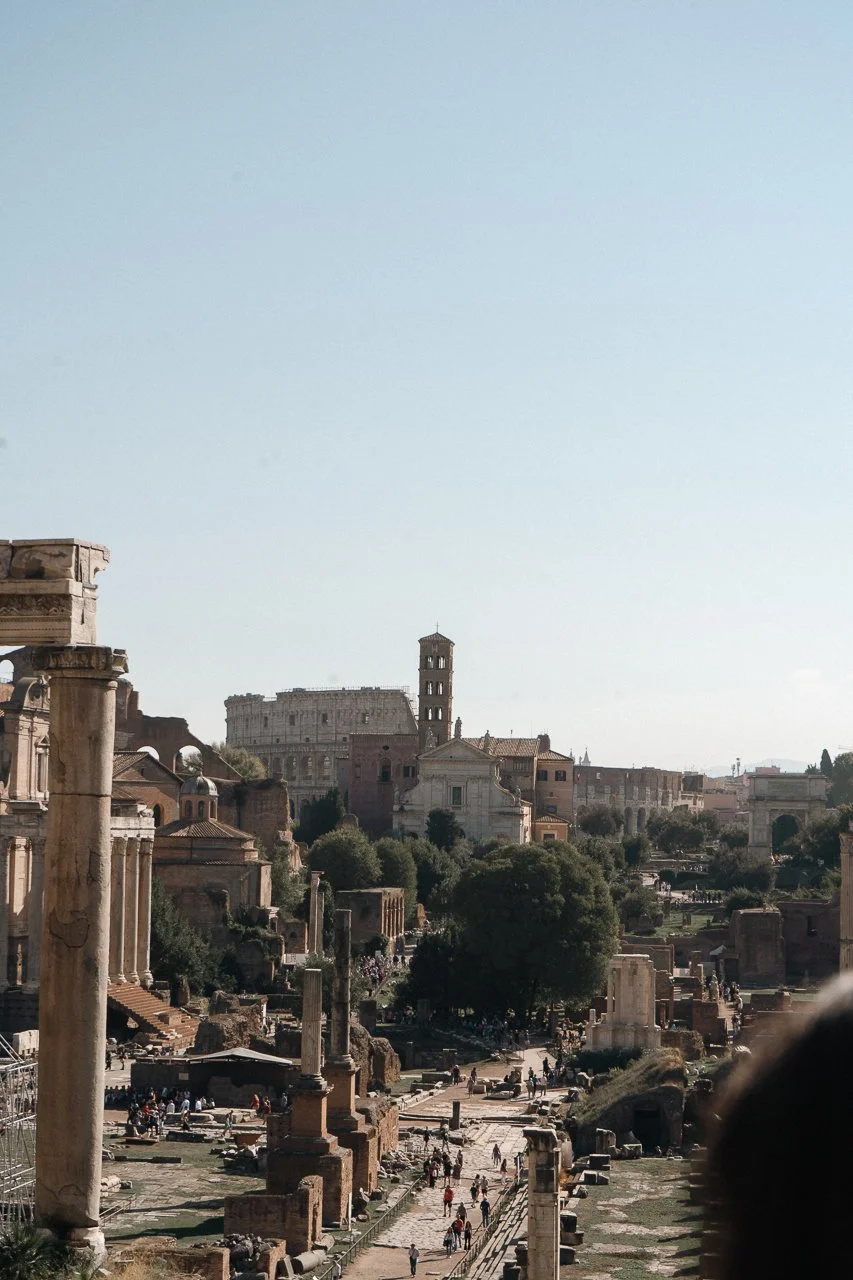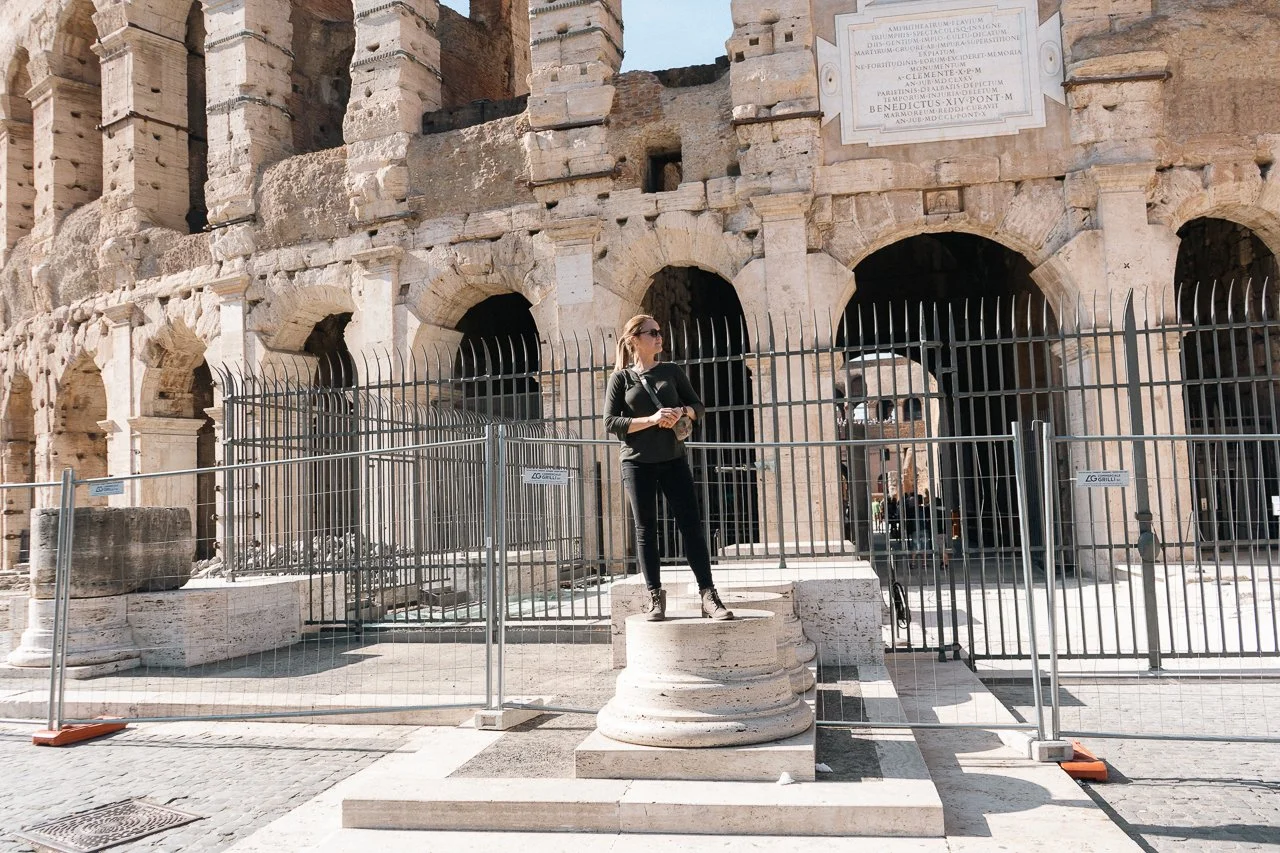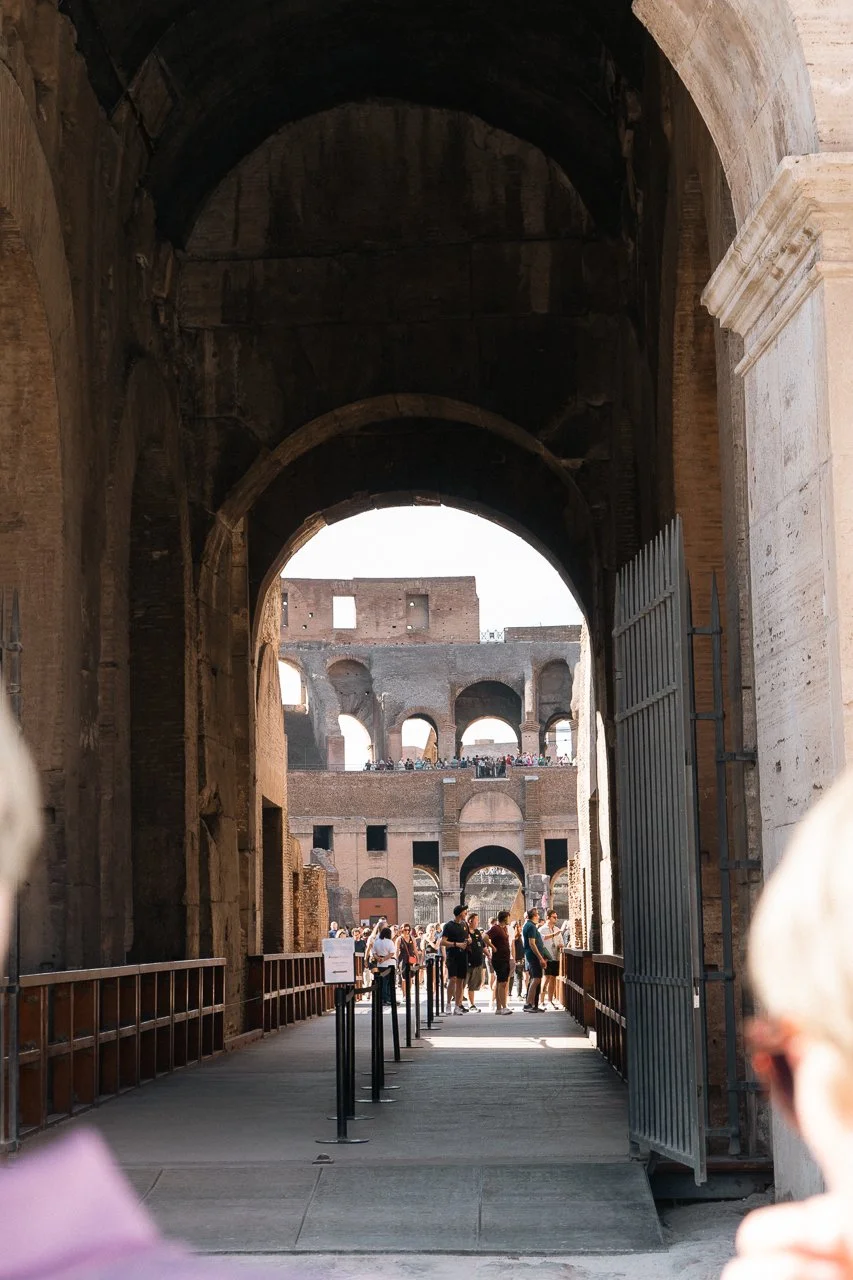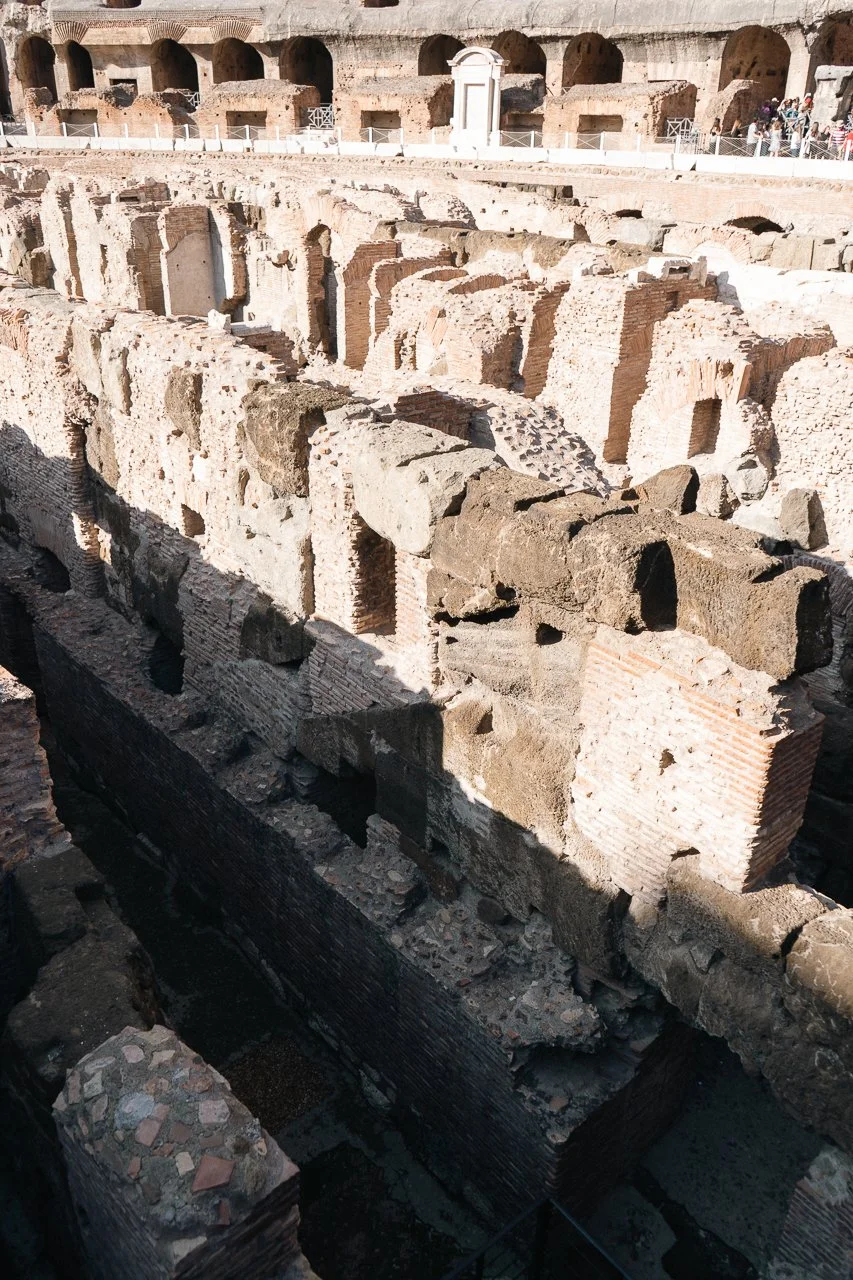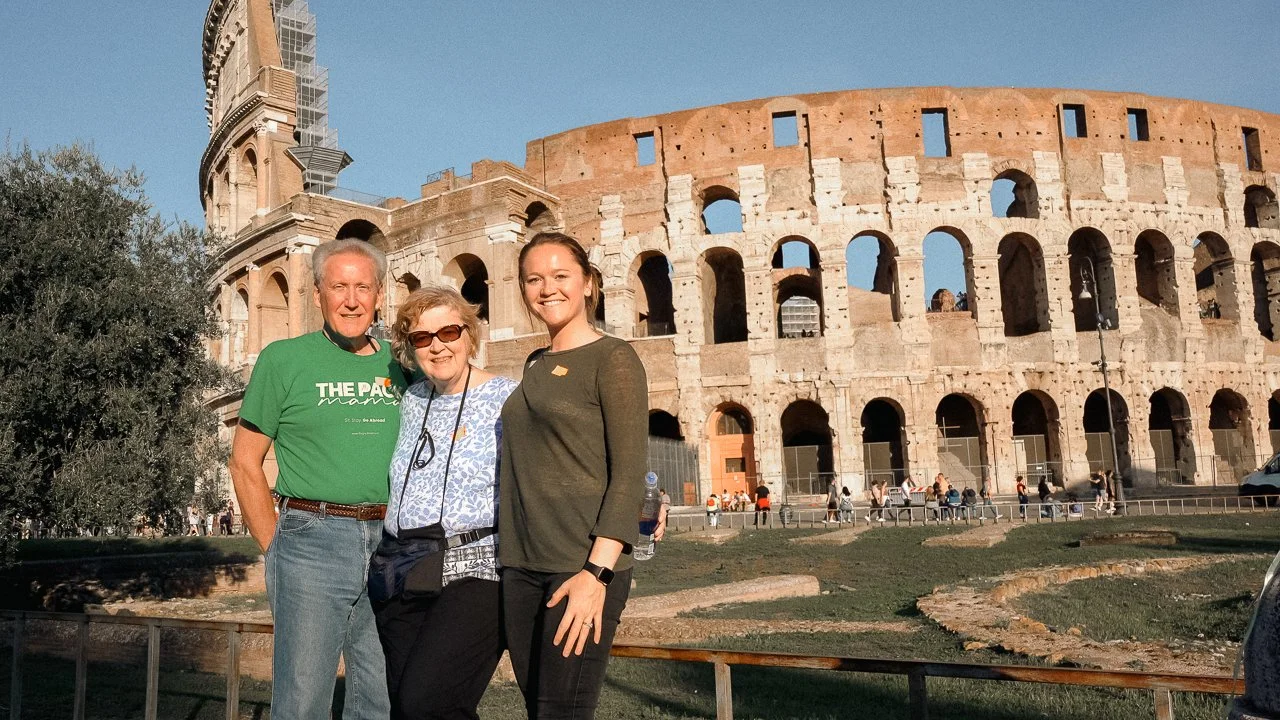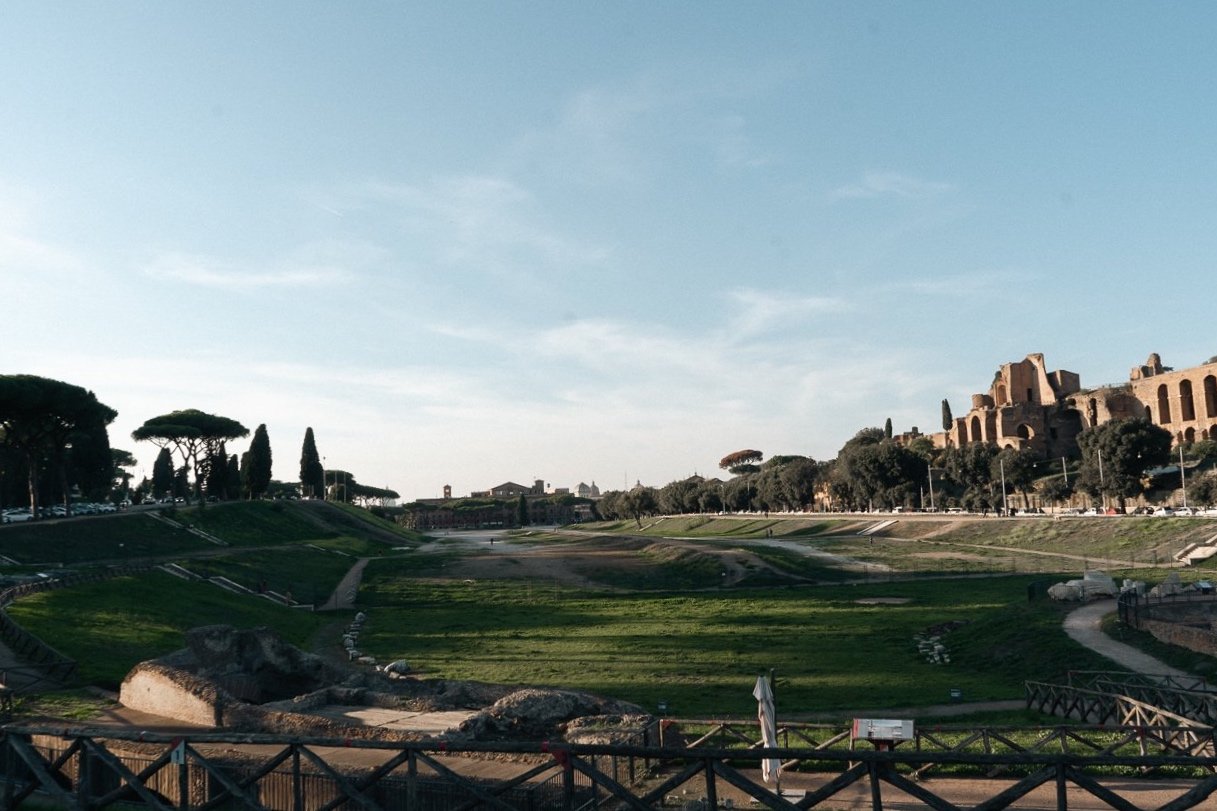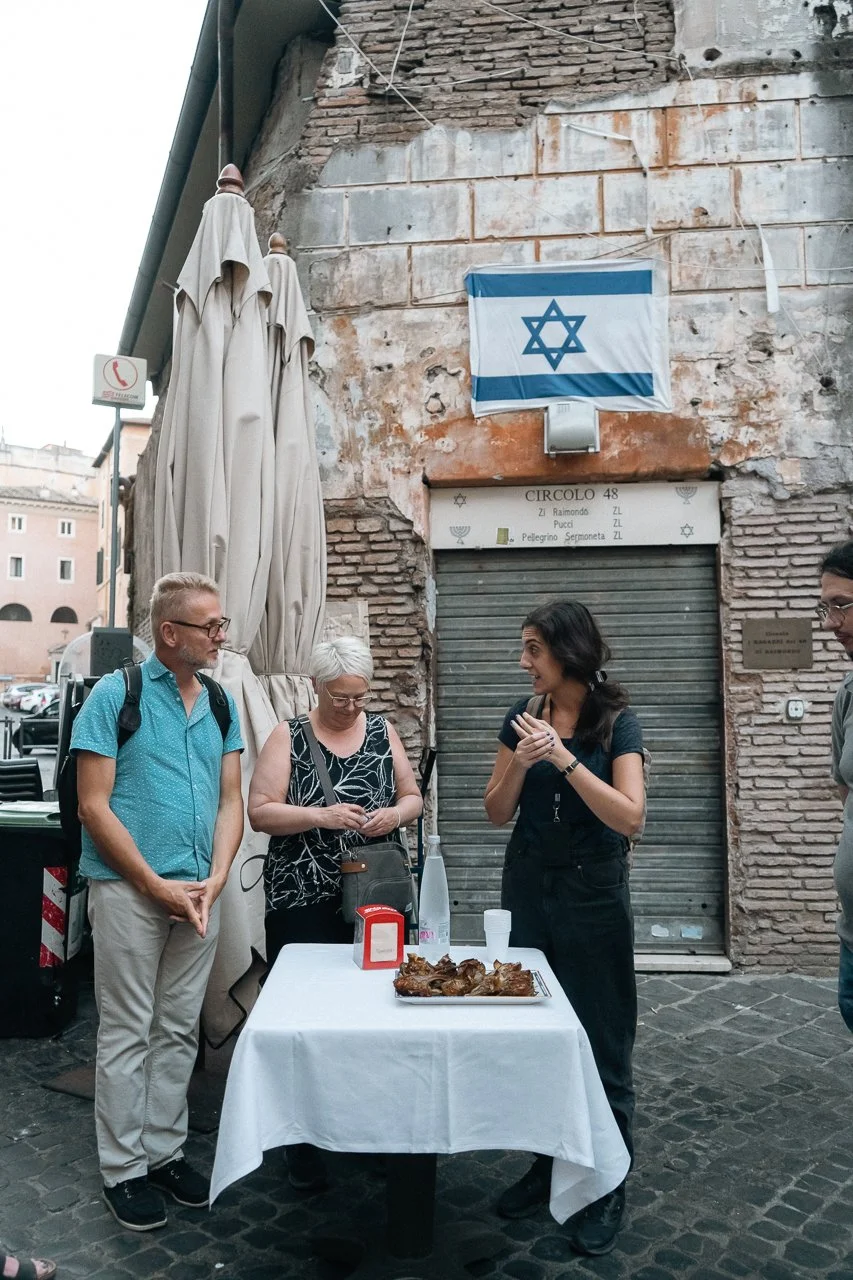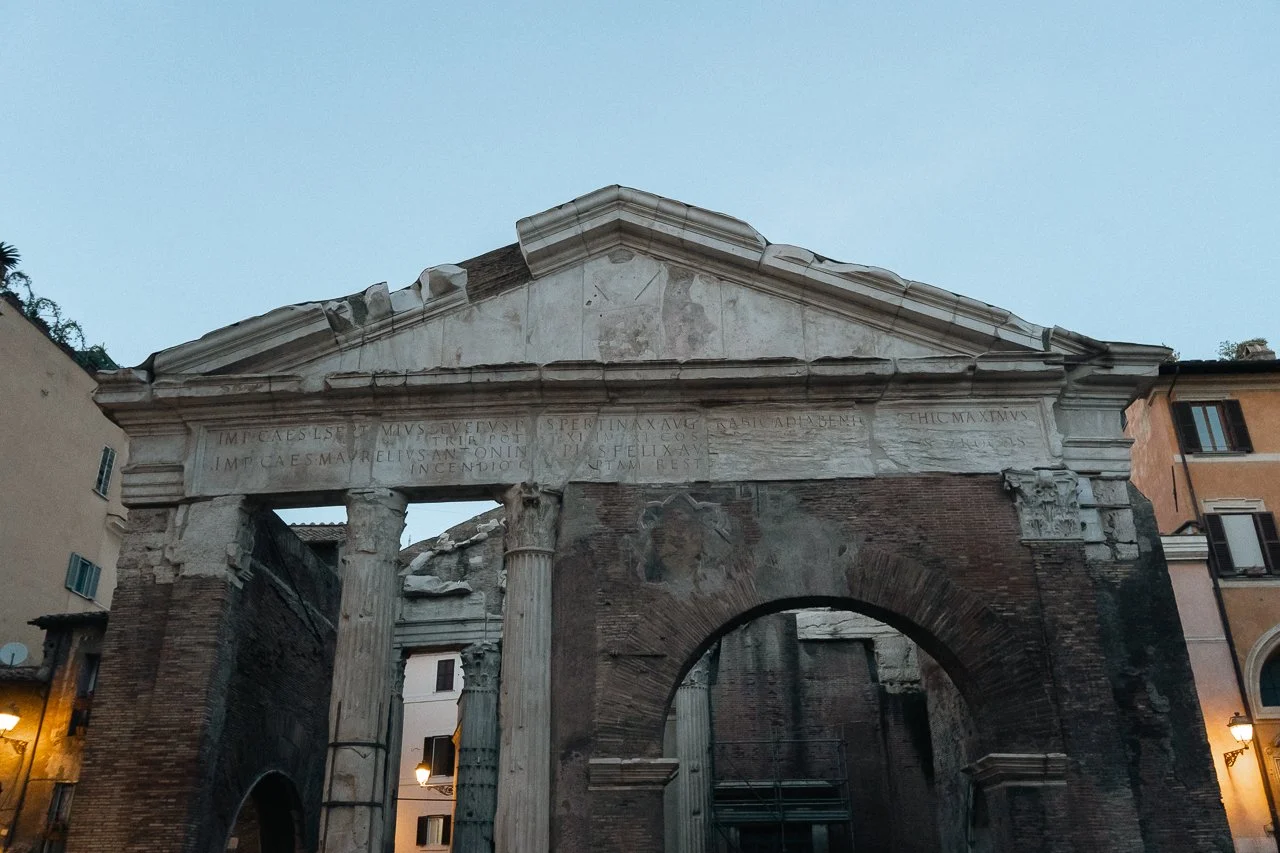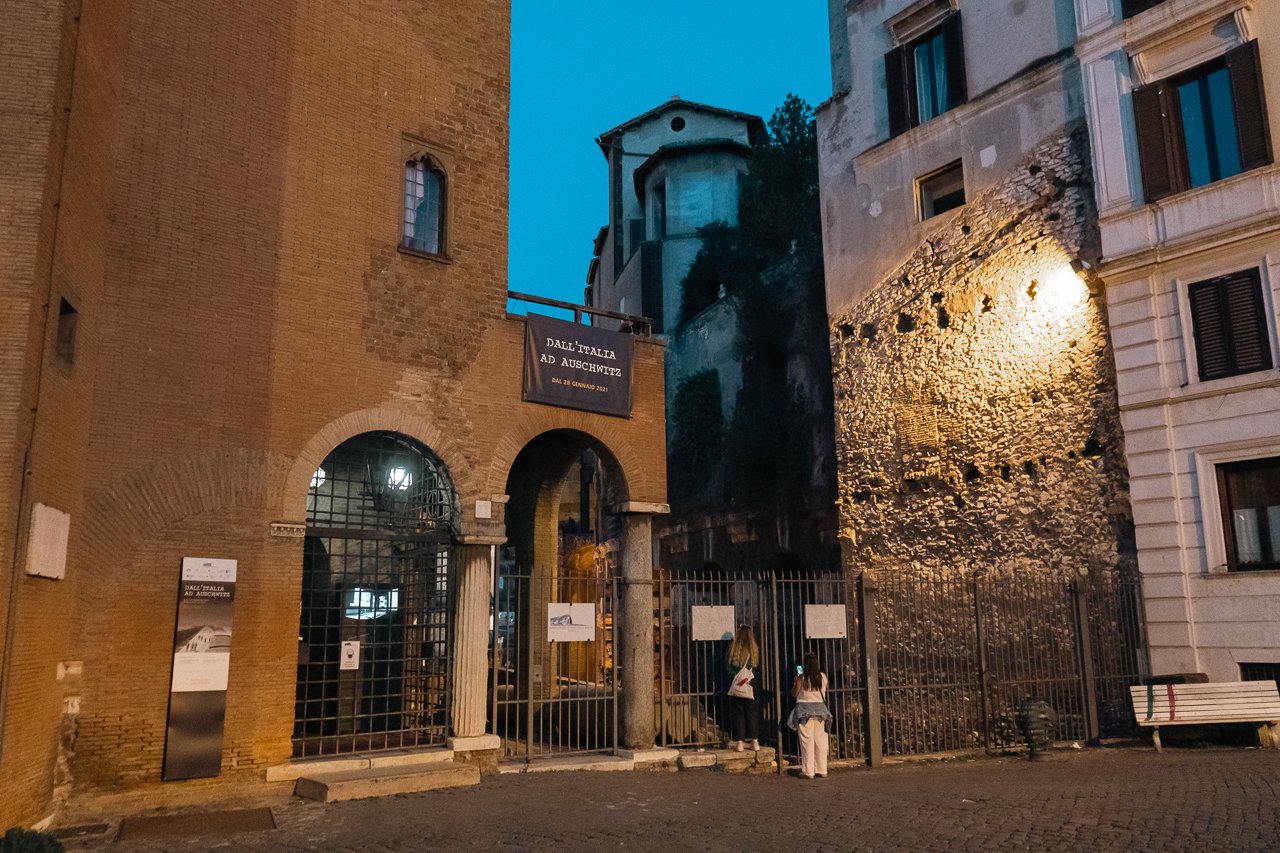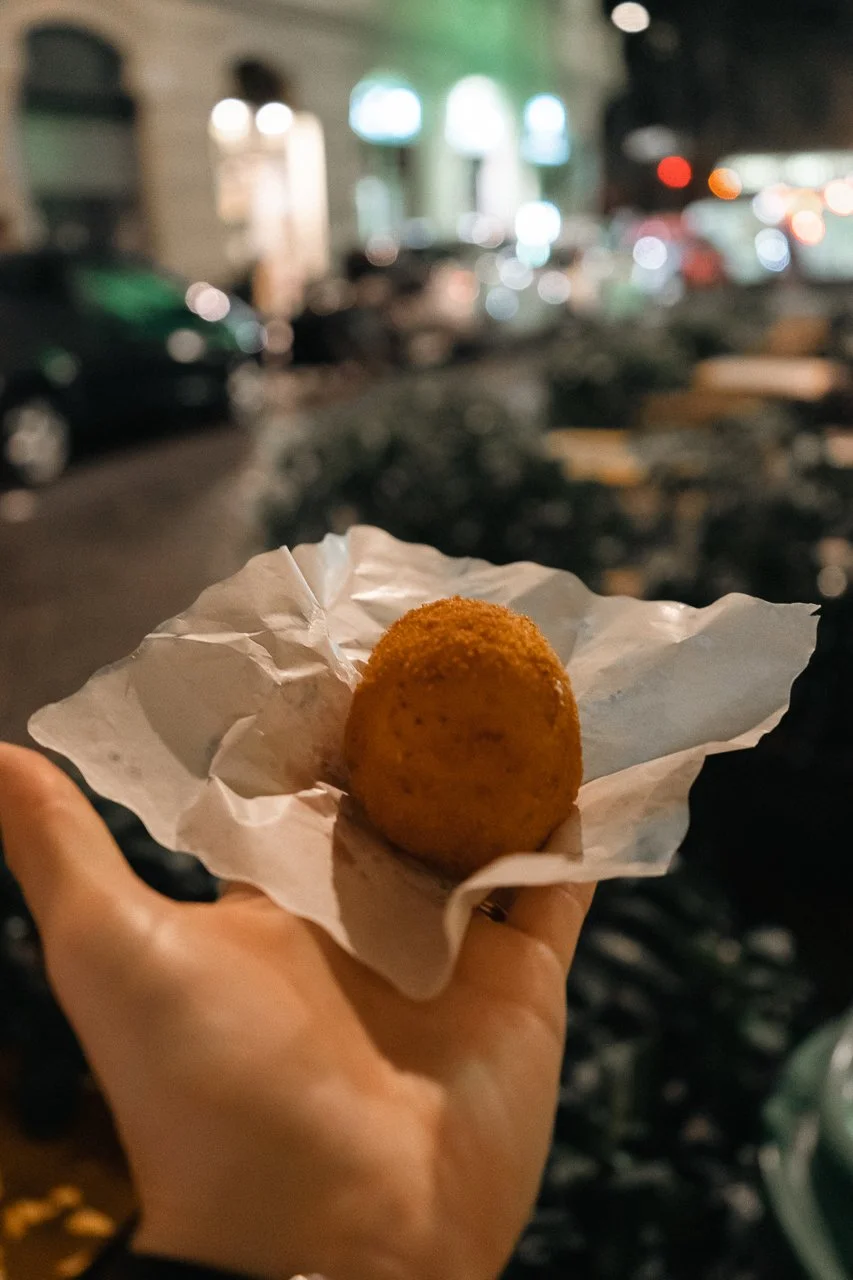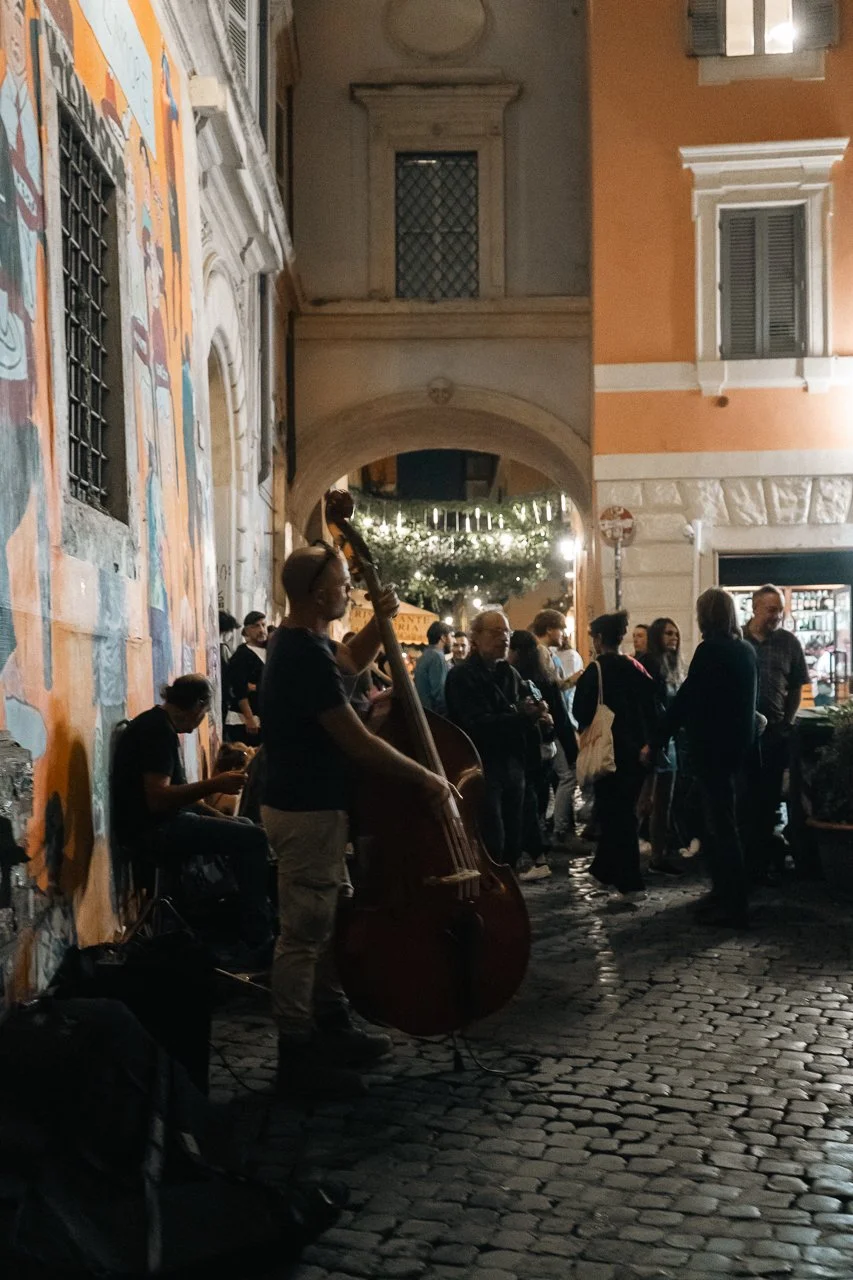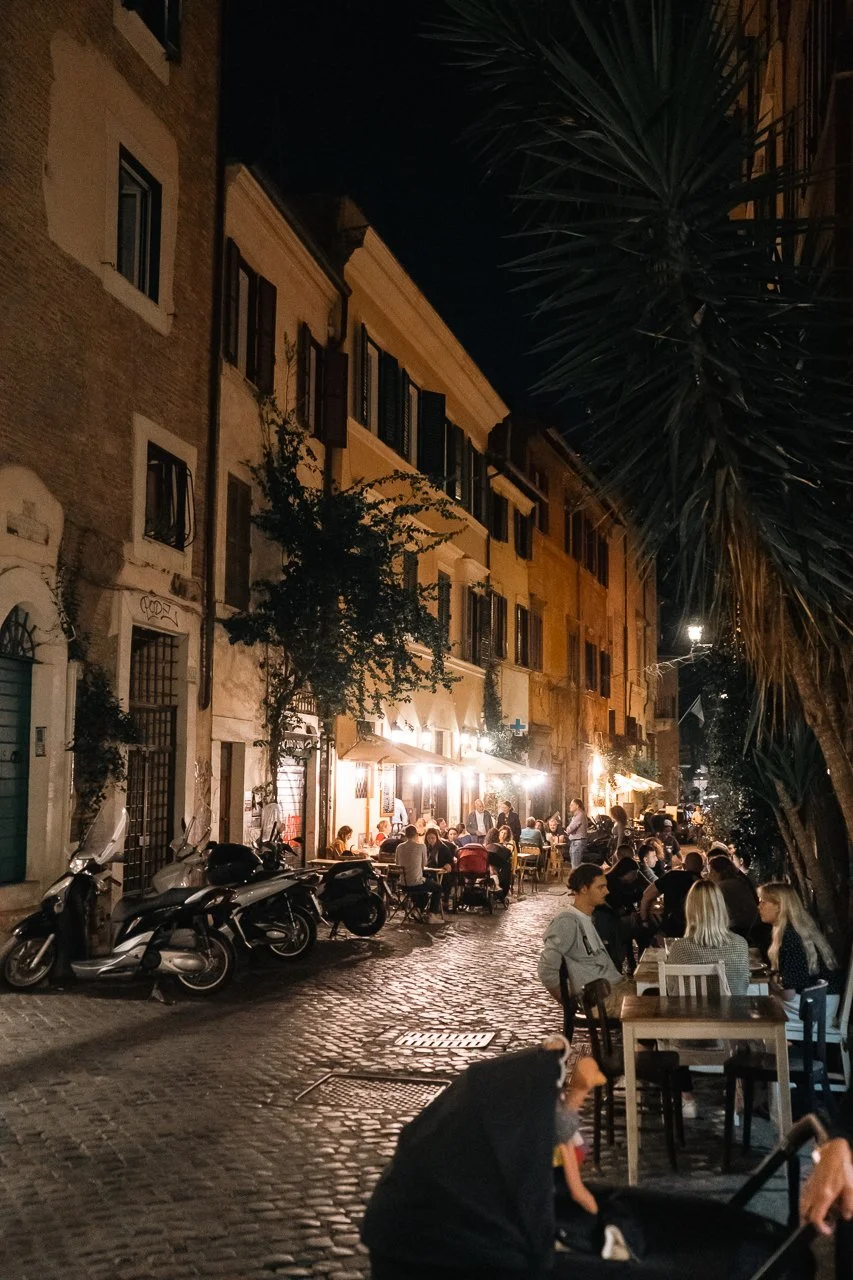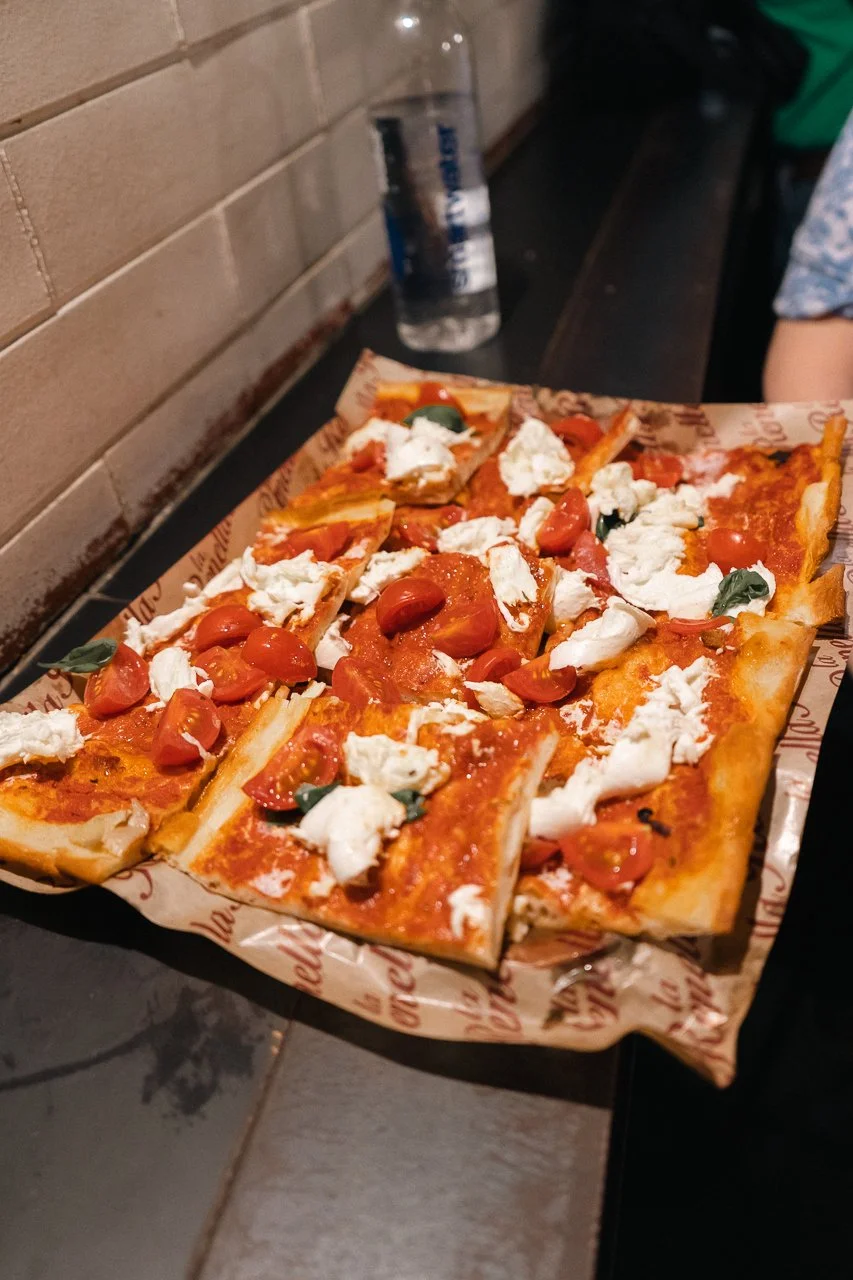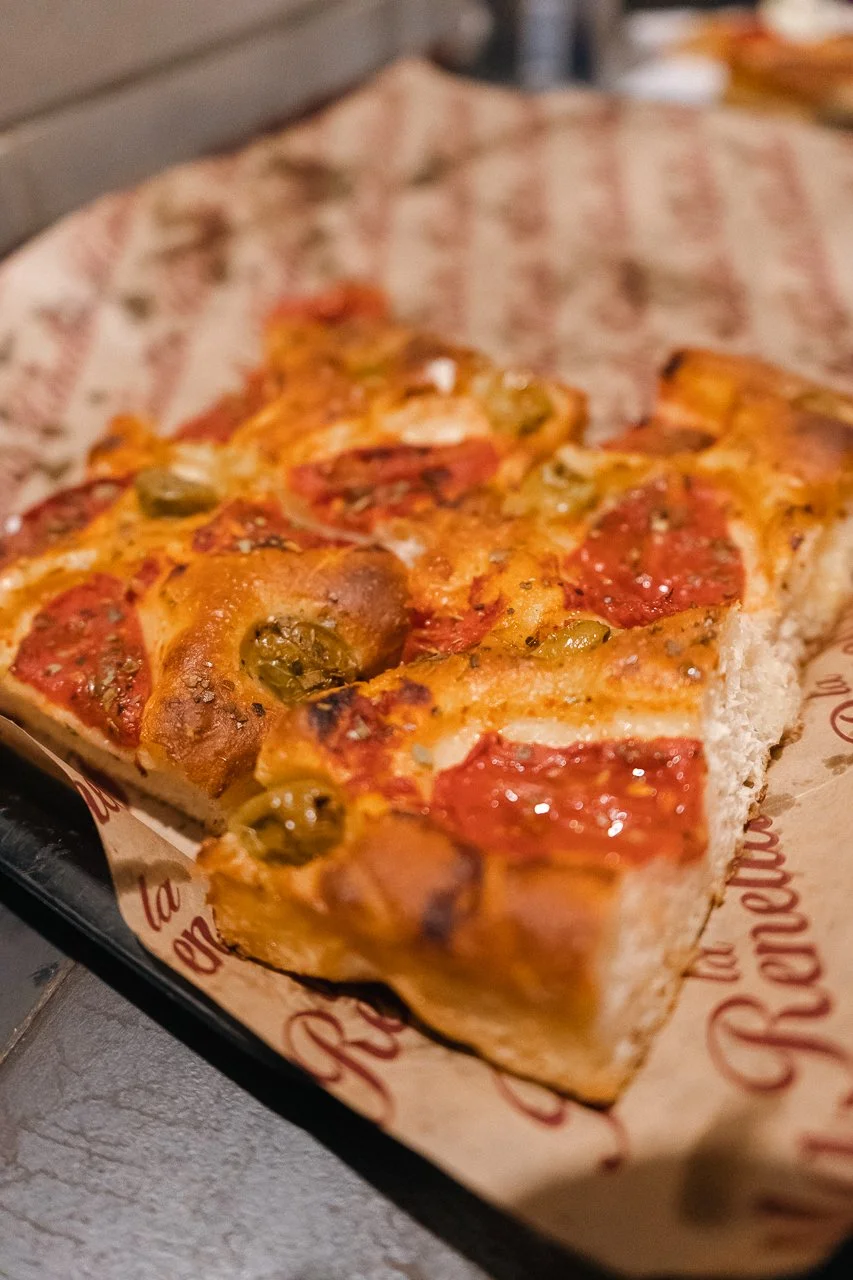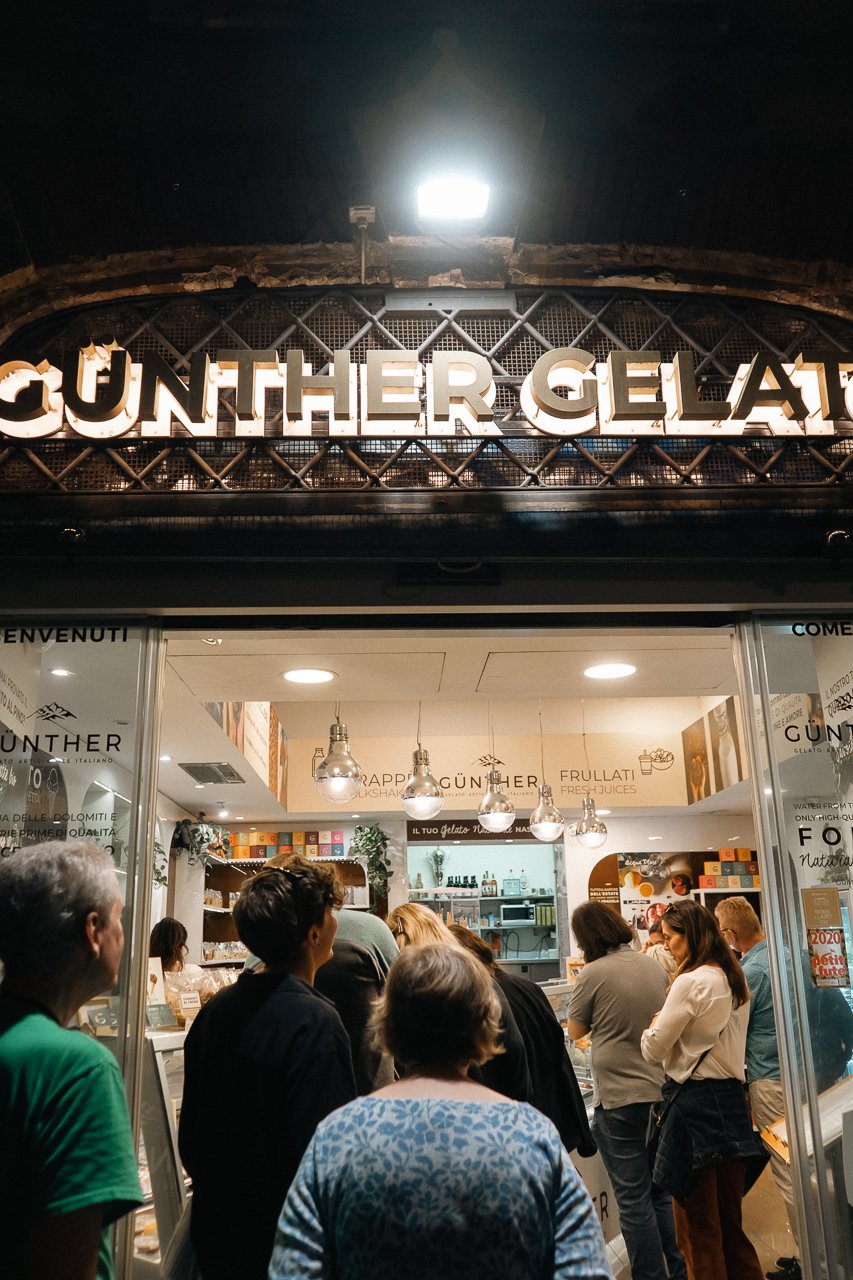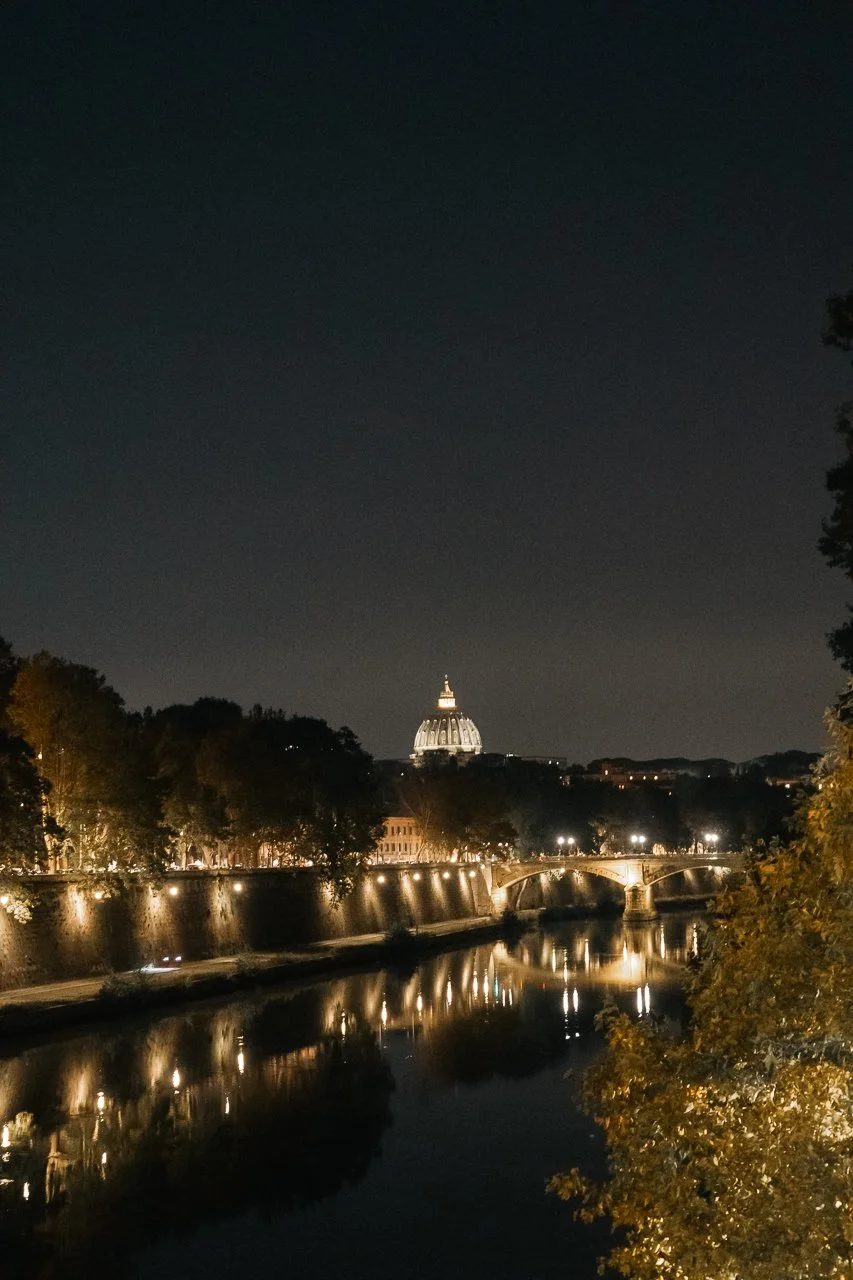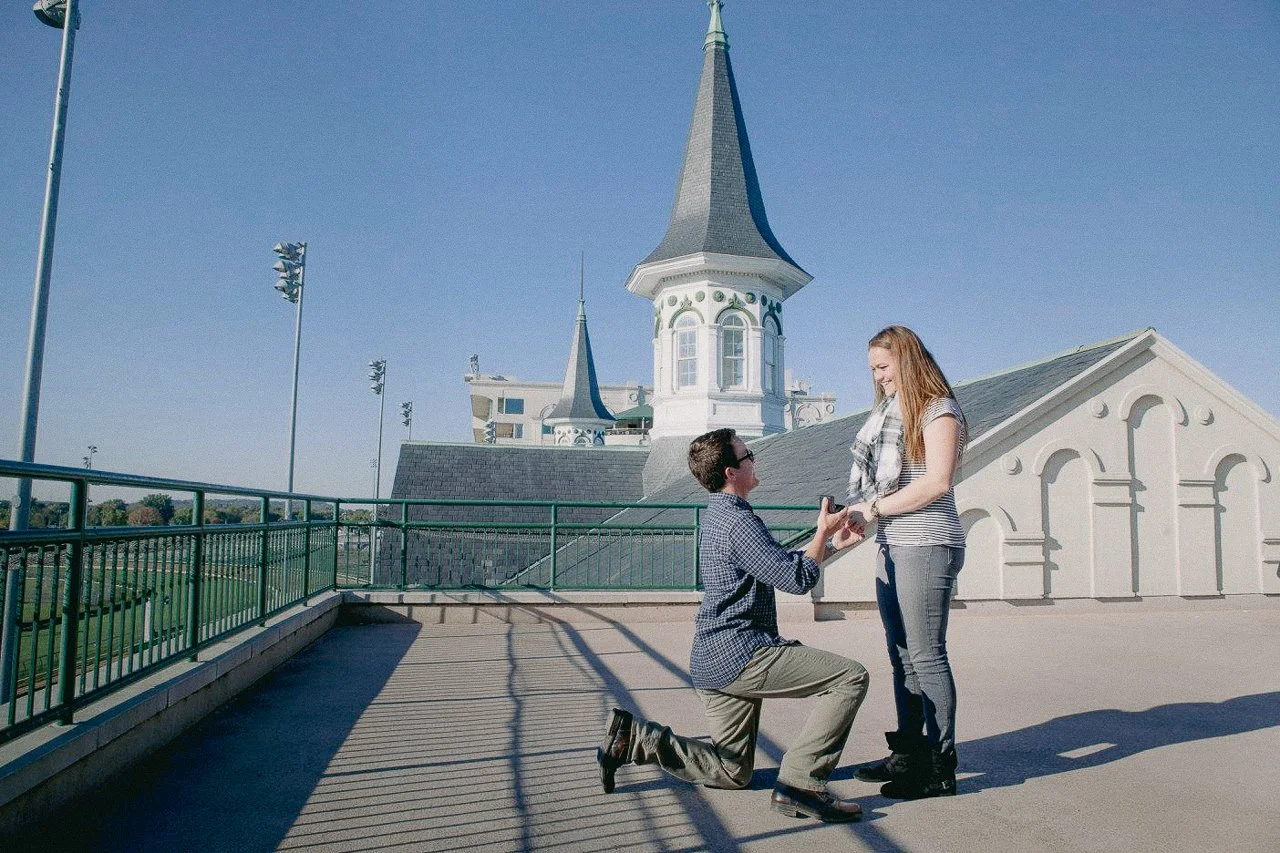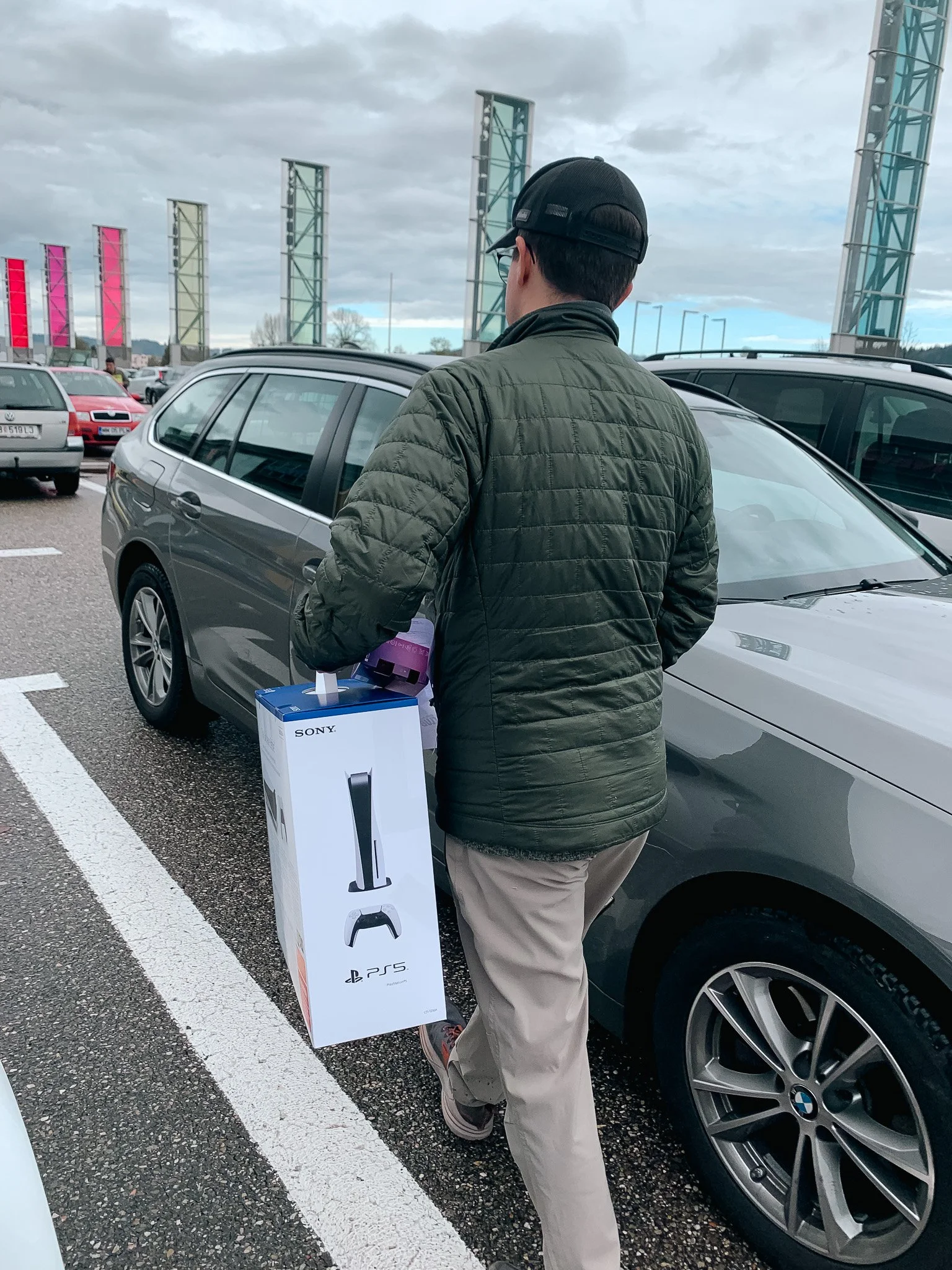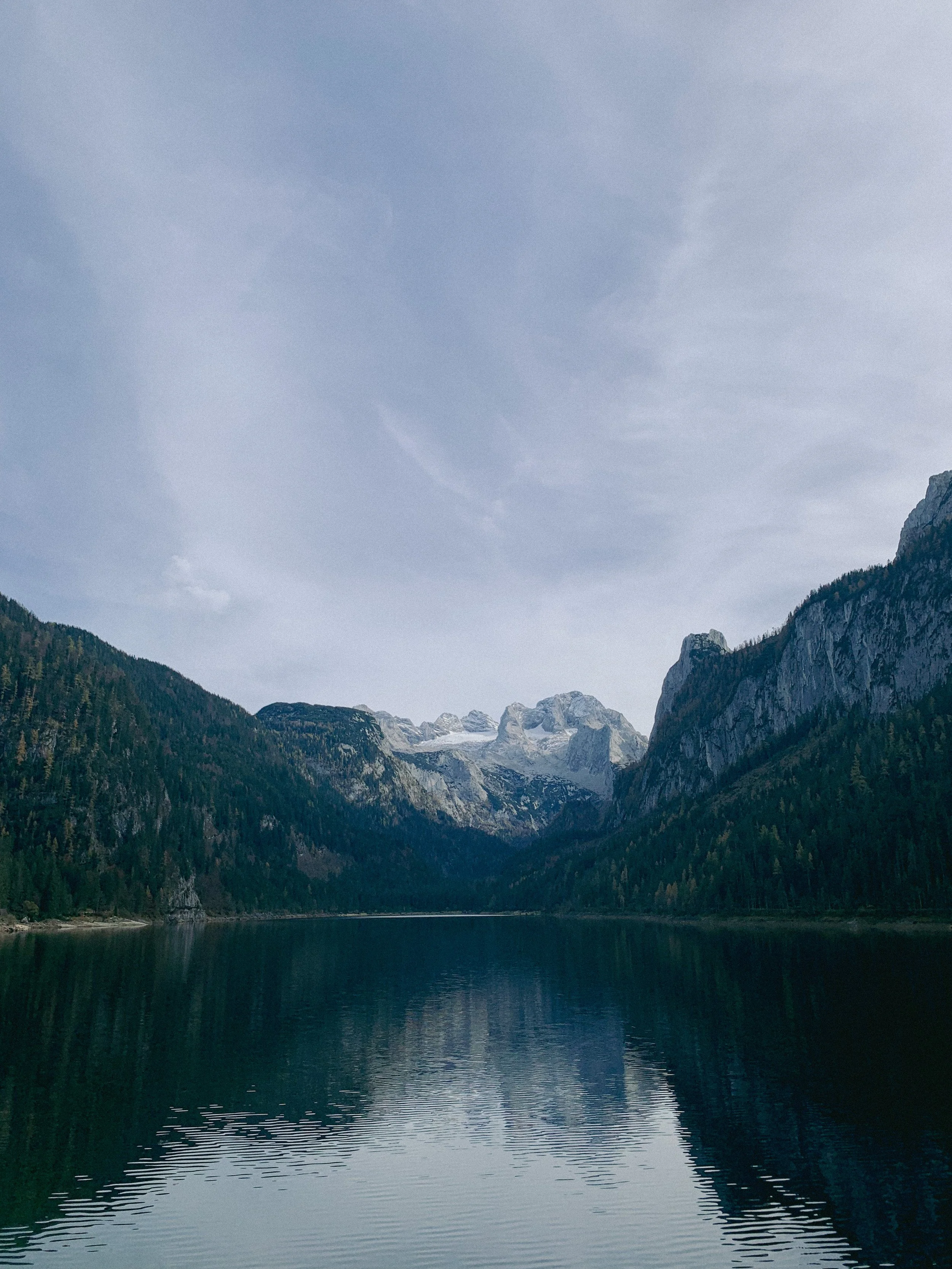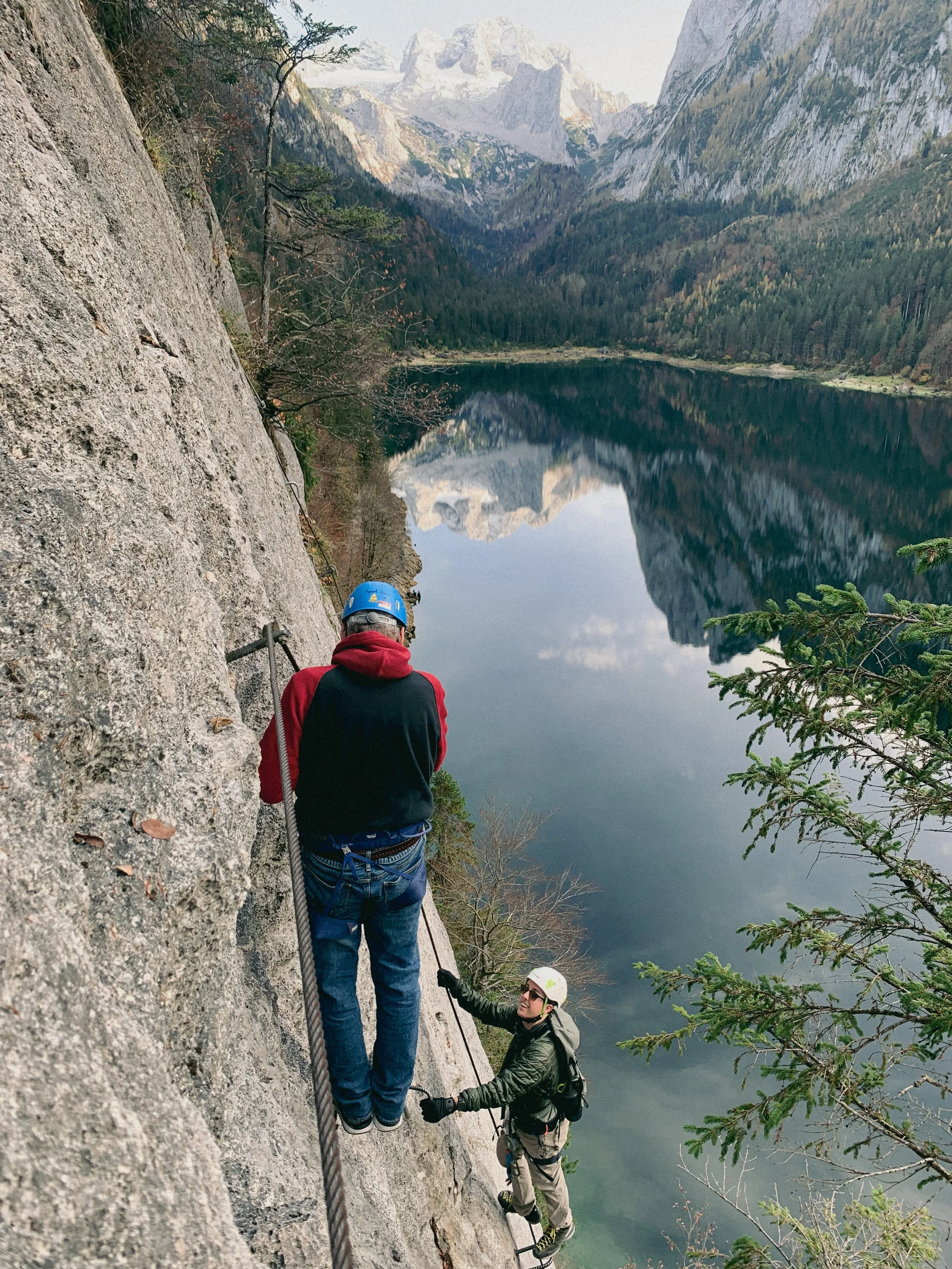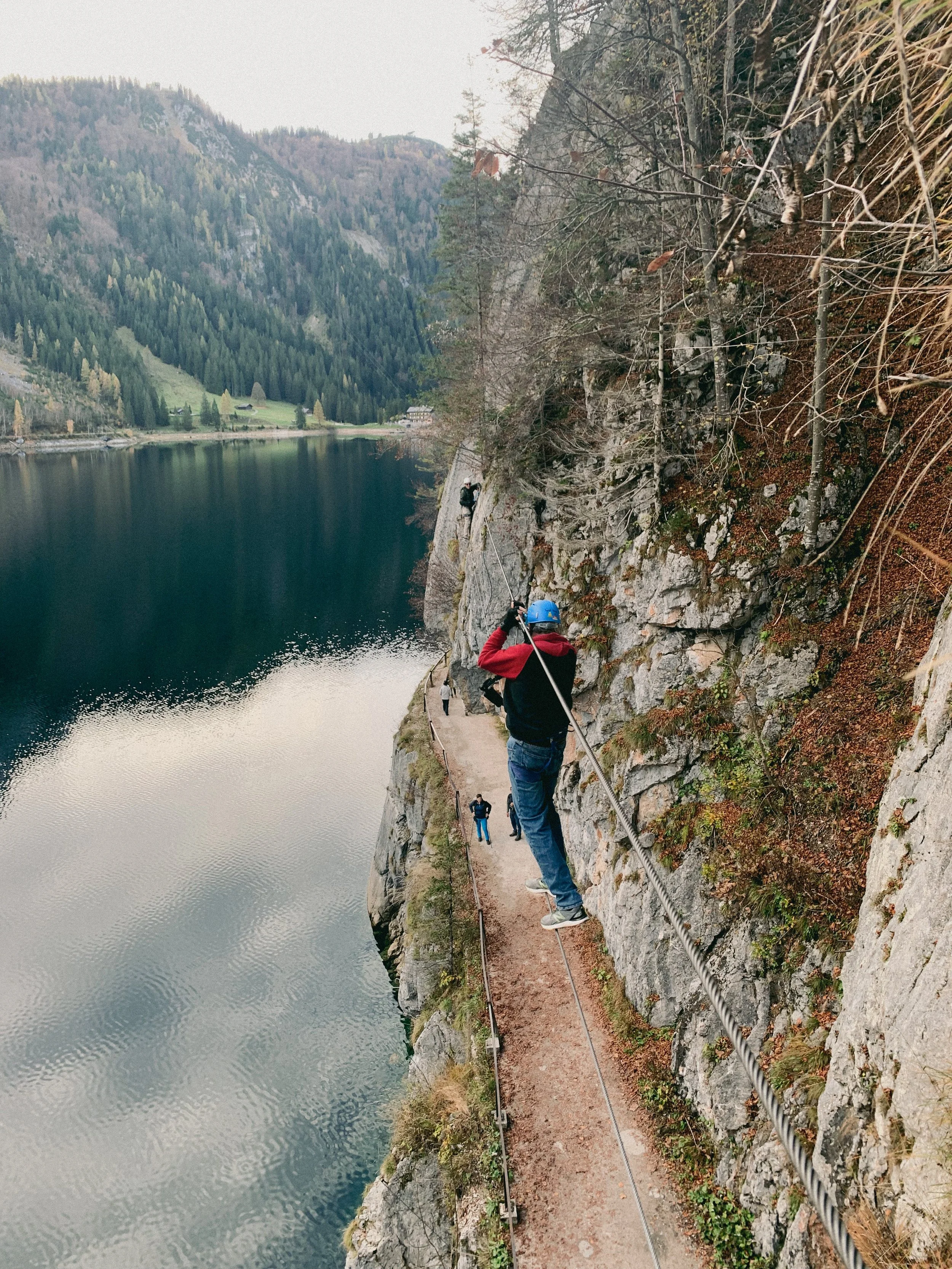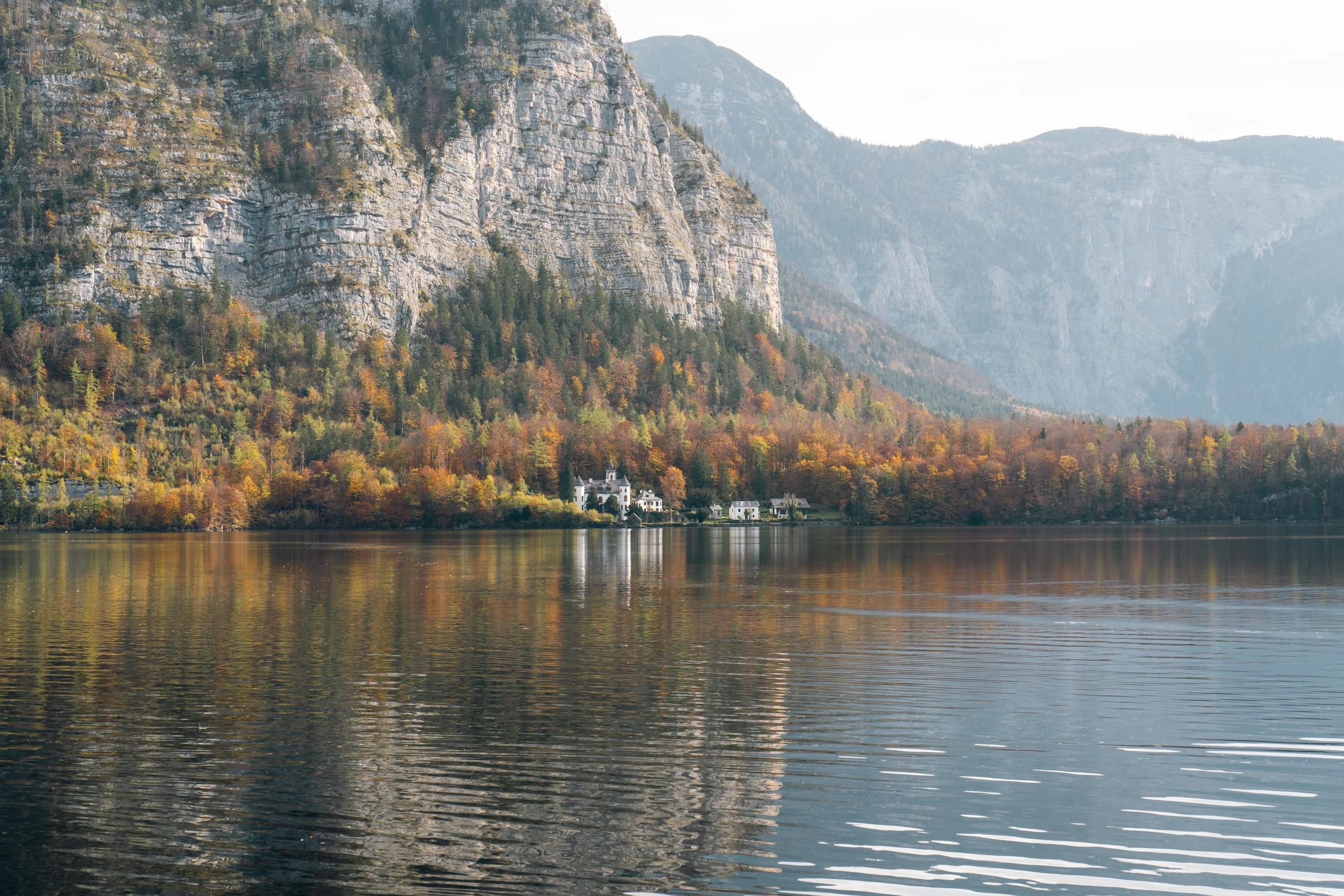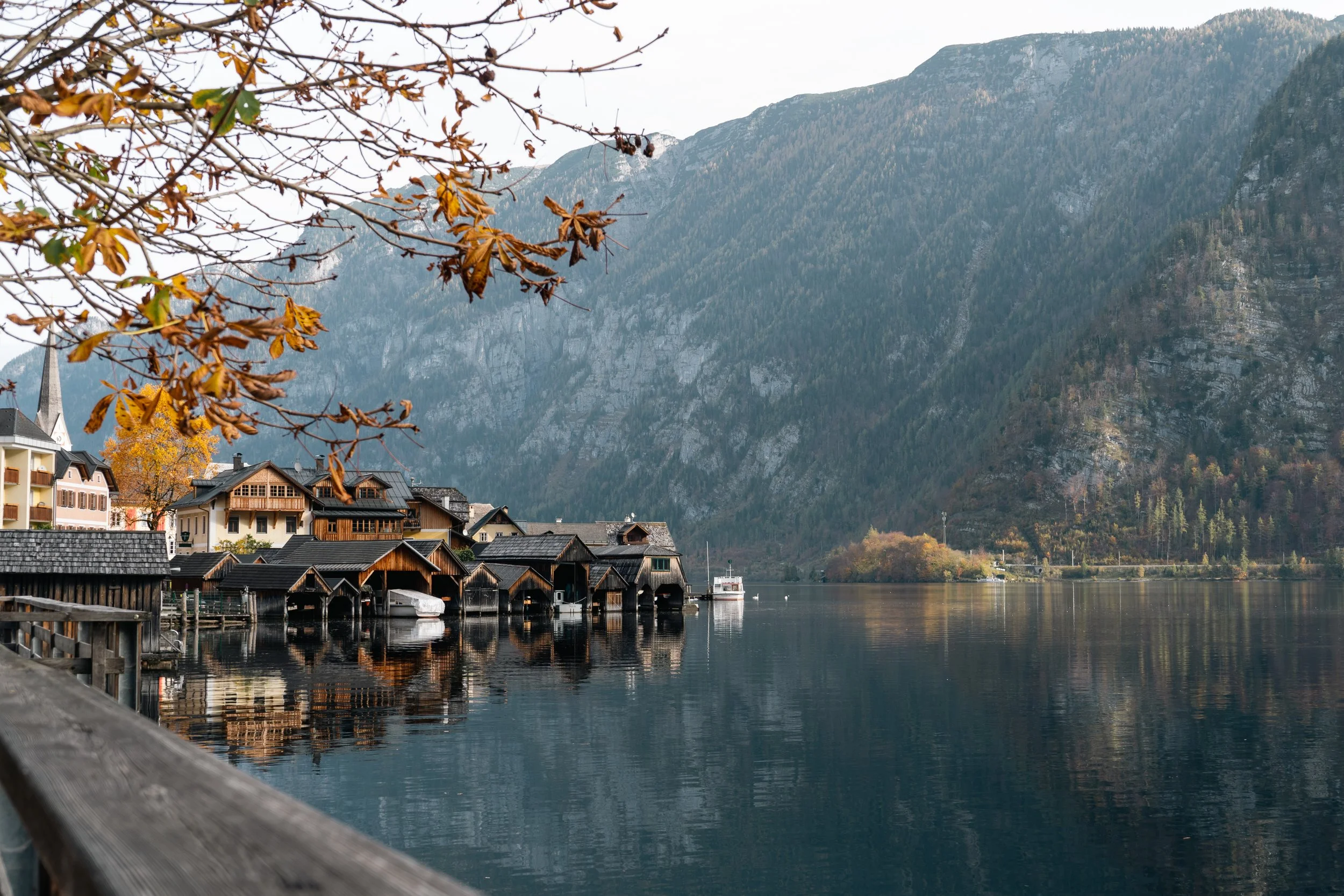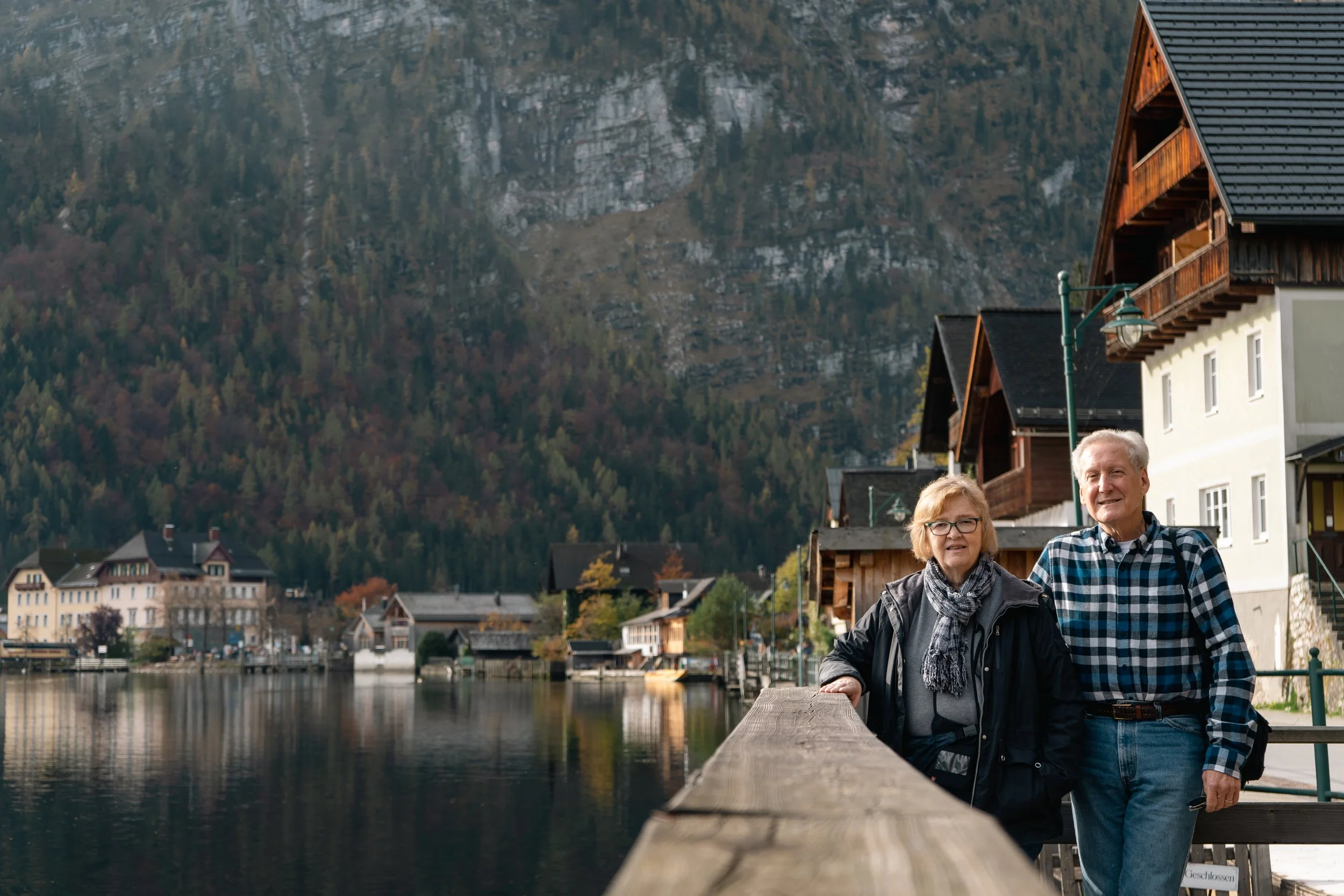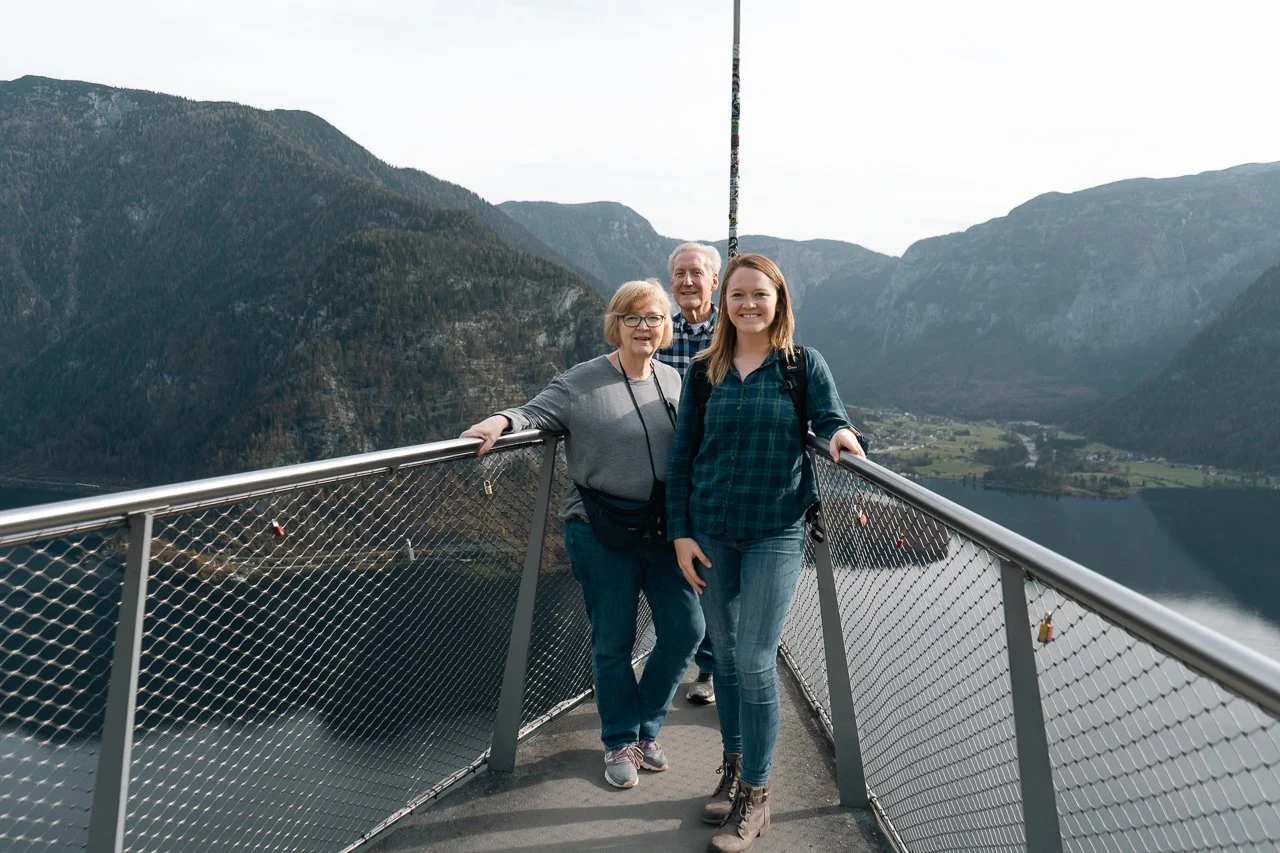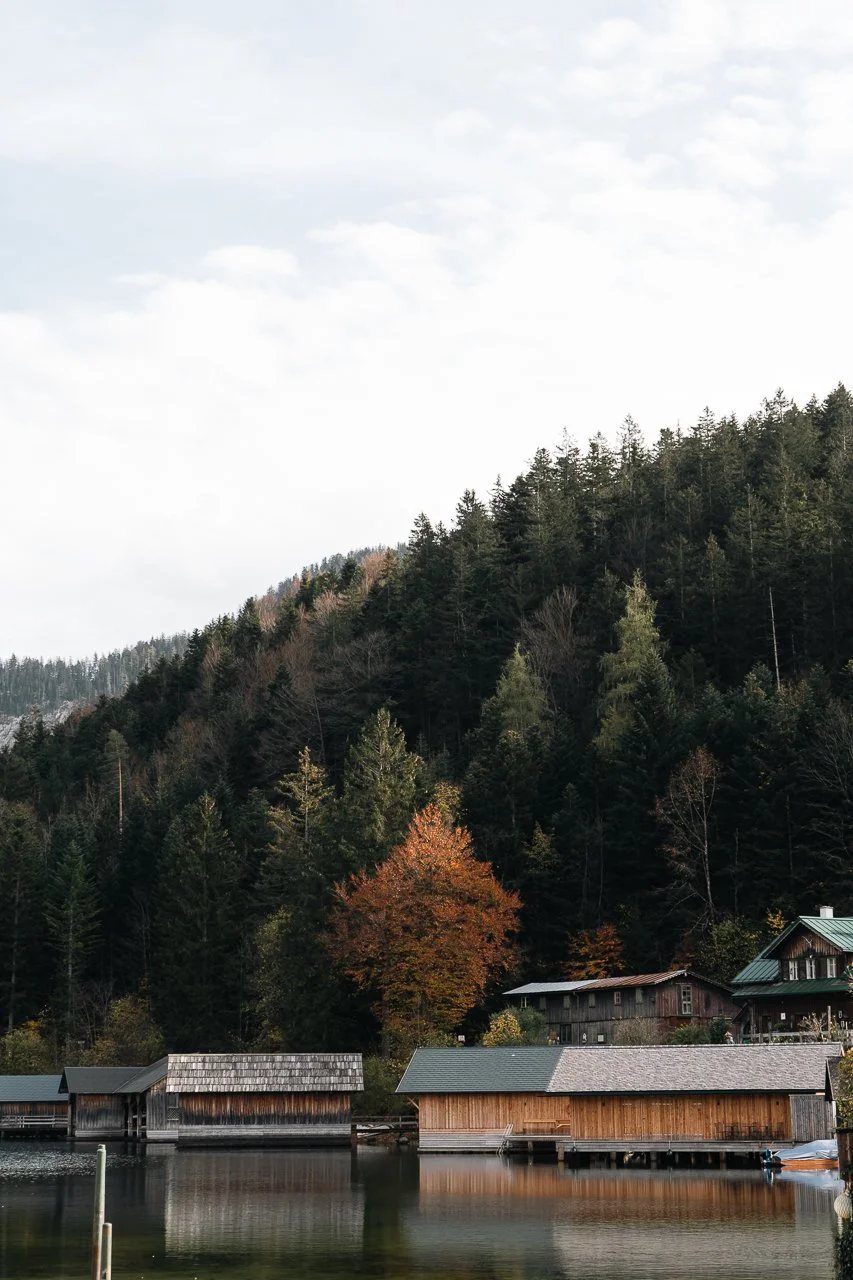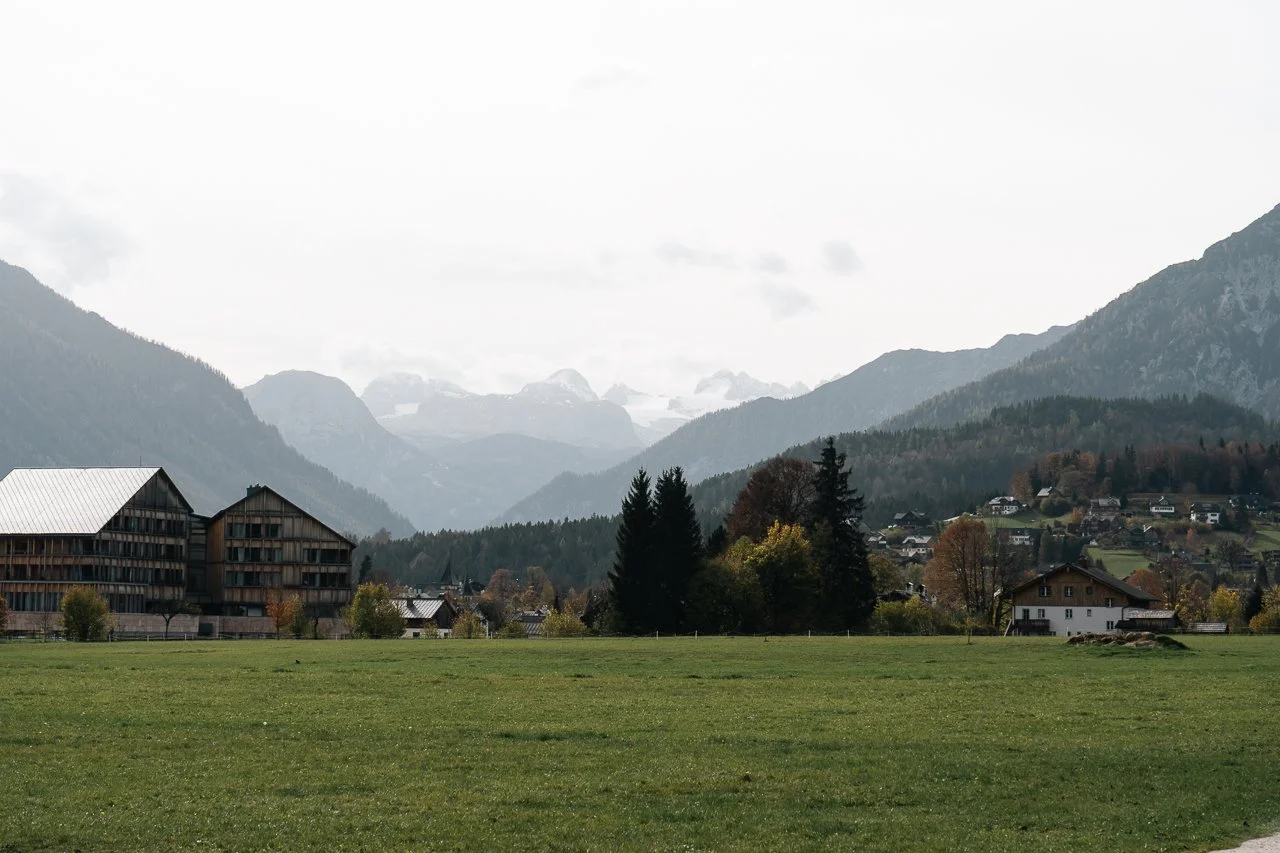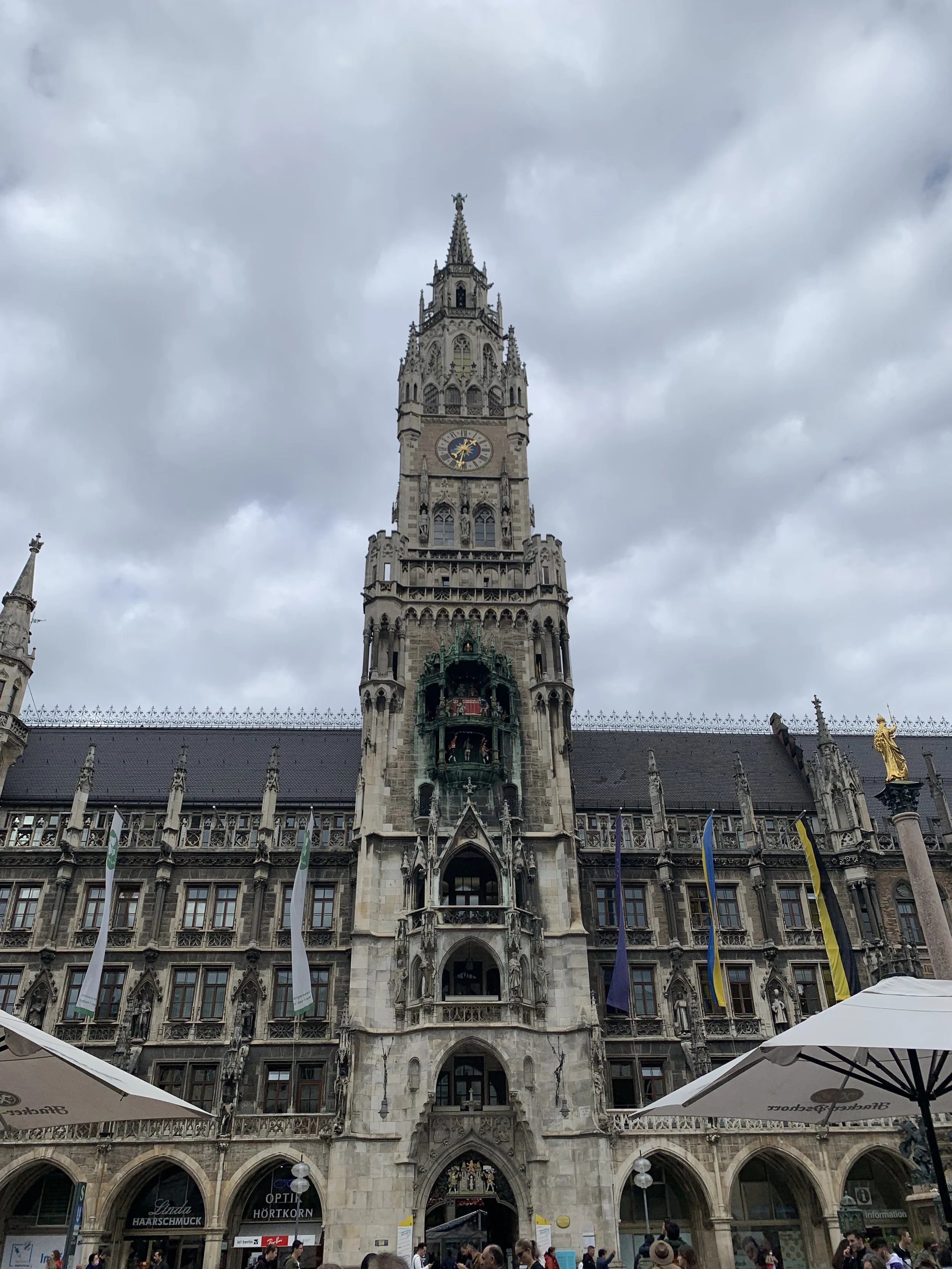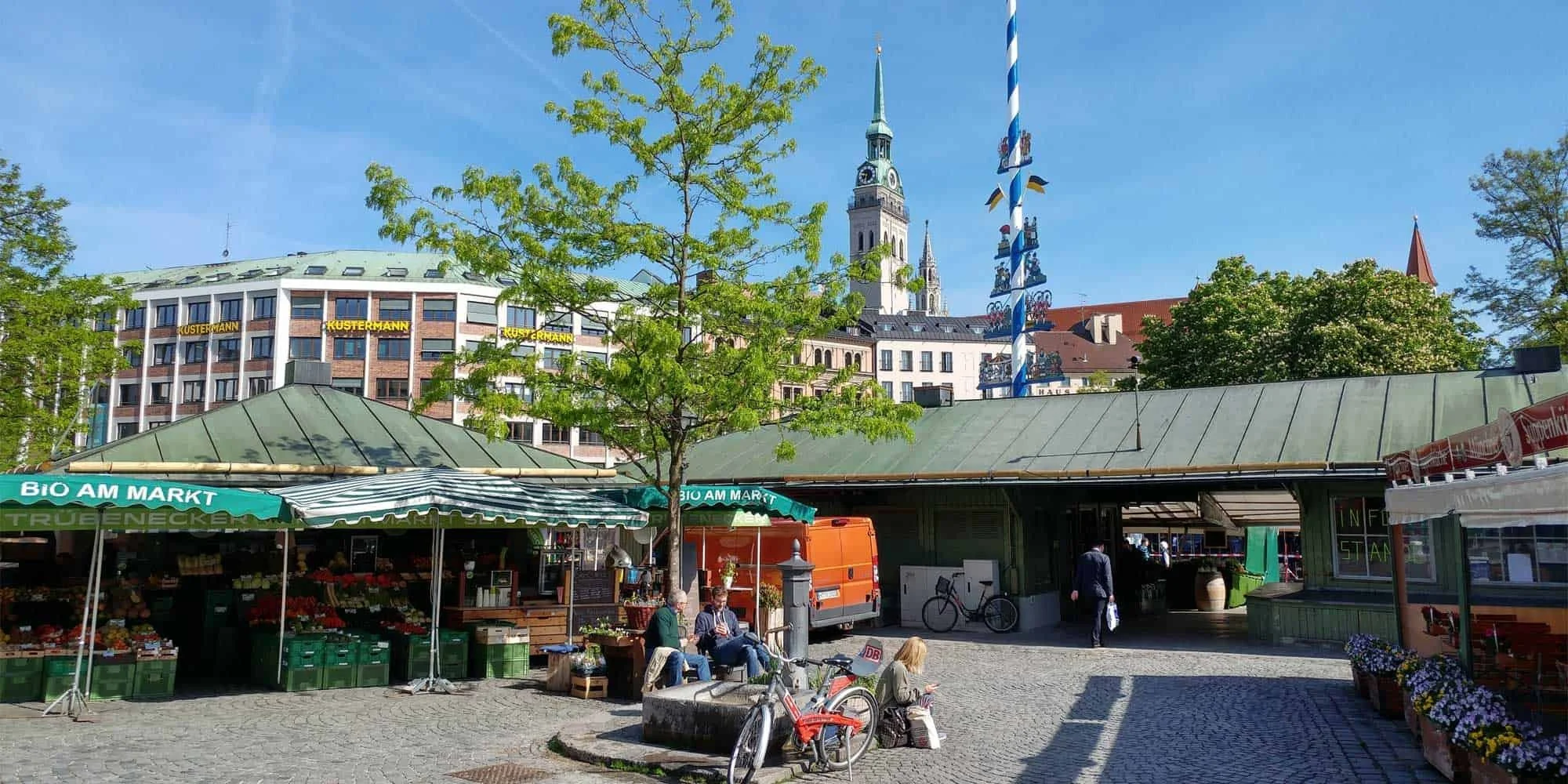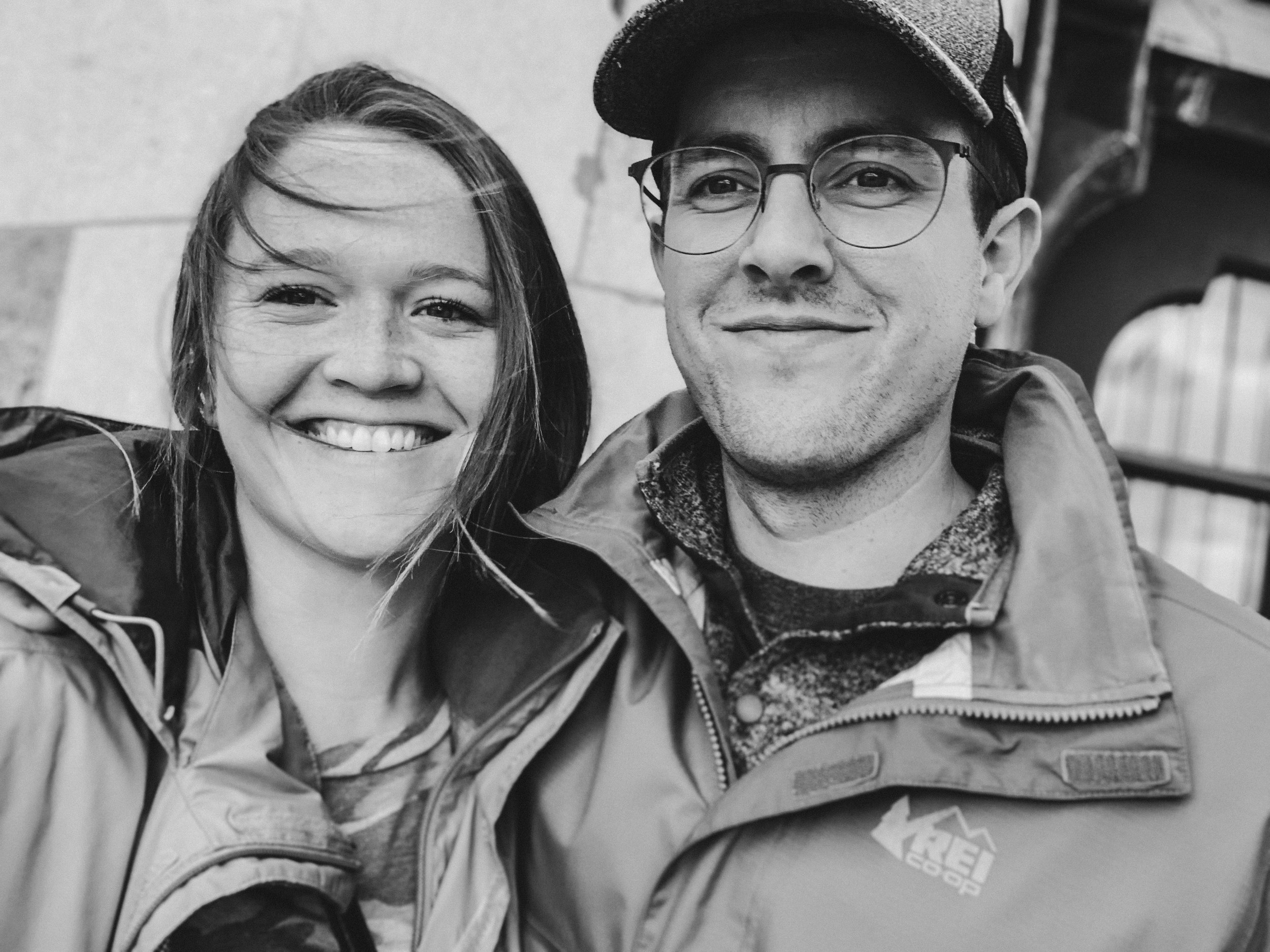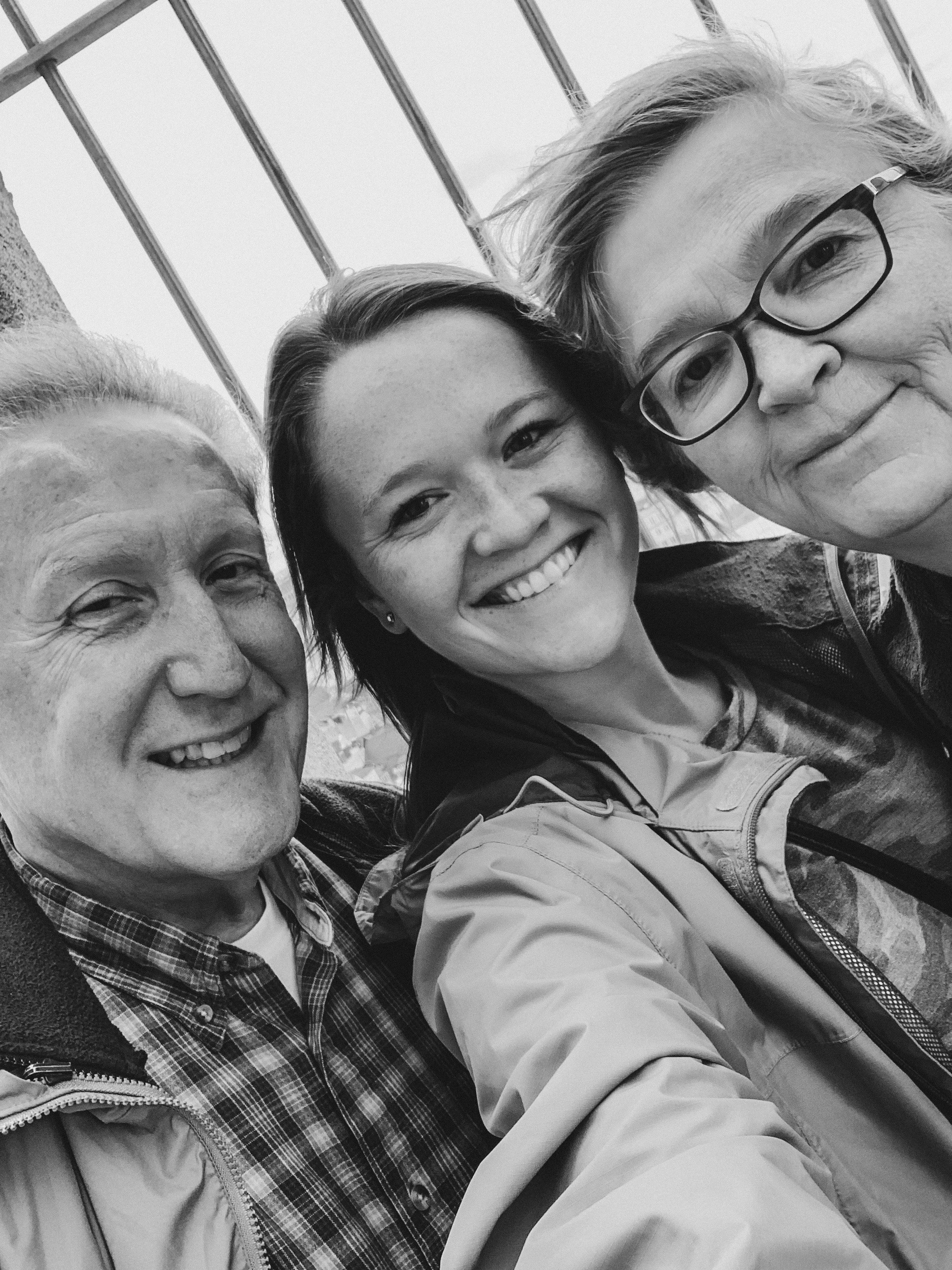Week 104-105: Florence, Rome, Vatican City, Austria, and Munich with my parents
My parents spent two weeks abroad while checking off 5 countries and 10 cities. I was able to meet up with them in their 4th city–Florence.
Florence is the birthplace of artists like Leonardo da Vinci and Michelangelo, and astronomer Galileo Galilei. It is the city where gelato and Tagliolini were created and where dozens of galleries and statues stand waiting to be seen by history and art lovers.
60% of the world's most important works of art are located in Italy and approximately half of these are in Florence.
Monday, October 17
After two trains, a plane, and a tram, I reunited with my parents outside of Florence’s Santa Maria Novella train station. I dropped my bags off at the hotel, checked out the view from their room, and we walked towards the main square.
View from my parent’s room
The Duomo
At 1:30 PM, we grabbed our first Florence gelato and stood in line at the “Almond doors” for our turn to enter the Duomo.
Our first Florence gelato
Dad and I waiting in line at the Duomo
I was surprised we had to wait in a line having already reserved our tickets, but I quickly learned the line forming is made up of people in your time slot.
Once 2 PM struck, the doors opened, and we were on our way inside. After walking through a metal detector, we began the ascent to the top.
One small section of the staircase
There are 471 steps to reach the top.
Halfway to the top, we got to take a short break along the base of the dome, where we were up-close and personal with the dome’s frescos of The Last Judgment painted by Italian artists Giorgio Vasari and Federico Zuccaro between 1572 and 1579.
The duomo’s painted ceiling
Light casting in through the windows
The final section of the staircase became quite narrow.
Almost to the top. Somewhere around step #425
471 steps later, we made it and we were rewarded with one of the most beautiful cities in the world at our feet! 360° views of Tuscany’s rolling hills and famous buildings all around us.
View from the top of the Duomo
View from the top of the Duomo
View from the top of the Duomo
Dad and I at the top of the Duomo
The Duomo of Florence is a cathedral that took 142 years to build.
The dome part of the cathedral is the largest masonry vault in the world and was built between 1420 and 1436 by Filippo Brunelleschi.
Inside the Cathedral
Inside the Cathedral
We went back to the hotel to relax on the hotel’s rooftop for a while.
Dad taking a snooze on the hotel rooftop
By 5:00 PM, we were en route to Piazzale Michelangelo.
The 30-minute walk took us down some of the oldest streets in the city and across the Arno River using the Ponte Vecchio, which is a bridge once lined with Butchers and farmers, but now occupied with jewelers, art dealers, and souvenir sellers.
Selfie by the Arno
Parents sitting on a wall along the Arno River
The Ponte Vecchio is the only bridge in Florence not destroyed during WWII.
The Ponte Vecchio
As if our 471 stair climb was not enough earlier in the day, I was pushing my parents to walk up a relatively steep hill to experience an enchanting view for sunset.
Unfortunately, everyone in Florence had the same idea so the top was packed with people and it was a challenge to find a good spot to stand.
The view from the Piazzale Michelangelo
The view from the Piazzale Michelangelo
A little patience and subtle elbow shoves can do wonders for finding a space though. If you want to have a spot for sunset, you probably need to get there two hours before sunset.
The view from the Piazzale Michelangelo
We enjoyed a yummy dinner along the Arno river and had one more gelato to cap off our first full day in Florence.
Crossing the Ponte Vecchio at night
Tuesday, October 18
This was Daisy’s 5th birthday, which I was sad to be missing, and also our 2nd day in Italy, which I was excited about!
I am learning sunrise is my favorite part of the day and since our hotel claimed to have one of the best rooftops in the city, I could not resist. At 7:15 AM, my dad and I went up, I set my tripod up and waited while we watched for the first sun rays to peak over the Florentine mountains.
Sunrise in Florence
Other early birds walking through town
At 10 AM, we joined a walking tour that included a trip to the famous Accademia Gallery where Michelangelo's Statue of David stands. The tour guide took us down the same streets we had already been on the day before, but this time we were gathering insight to make the streets, buildings and art much more meaningful.
Meeting point of our tour. The crest above is the Medici family crest.
Long archway
We couldn’t help but notice a large David sculpture in the main square. We were concerned because the whole point of this tour was to see him in the museum. The tour guide told us he was just a replica and the real one was safe and sound inside the museum.
The sculpture of Perseus holding up Medusa's severed head by Benvenuto Cellini is the only black sculpture within the open air gallery, Loggia dei Lanzi.
Hercules and the Centaur by Giambologna
We walked around the Duomo we visited the day before and the guide pointed out a large circle on the pavement which we walked over a couple of times without ever noticing it. The large circle marks the spot of an event that happened 400+ years ago. The gilded bronze ball on the top of the cathedral fell during a storm and the circle on the pavement marks the spot where it landed.
The mark where the gilded bronze ball fell
The facade and the windows of the Duomo are slightly different. This is because over the course of the 142 years it took to build it, there were multiple people involved in the execution and completion of the cathedral.
The far right window is larger than the left two
Our tour ended in front of the David sculpture. I remember seeing photos of him and hundreds of other paintings and sculptures inside the books of my college art-history class. So it was really cool to be standing in the room where the real-life sculptures were.
David
Michelangelo's “David” is often described as physical perfection. He is made of marble measuring 16 feet tall and is one of the most famous sculptures in the world. He was created to symbolize independence and strength and was a symbol of the Renaissance and a representation of Florence itself.
Mom taking a pic of David
David’s shadow casting on the wall
“The sculpture is already complete within the marble block, before I start my work. It is already there, I just have to chisel away the superfluous material.”
Standing infront of David
Standing infront of David
We left the Accademia Gallery and sat down for lunch in the heart of the historic center of Florence at Ristorante Pizzeria Canto De' Nelli. Our table was against the open windows and it was a great spot for people-watching and yummy food.
Our veggie pizza
Our time in Florence was ending so we grabbed one last gelato and a few moments on the hotel rooftop before hopping on a train to Rome.
Goodbye Florence
An hour and a half later, we arrived in Rome!
From the Roma Termini station, we bought our 72-hour transportation passes, took a metro train, and arrived at our hotel just steps away from the Spanish steps.
Since it was getting late, we quickly went back out to find a place for dinner. 10 minutes later we were standing in front of the Trevi fountain. Trevi translates to “three roads” because the fountain was constructed at the intersection of Rome's three most important streets.
The Trevi Fountain
Throwing coins into the Trevi fountain is on every tourist’s agenda. According to legend if you throw one coin: you will return to Rome. If you throw two coins: you will fall in love with an attractive Italian. If you throw three coins: you will marry the person that you met.
I guess I will be returning to Rome someday 😊
€700,000 are tossed into Rome’s Trevi Fountain each year and the proceeds are donated to help those in need.
Around the corner from the fountain was Trattoria Scavolino, a quaint restaurant down an alley and it ended up being our favorite meal in Rome.
Our dinner spot
My yummy mushroom pasta
Our dinner spot
Wednesday, October 19
Our morning started by the Spanish Steps and ended at Castel Sant’Angelo, a castle overlooking the Vatican.
During the 2.5-hour walking tour, we learned Rome is built like a lasagna and is home to 1000 churches, several Egyptian obelisks, and 300 monumental working fountains.
Fountains are a way to glorify the Popes who commissioned them and is the best way for the water supply to reach the people. The first fountain we stopped at was the Barcaccia Fountain, at the foot of the Spanish Steps.
Mom filling up her water bottle
The fountain was shaped like a boat and the guide said the water coming from the fountain is the same water the Romans used way back when. Kudos to Roman engineering and aqueducts.
“Scalinata della Trinità dei Monti” translates to “Stairway of the Trinity of the Mountains” AKA the Spanish Steps
We learned the Spanish Steps were commissioned by the French, so technically they should be called the French steps, but because it was built in the Spanish square the people adapted the name.
The Spanish Steps
We continued our walk and made a stop by the Victory Column of Marcus Aurelius. A large column to commemorate his victories over the “barbarians”. The carvings on the column illustrate battle scenes and soldiers escorting files of prisoners.
The Victory Column of Marcus Aurelius and a faint sliver of the moon above it
We stopped by the Pantheon for a 10 minute break
The Pantheon
The abbreviated Latin inscription on the Pantheon translates to "Marcus Agrippa, the son of Lucius, three times consul, built this."
The Pantheon
The Pantheon
We arrived at the Piazza Navona, a popular town square surrounded by restaurants. The most notable site in the square is the famous Fountain of the Four Rivers. The four statues represent the most important rivers of the continents where Christianity had spread; the Nile, Danube, the Ganges and Rio de la Plata.
Our guide and a real life Ms. Ungermeyer (a Lizzie McGuire reference)
A close up of the Fountain of the Four Rivers
The phrase “Rome is built like a lasagna” came up again. This square, which is built more like a long oval, is built on the site where the Stadium of Domitian once stood.
The left image shows how the stadium would look if it were above ground.
The right image shows the Piazza Navona as it stands today.
Today, the ancient ruins of the Stadium can be visited under Piazza Navona. If I ever go back to Rome, which I should be according to my coin toss into the Trevi fountain, I hope to visit the stadium under the Piazza Navona.
Our tour was coming to an end as we crossed the Tiber river and stood at Castel Sant’Angelo overlooking the entrance to the Vatican. Castel Sant’Angelo was commissioned by the Roman Emperor Hadrian as a mausoleum for himself and his family. The building was later used by the popes as a fortress and castle but is now a museum.
Crossing the Tiber
Entry into the Vatican
Our tour, unfortunately, ran 30 minutes over which made it hard to get to the next tour. In hindsight, we probably should not have booked two tours so close together, but we made it to the next tour and crossed over the Vatican border.
The Vatican is the smallest country in the world nestled inside of Rome and it is the 24th country I have been to! With 195 countries in the world, I have a lot more places to check off my list, but 24 is still pretty cool.
On Wednesdays, the Pope has a general audience in St. Peter’s Square. This means if we had really great binoculars or a super long camera lens we could have zoomed in on the Pope from where we were standing at Castel Sant’Angelo. Audiences usually consist of 10,000 people and anyone can go if they book a ticket far enough in advance.
Rows of chairs from the Pope’s audience
A walkway outside of St. Peters Basilica
The Pope’s Guards and the watchmen for the Vatican City
We entered the courtyards of the Vatican complex and to no surprise we discovered more fountains and more sculptures.
A fountain and coins
Sculptures and architecture around the Vatican gardens
Mom taking a break
The pinecone is a former fountain and it represents eternal life
Over the next 2.5 hours we explored 2,000 years of history in the Vatican Museum. Through a series of 1400 rooms, chapels, and galleries, the Vatican Museum contains the world's largest collection of art with 9 miles of art pieces. To put that into perspective, The Vatican is only .6 miles.
Walking through the Vatican Museum
Walking through the Vatican Museum
Walking through the Vatican Museum. I enjoyed all the dog frescos and sculptures.
The most famous artwork is on the ceiling of the Sistine Chapel which was the last room we walked through in the museum.
Photos are prohibited and speaking at any level is not permitted inside the Sistine Chapel so before we entered the Vatican museum, our guide explained what we would see on the ceiling once we stepped inside.
A guide to the Sistine Chapel
A guide to the Sistine Chapel
Standing in the Sistine Chapel in the presence of Michelangelo’s frescoes and Raphael’s tapestries was a lot like Michelangelo’s ‘David’–perfection.
Michelangelo was 33 when he painted the Chapel’s ceiling. Makes me wonder what I will have accomplished by the time I reach 33.
For the final part of the tour, we entered St. Peters Basilica the largest catholic church in the world. There are 9 other chapels within the church.
Inside the Cathedral
Along the marble floor to the main altar, there are golden stars that indicate the lengths of other Catholic Churches scattered around the world such as the Notre Dame in Paris, the Duomo di Milano in Milan, and the Cathedral of St. John the Divine in New York.
The altar
To the right of the basilica’s entrance is the world’s most famous religious sculpture sculpted by Michelangelo– the Pieta. He carved it when he was 24 years old, and it is the only one he ever signed.
The Pieta carved by Michelangelo
It was a long day full of walking, history, and art.
We took the metro back towards our hotel and ate dinner along one of the narrow streets nearby.
Standing in St. Peters Square
The Column of the Immaculate Conception
Thursday, October 20
This was Eric and my two-year anniversary of moving abroad which I wrote about here and our third day in Rome!
At 10 AM, we walked to the Pantheon. On our walking tour the day before, we only had 10 minutes and used our time to take a break and sit. This time we went inside.
The Pantheon
The Pantheon is a former Roman temple turned Catholic church.
Inside the Pantheon
We wanted to save our feet, so we took a bus to Campidoglio. The square was designed by Michelangelo and sits on one of the Seven Hills of Rome.
Campidoglio
Today, the Campidoglio is home to the seat of the Senate, government base of ancient Rome, and site of numerous religious shrines. This Hill, together with the Palatine Hill, marks the site of the early settlement of the Romans.
The Campidoglio square
The views from the hill offer a nice view of the Colosseum, the Roman Forum, and the Temple of Saturn.
Views from Campidoglio
We got back on a bus to take us to the Colosseum for our afternoon tour however we got on the right bus going in the wrong direction. So after an hour bus ride which took us back to the Vatican (oops) we got off a few feet away from the Colosseum.
Standing on marble, pretending to be a sculpture outside of the Colosseum
Our tour began at 2:50 PM.
The colosseum
The same entrance gladiators would walk through
Family photo inside the Colosseum
During the tour, we learned about the life of a gladiator and the construction of the Colosseum. Usually, the arena floor is off-limits, but we were allowed to go down and imagine the roaring crowds from the gladiators’ perspective. The guide also shared insight into how a gladiator’s life could be spared if the proper hand gesture was given.
Close up of the underground area where animals and gladiators would be kept
The Colosseum
The Colosseum
Family photo outside of the Colosseum
The tour was over and we were walking towards our bus stop as we passed Circus Maximus, an ancient Roman chariot-racing stadium.
Circus Maximus
Dad inside the Circus Maximus
For our last night in Rome, we went off the beaten path and joined the Trastevere Street Food and History Tour. For 2.5 hours we walked the streets of the Jewish Ghetto and cobbled streets of Trastevere enjoying yummy Italian foods.
The Trastevere district
At 6:15, we were standing in front of our first food tasting.
Fried Artichoke from Sheva
Our Fried Artichokes
Our tour guide at the first food stop
Around the corner from our first food stop stands the “Portico d’Ottavia“, a structure used as a fish market from the medieval period up to the end of the 19th century.
The Portico d’Ottavia
During WWII, the German government told the Roman Jews they needed to donate their gold in order to not be deported to the concentration camps. Even though the Jewish community raised the required amount, Nazi soldiers still entered the neighborhood on October 16th, 1943, and deported 1000+ people. Only 16 managed to survive.
The sign reads “From Italy to Auschwitz”. This is an exhibition talking about the deportation of roman jews.
The second food tasting stop was a sweet one from a local bakery.
Cookies and biscuits from Biscottificio Artigiano Innocenti
Cookies and biscuits
We finally reached the savory portion of the tasting tour.
Suppli
A deep fried rice ball consisting of rice, tomato sauce, cheese, and meat. Since I am vegetarian, I was given one filled with rice, cheese, and peppers and it was really yummy!
My vegetarian Suppli
We walked through a Piazza Trilussa, a lively square where musicians and people come to hangout.
Piazza Trilussa
Piazza Trilussa
For the fourth and fifth tasting:
Margherita Pizza
Focaccia bread
Our guide shared a story about the invention of the Margherita pizza.
Invented in 1889, the pizza was created in honor of Italy's unification, with the three toppings—basil, mozzarella, and tomato—respectively representing the green, white, and red of the Italian flag.
Margherita Pizza
Focaccia bread
Our final tasting
Gelato from Günther
We ate our fair share of gelato on this trip, but it was exactly what we were hoping to have for our final tasting on the tour.
In line for Gelato
Gelato
St. Peters Basilica from Trastevere
Friday, October 21
After 5 days of Italian history, art, food, and adventure, it was time for us to travel back to Austria. 5 trains and 1 plane later, we made it to Gmunden.
Saturday, October 22
Eric and I woke up early and drove to a local Gmunden bakery, Grellinger, to pick up a surprise cake for my mom’s birthday.
Yummy Austrian birthday cake
When I ordered the cake, I asked for a chocolate cake with fruit and “Alles Gute Zum Geburtstag” which is the German phrase for happy birthday. Its literal translation is “All good on your birthday”.
The cake decorator really outdid herself. It was almost too pretty to eat but of course, we ate it up.
My mom’s birthday has had an extra special meaning for me and Eric the past few years as it marks the anniversary of the day Eric proposed to me!
Throwback to the day Eric proposed ❤️
While we were eating cake, I casually mentioned seeing a guy in the train station the day before carrying a PS5. Not 30 minutes after I mentioned it were on our way to the mall to try and find one for Eric.
We were expecting to just add his name to a list, but the store employee said they had them in stock and with his eyes wide and mouth agape, Eric said “I’ll take it.”
Eric with his new PS5
Sunday, October 23
My dad has been interested in the via ferratas since we started posting about them, so this was a perfect opportunity to take him on a climb with us! We had to make a pitstop in Hallstatt to pick up the rental climbing gear and then we drove to Gosau to climb the Laserer Alpin. This is one of our favorite places in Austria because of its views, hikes, and climbing options.
Gosausee
Eric already climbed in Week 77-78 but I did not, so I was excited to get to do it this time around.
Eric helping my dad maneuver the Gosau via ferrata
Dad crossing the high wire
Monday, October 24
We started our morning off in Hallstatt because we had to return the climbing gear.
Hallstatt
Hallstatt
Mom and Dad in Hallstatt
After a slow stroll through town, we took the funicular up to the lookout point to enjoy the view and an Apfelstrudel.
The top of Hallstatt
Views from Altaussee
Views from Altaussee
Tuesday, October 25
After so much traveling and so many adventures, rest days were needed and this was one of those days.
For the last night in Austria, we went out for dinner to Hotel Post. What was once a post office in 1327 is now one of the best places to eat near Gmunden.
Wednesday, October 26
Our final day together also marked Austria’s national holiday which means Eric had the day off. We drove to Munich to spend our final day together before my parent’s flight back to America.
At 11 AM, we arrived in Munich. Without much time to explore the city, we stuck to the central square of Marienplatz which has been the city's main square since 1158.
The Munich Glockenspiel in Marienplatz
Just a block away from the main square is the Viktualienmarkt. This market was once a farmer’s market and has grown into the largest historic food market in Munich. It is listed as a must-see spot and home to 140 food stalls and shops, a maypole, and commemorative fountains.
Munich’s Viktualienmarkt
Just before noon, we entered the historic beer hall at the original Hofbrauhaus and slid into one of the long wooden benches. When the clock struck 12, the muffled chatter from the people seated around us was overpowered by the Oompah band’s accordion, trumpet, and tuba. The Oompah band is a Bavarian-style band that plays traditional foot-stomping, head-nodding, thigh-slapping German tunes.
Outside of the Hofbrauhaus
After lunch, we took two elevators which took us 275 feet to the top of the new town hall. Eric and I have been to Munich two other times, but never knew about the tower lookout. From the lookout point, we were able to see the entire city and the faint Alps rising far out in the distance.
Munich from above
As we stood in the tower looking out at the city, it’s easy to notice there are zero sky scrapers and there is a reason for this. The sky is not the limit when it comes to Munich’s architecture. The onion domes of the Marienkirche are actually the limit.
German law wants the historical skylines to be kept as they are because they are part of the German cultural heritage. No buildings are able to surpass the 100-meter-high towers of the church.
Eric and I
Dad, Me, Mom
Year three is off to a great start and by the time I share this post, Eric’s dad will be here!

